The little plovers that could
Monty and Rose, June 23, 2020 - Photo credit: Tamima Itani
Chicago, May 15, 2022 -- On May 13, 2022, Chicago’s beloved Piping Plover Monty passed away. He was observed in distress, and died shortly thereafter. The Lincoln Park Zoo is currently doing pathology testing to determine the cause of death and tissue was collected to allow for full genetic testing as part of a genetic study on the Great Lakes Piping Plover. Monty will be donated to the Field Museum which holds one of the world’s foremost bird collections and is able to conduct highly valuable research that helps advance bird and environmental science. In death as in life, Monty will continue to be an advocate for the Great Lakes Piping Plovers.
Monty and his partner Rose have been followed by the Chicago community for over three years and Monty’s loss was a heartbreak to many. Rose has not returned from her wintering grounds in Florida; we continue to wait, but with each passing day, it becomes less likely that she will return. A celebration of their lives is being planned, a simple event that will bring together their friends to share fond memories. The date and specifics of that event will be shared as soon as they are finalized and will be shared on this website and all related social media platforms.
Piping Plover can live to be 15-16 yrs old. However, the average lifespan is 5 yrs old, primarily due to predation at an early age. Monty and Rose both hatched in June, 2017.
We are forever indebted to every person who helped in the effort to support Monty and Rose in their nesting and parenting efforts: the agencies personnel, the devoted volunteers, the friends on wintering grounds who kept tabs of their whereabouts, the formidable team of the Great Lakes Piping Plover Recovery Effort, the passionate fans and the supportive media that shared their story. To name one name is to miss scores of others. Know that each of you was pivotal in the success of Monty and Rose at Montrose. Thanks to Monty and Rose, we have all struck new friendships with kindred spirits in the Chicago area, the Great Lakes and across states in our common love and care for these special birds.
Their beginnings
Long before Monty and Rose were Monty and Rose, they were two precious Piping Plovers of the endangered Great Lakes Population.
Rose hatched in 2017, at Muskegon State Park on Lake Michigan in Michigan, to Mom Bahama Mama and Dad Little Guy.
When she was only a few weeks old, she flew to Illinois, where she spent a few days at Waukegan Municipal Beach in August 2017. Guess who was there at the same time? You guessed it…Monty!
Rose, 7 weeks old, July 1, 2017 - Photo credit: Emma England
Monty had hatched just a few days after Rose, at Silver Lake State Park in Michigan, about 50 miles north of Muskegon State Park. He too traveled to Waukegan Municipal Beach in August 2017.
Monty, July 31, 2017, 7 weeks old. Photo credit: Emma England.
The two young plovers must have made a strong impression on each other, as in the spring of 2018 they returned to Waukegan and mated and nested in the gravel parking lot across from the beach. Unfortunately, the location was too precarious to see a nest through incubation. The eggs were collected and taken to the Pellston Biological Station in Michigan. One egg hatched. The chick was reared in captivity and released in the wild, but was sadly never seen again.
With their nesting interrupted, Monty and Rose lingered on, then flew south to Montrose Beach where they wrapped up the summer of 2018. Rose went on to her winter home at Anclote Key in Florida, while Monty returned to his wintering grounds at Bolivar Flats and Galveston Island in TX.
2019
Montrose must have struck them as a good place to nest, as it is there that they reunited at the end of May, 2019. Monty fiercely chased away another male who was showing interest in Rose, then proceeded to court Rose and scrape nests for her. I was at Montrose Beach on the evening of June 3rd, 2019, and witnessed their courtship and scraping. Having to alert a number of people, I grew tired of referring to them by their band colors and numbers on phone calls, in emails and texts and I spontaneously named the male Monty and the female Rose, after Montrose. The names stuck and have been used since.
For most of us, those early days were our first time observing Piping Plovers courting and mating. Monty’s courtship dance was magnificent. Body erect and chest puffed, he would kick his legs high up in the air in rapid succession, gently tapping Rose’s flank, while piping in excitement. Thank goodness for all the videos made of that courtship dance over the years!
Many doubted that the two tiny birds could succeed nesting at Montrose. Their nest was directly on the beach and could fit in the palm of one’s hand, highly innocuous unless one had witnessed them scraping and courting there. That first night, a women’s ultimate frisbee league was scheduled to play in the nest area. The players were understanding, agreeing to avoid the nest area. The next day, the men’s league was equally understanding. We gathered all the trash cans available on the beach and created a parameter to protect the nest.
On June 6, 2019, Rose laid the first egg, spurring the FWS (Louise Clemency and Kris Lah), the IDNR (Brad Semel) and the Chicago Park District (Jason Steger) into action. Psychological fencing was installed; signs were posted. Within a few days, the clutch of four eggs was complete and incubation started. An exclosure was installed to keep predators out. The nest was close to a busy walkway and a tiered wall where people could sit. Monty did not like it when people stood directly in front of the nest to take photos. Did he view the cameras lens as a predator’s eye? Over time, he seemed to get more used to the adoring fans and the long lenses.
2019 first nest with first egg. - Photo credit: Tamima Itani
Excitement mounted. Three birding societies took the lead in organizing a monitoring effort: the Illinois Ornithological Society, represented by Matthew Cvetas, Matt Igleski and Tamima Itani, the Chicago Ornithological Society, represented by Carl Giometti and Edward Warden, and the Chicago Audubon Society, represented by Judy Pollock and Judy Cheske. A call for volunteers was made, and soon we had a full monitoring schedule, with two volunteers per two-hour shifts, from 6 am to 8:30 pm every day.
All seemed to be going well, until the weather forecast predicted a big storm with strong lake surges. The Fish and Wildlife Service (FWS) made the difficult decision to collect the eggs and take them to the Lincoln Park Zoo. By the next morning, the entire beach and the nest were under water and the eggs would have drowned. Monty and Rose stood on the nearby boardwalk, looking a bit despondent. But in an early sign of their character and resilience, Monty would proceed to scrape 17 nests over the following days. Rose settled on a lovely location by the Bank Swallows nesting colony, higher on the beach and not affected by the recent flood. It was a great location…except for the beach volleyball courts a few feet away. A few poles and nets were removed, creating a safety zone for the two would-be parents. Thus started the “remodeling” that would become the hallmark of Rose and Monty’s tenure at Montrose, with protected areas progressively being expanded to give them and their chicks adequate nesting and growing space. This will be one of their most important legacies at Montrose.
Rose was observed feeding at length, likely regaining her nutrient stores for the new clutch of 4 eggs she laid. Both she and Monty took on incubation duties, tolerating the commotion created by music blaring, volley balls erring into their small protected areas and hot weather. They nested through the July 4th fireworks, with Rose incubating the eggs for most of the night while Monty sheltered on the protected beach. A small army of volunteers was recruited to make sure the nest would remain safe through the holiday celebrations.
The moment we barely dared hope for arrived. On July 17, 2019, the first egg hatched. Oh what a wonder it was to see the tiny – tiny! – chick emerge out of the nest! Within a day, two more eggs hatched. The last one did not and was abandoned by Monty and Rose.
The two fast became doting parents. Piping Plovers chicks are precocial, able to feed themselves and walk around soon after hatching. Mom and Dad guided them to rich food locations, warned them of predators, chased nearby gulls and Killdeer and spread their wings to shelter their babies from sun and heat. What a joy it was to try to count how many legs Monty and Rose sprouted on any given day – theirs and those of the little ones brooding under them. The chicks grew fast, doubling in size in what seemed like the blink of an eye. Visiting humans referred to them as little puffs on sticks, or variations thereof. People of all ages who were not birders or interested in birds would stop by to ask what the commotion was all about. A single look in a spotting spot transformed a cynical face into an expression of wonderment at the beauty and cuteness of the little family.
Rose with chicks, July 24, 2019 - Photo credit: Tamima Itani
Monty soon encouraged Rose to leave for her wintering grounds. It was already August and Rose had laid eight eggs, an extraordinary expenditure of energy for such a small bird. Like other female shorebirds, she needed as much time as possible before the following breeding season to rest and feed. She had given her chicks much attention and care, but it was now time for her to leave. She took off and Monty continued on with his fathering duties.
Sadly, one of the little ones took ill one Sunday, ten days after hatching. It was taken to the Lincoln Park Zoo for care, but unfortunately succumbed within a day, of a bacterial infection.
The remaining two chicks continued to grow, testing their wings, making little hop flights, feeding in the nearby fluddle and hanging with Dad. The decision was made to not band them, as Great Lakes plovers typically are, because they had already been exposed to so much stimulation in their urban environment.
On August 10, 2019, both chicks reached 23 days. The Piping Plover Recovery Program recorded Chicago as having officially fledged two chicks, the first time since 1948, or in 71 years. Monty and Rose, the little plovers that could, had defied the odds stacked against them and several layers of adversity to hatch and fledge two beautiful Piping Plovers. The chicks were soon flying all over Montrose, feeding along the shore, delighting the community of doting volunteers, birders and admirers. A concert that had been planned to take place on the beach propelled them into the news and rallied over 6000 supporters against holding the concert at Montrose. Another win for the mighty Piping Plovers and for conservation!
The 2019 chicks on August 10, 2019, the day they fledged - Photo credit: Tamima Itani
Soon, one chick left and then the other, wrapping up a miraculous nesting season and creating hope for the next one. As they were not banded, their wintering locations could not be determined. The following season, a few unbanded Piping Plovers returned to the Great Lakes and nested. We will likely never know if any of them were the offspring of Monty and Rose.
A special thanks to all the 2019 volunteers, who learned on the go as we all did and participated in the living experiment of Piping Plovers nesting in a highly urban environment.
Photos of the 2019 family - Photos credit: Tamima Itani
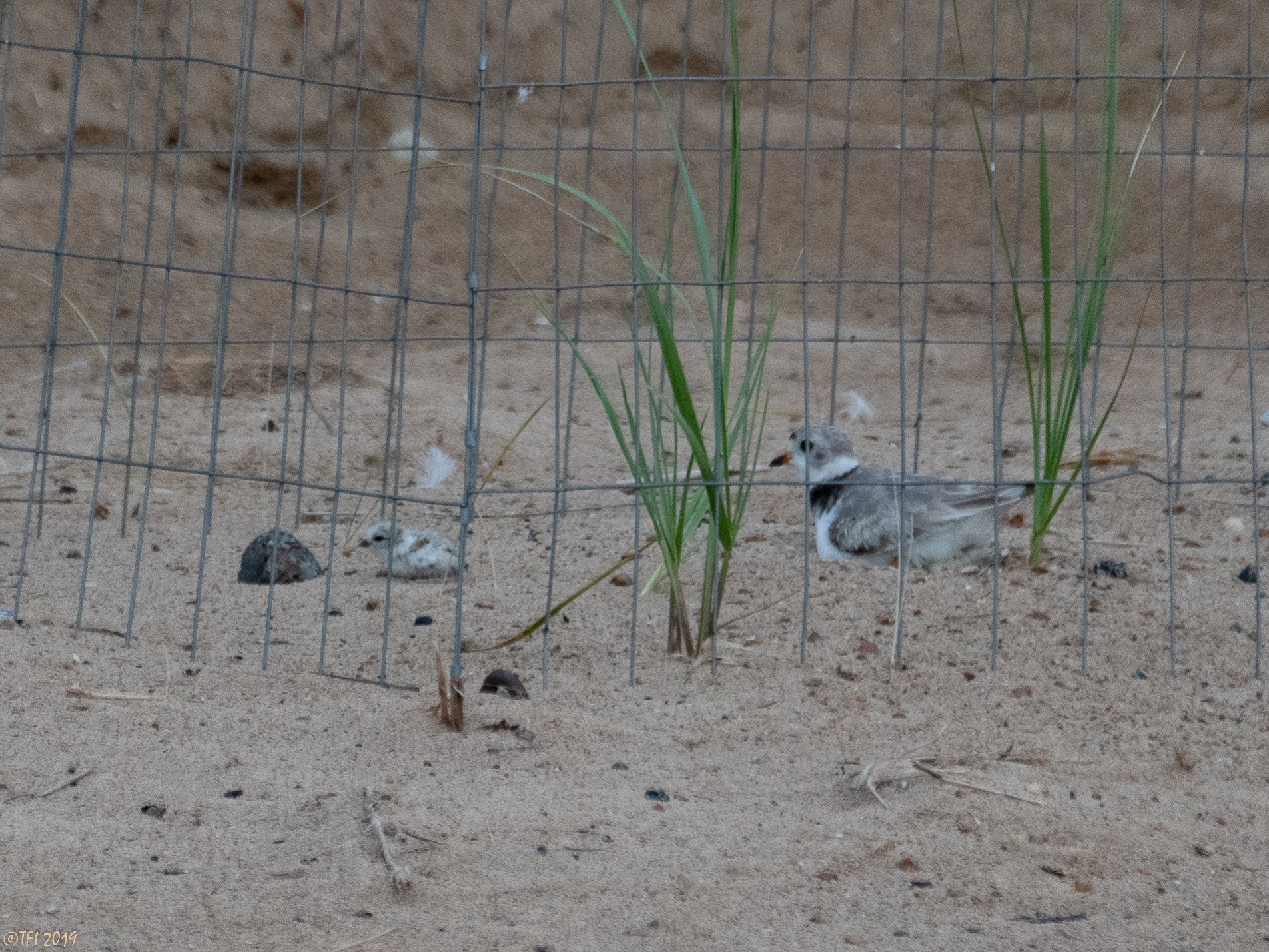
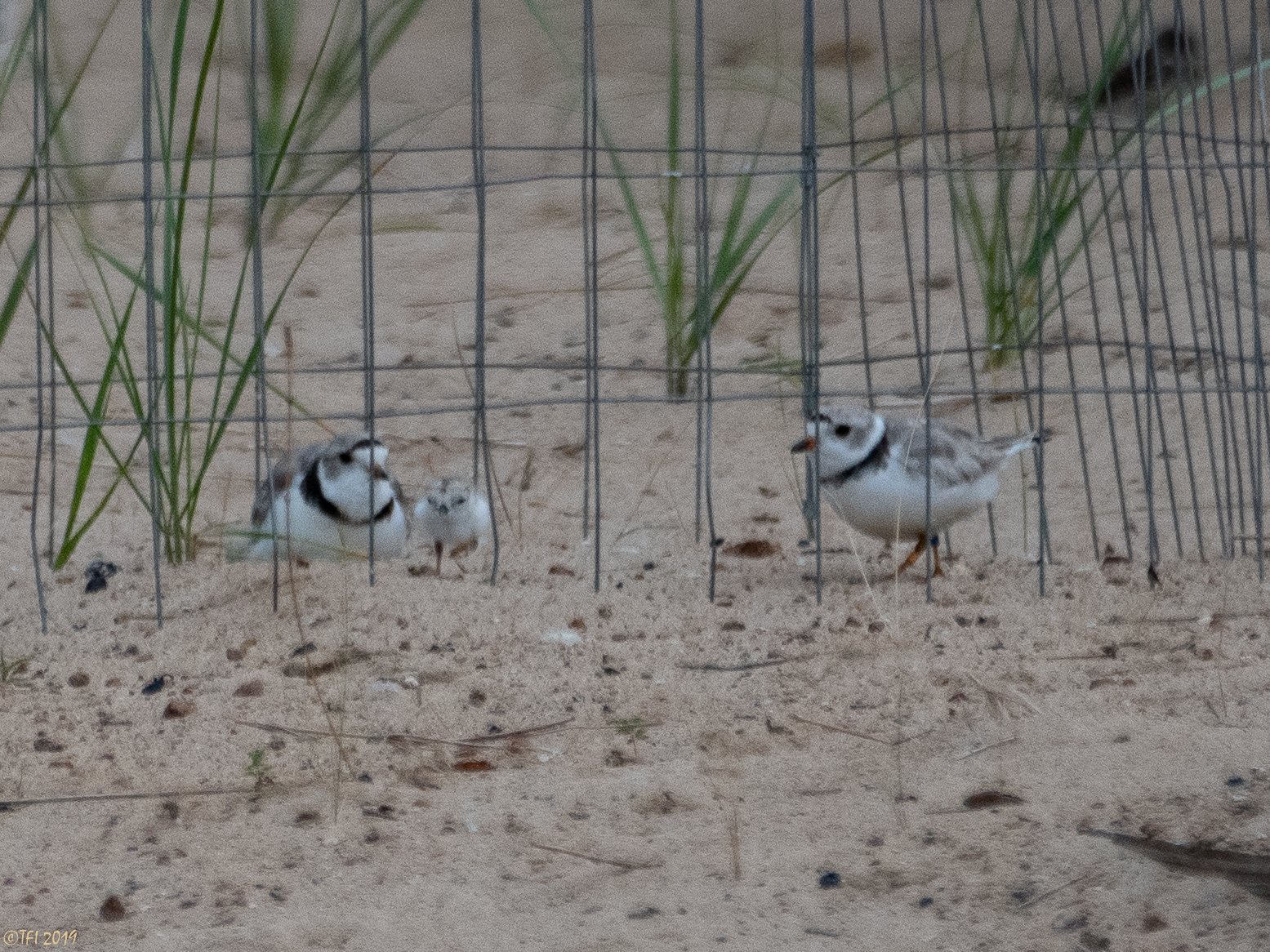
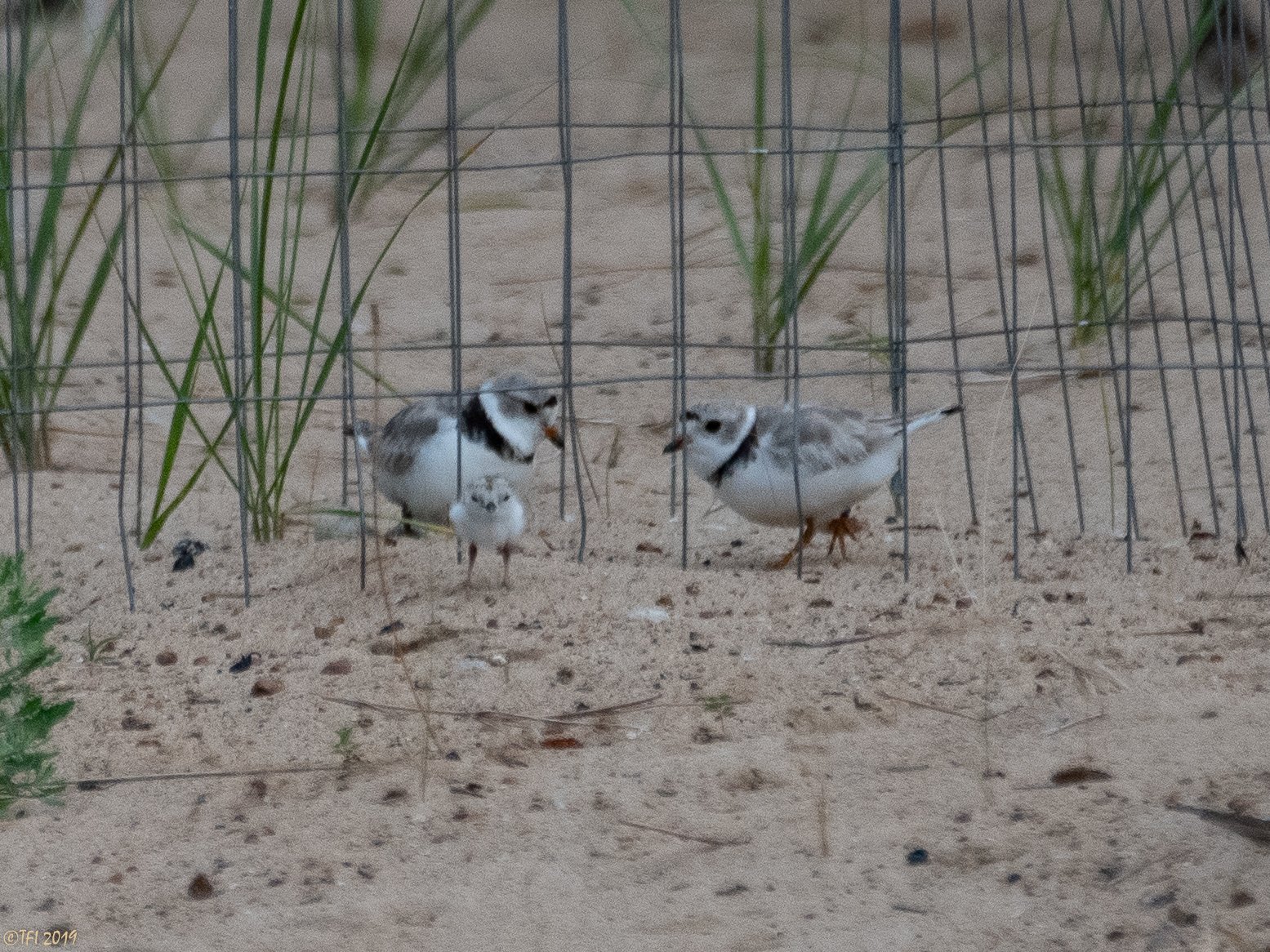
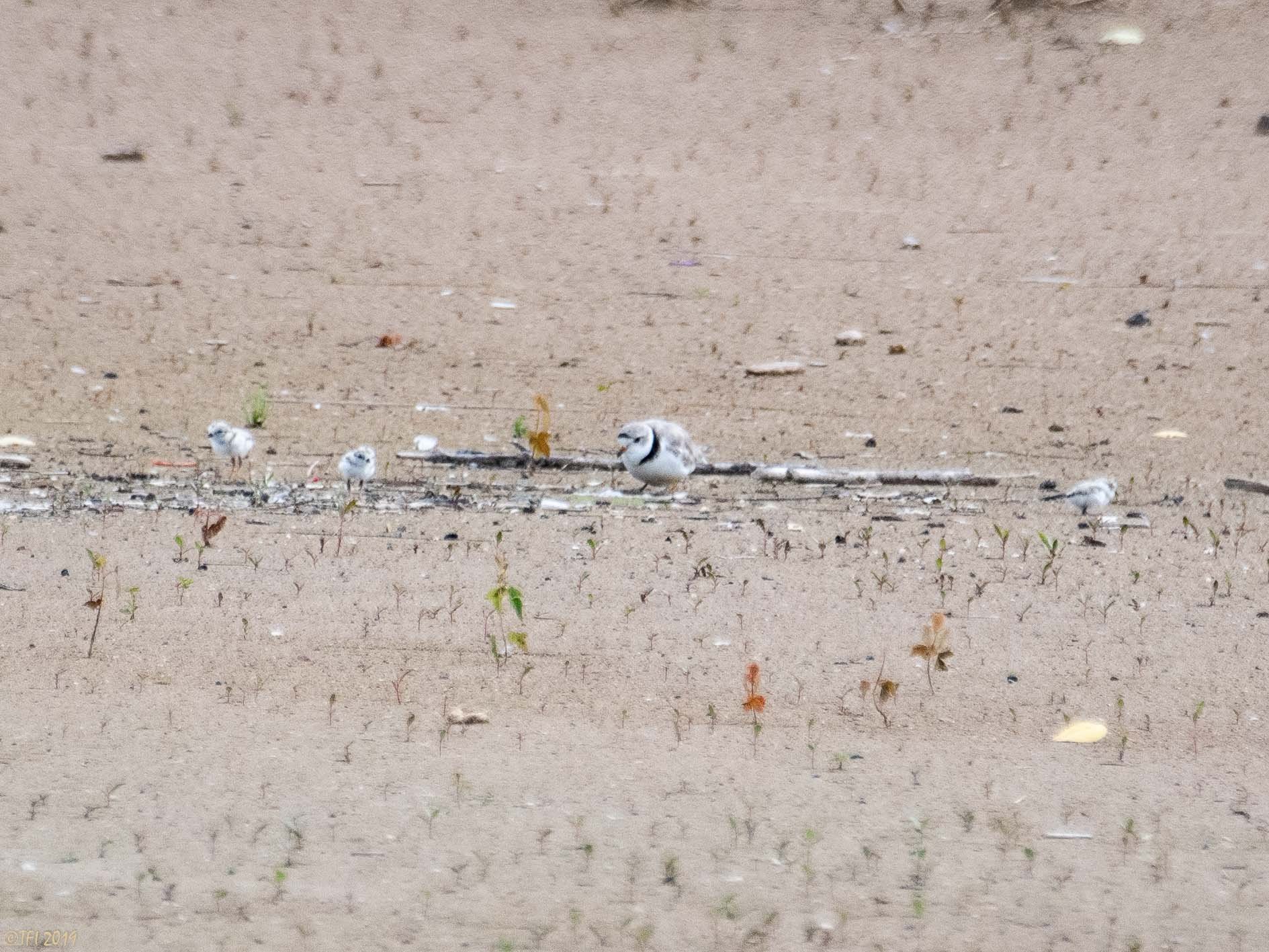
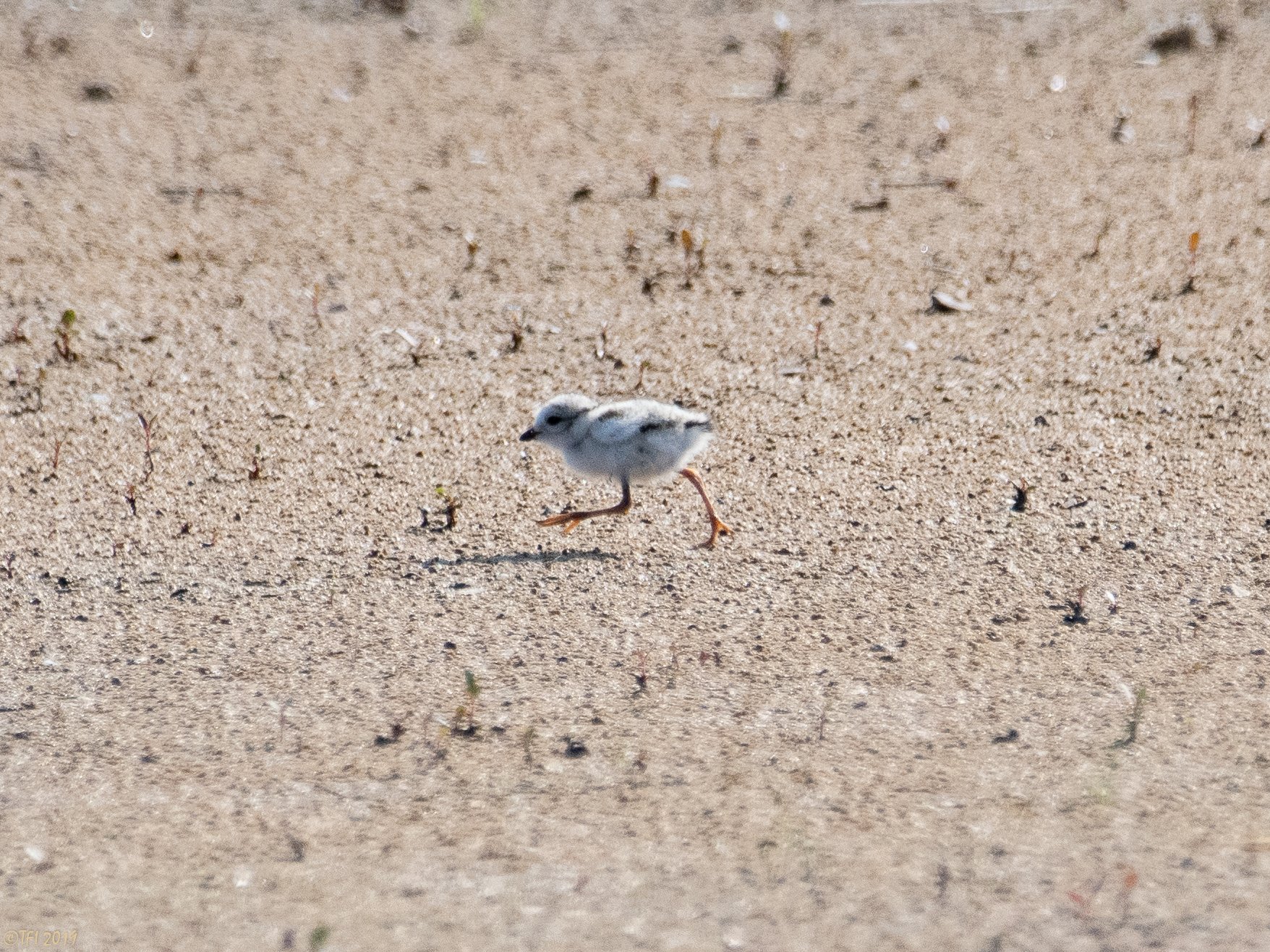
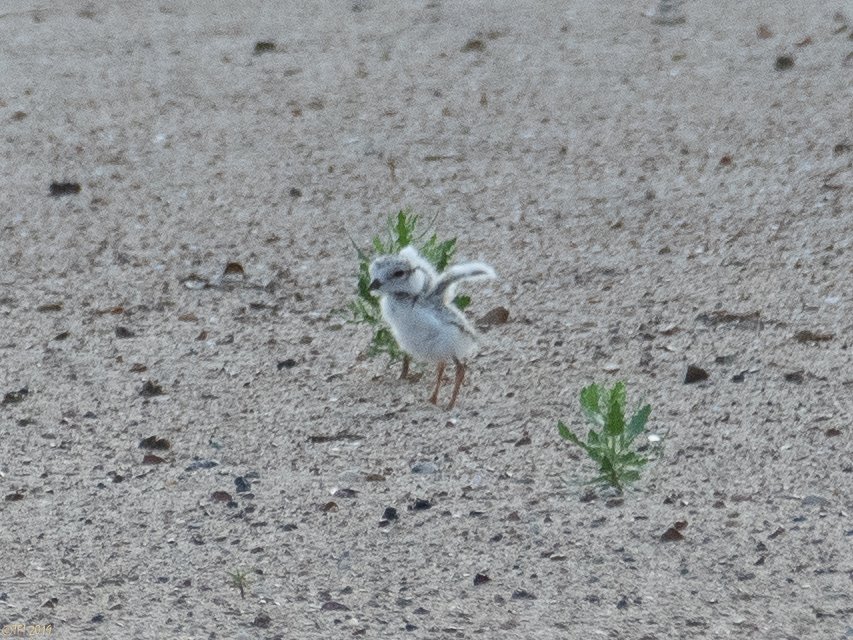
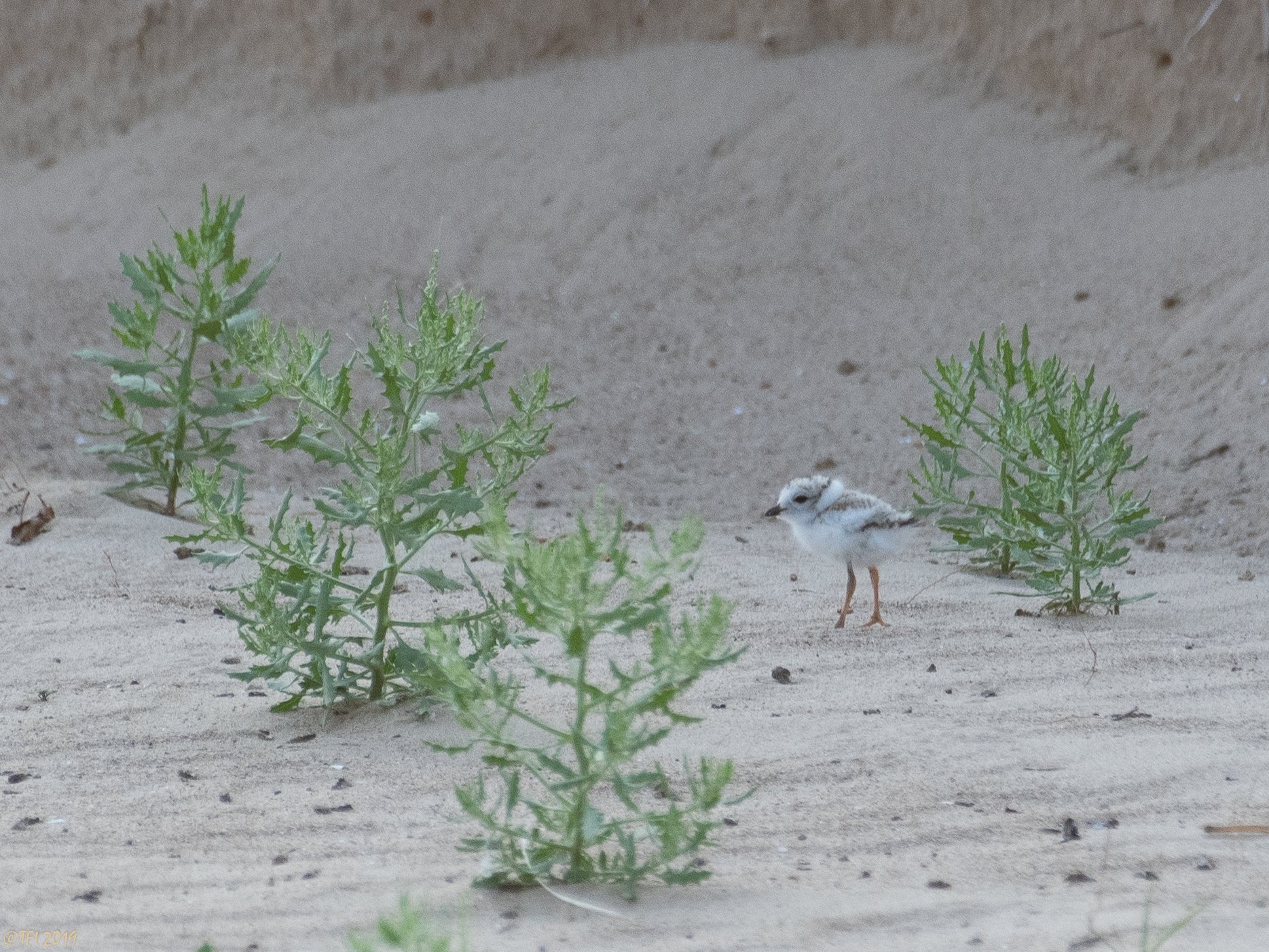
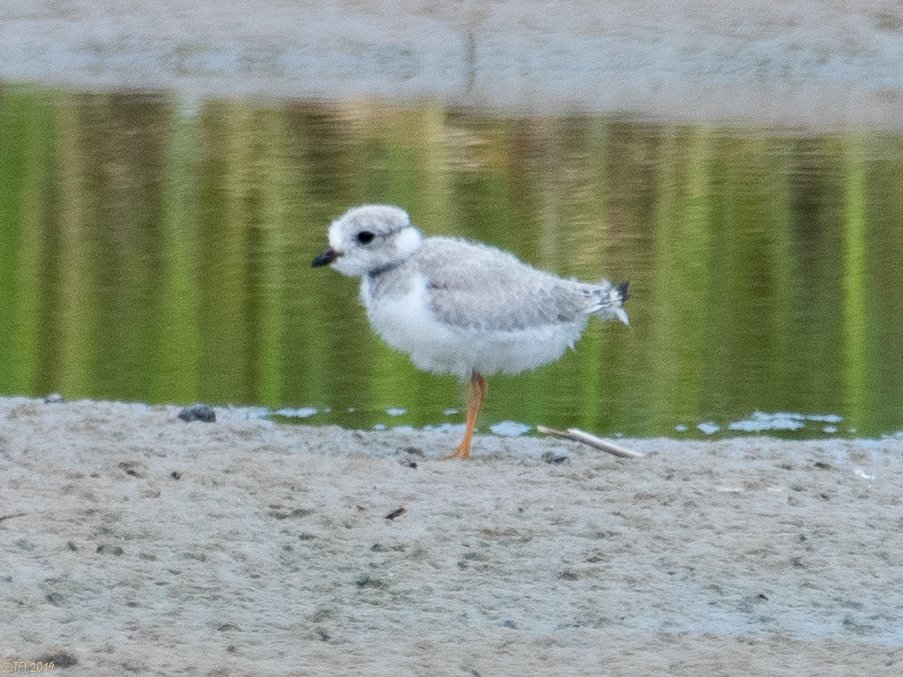

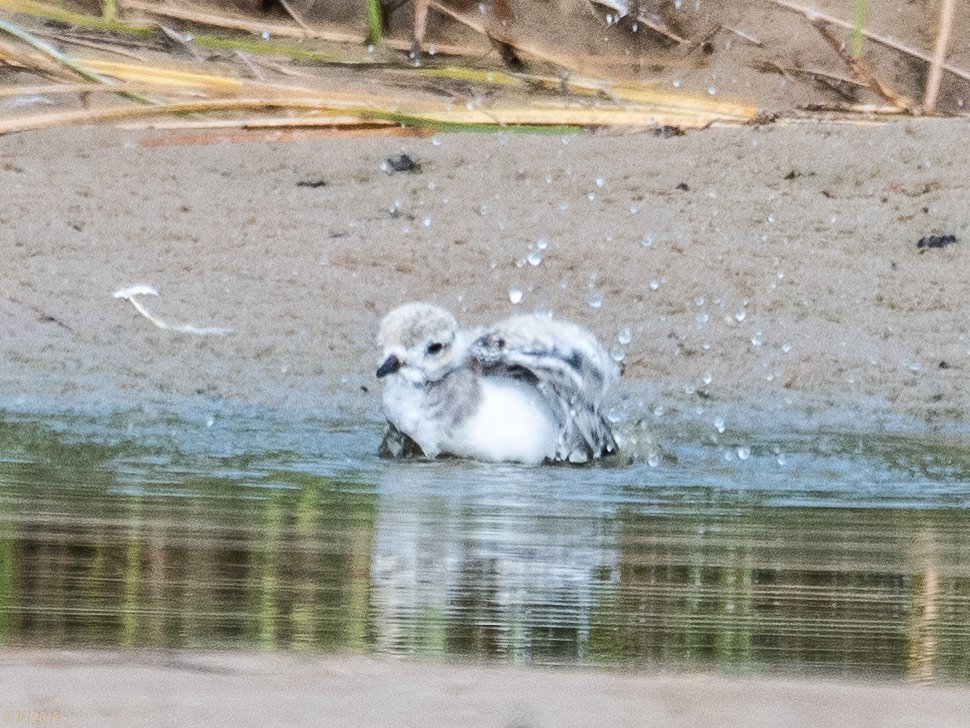
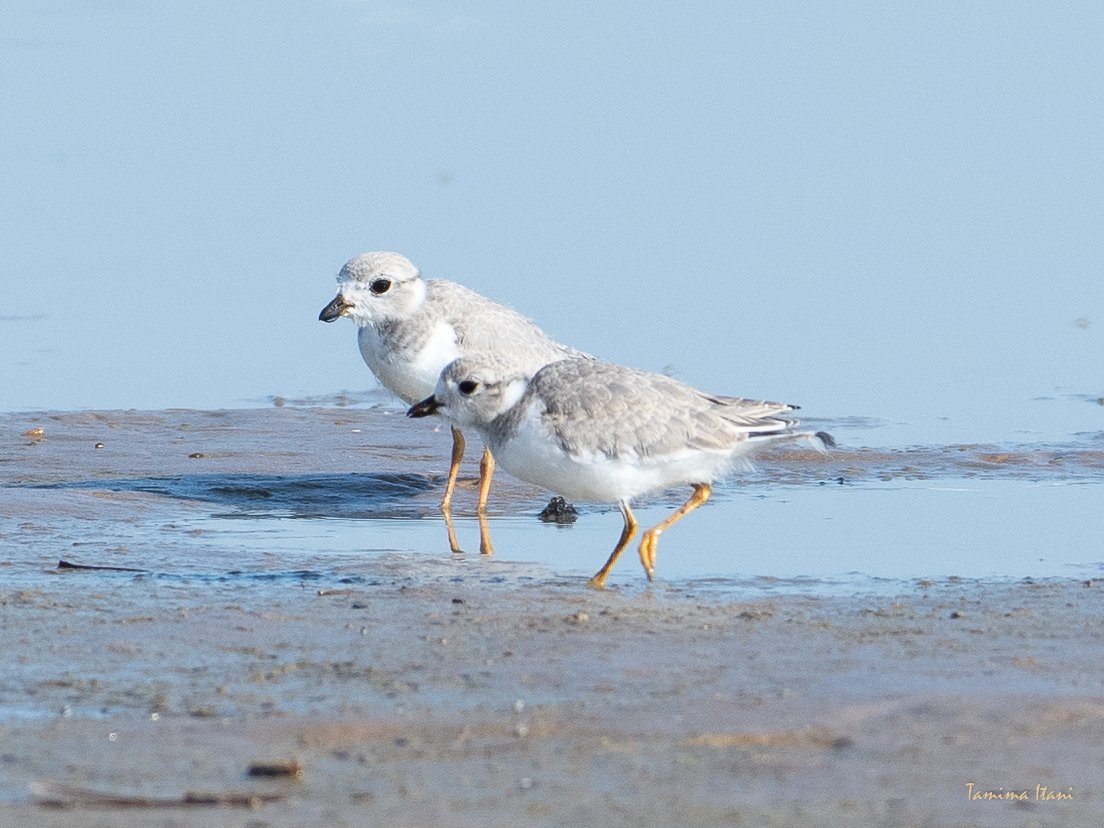
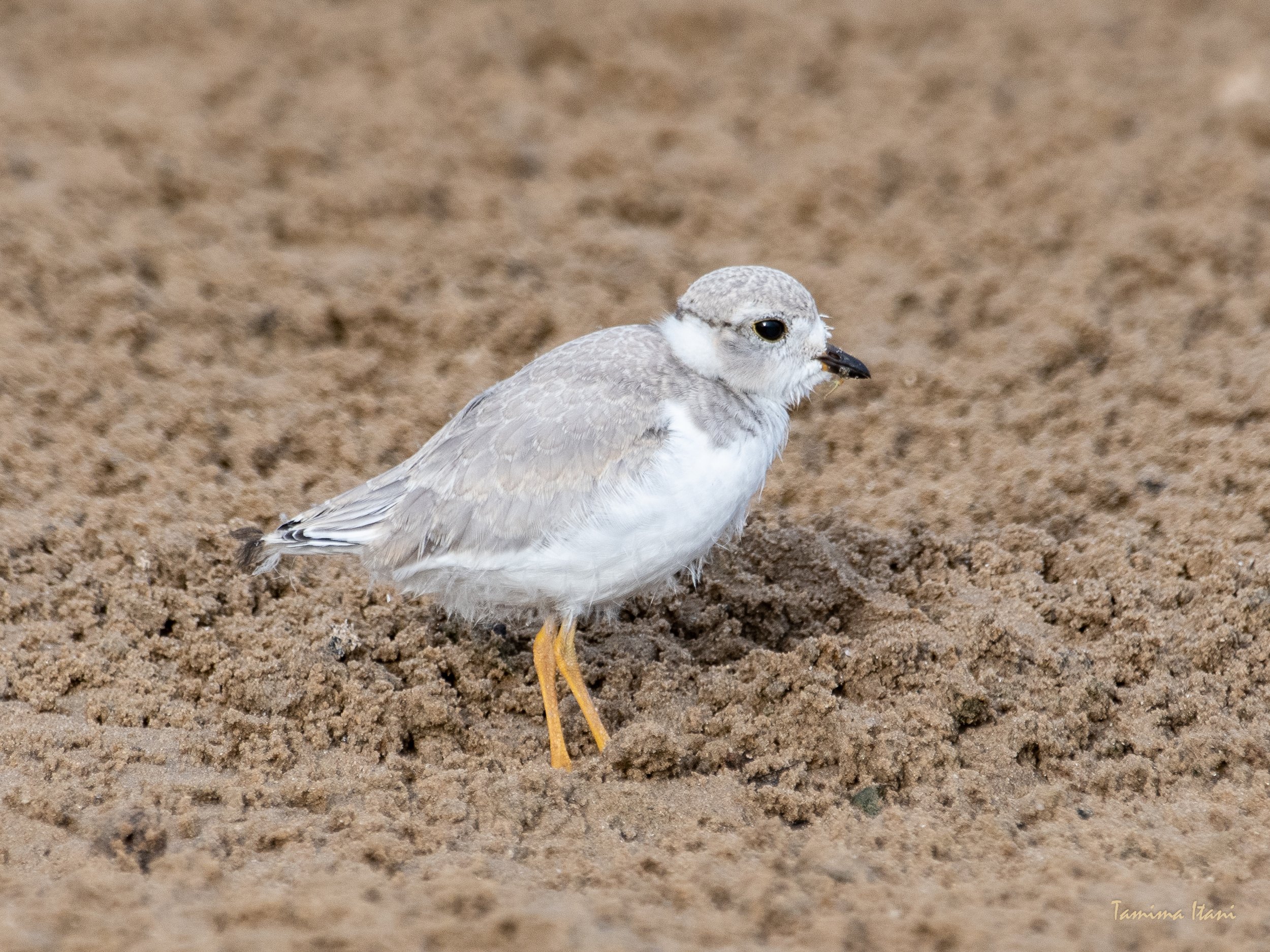
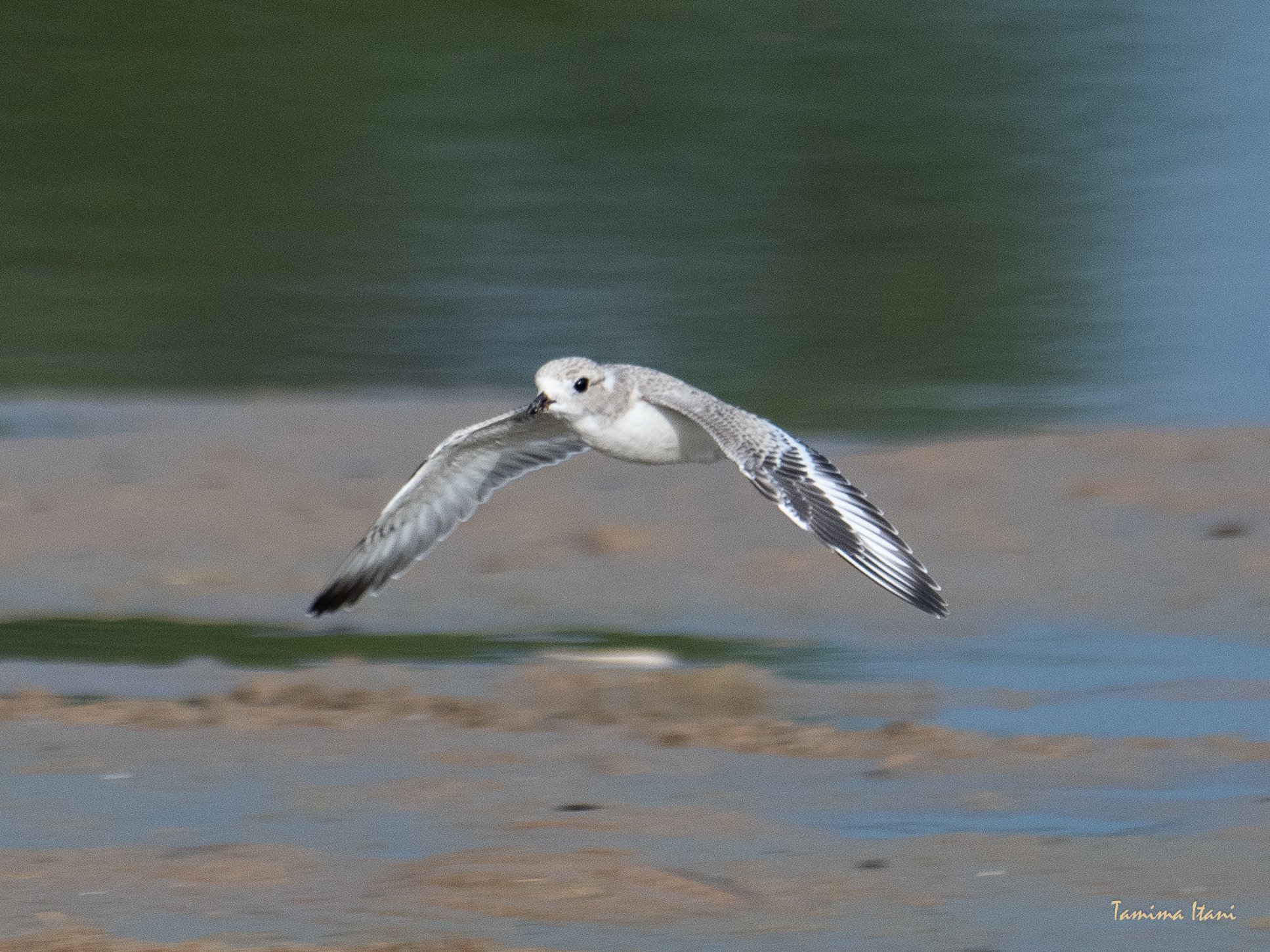
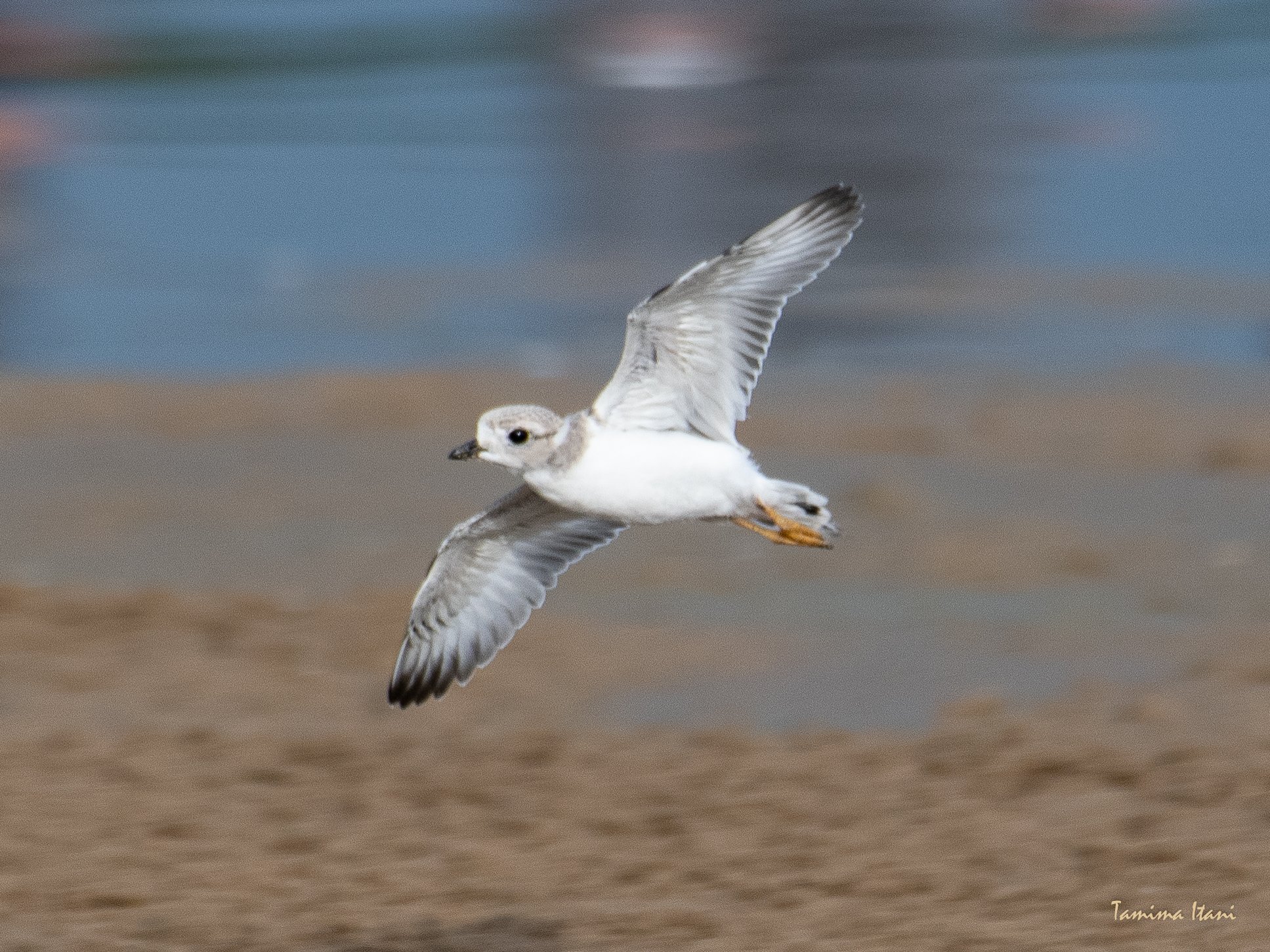
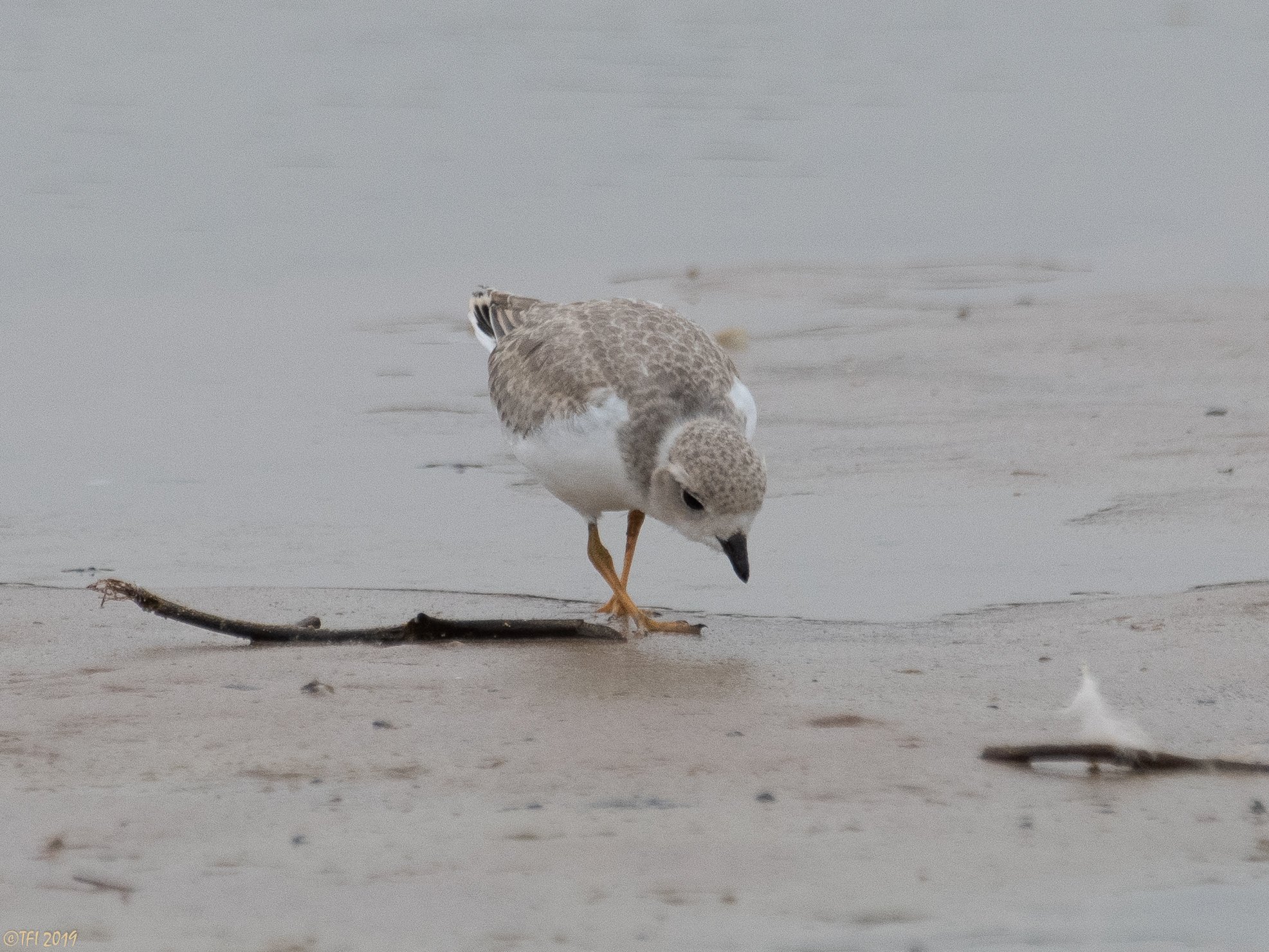
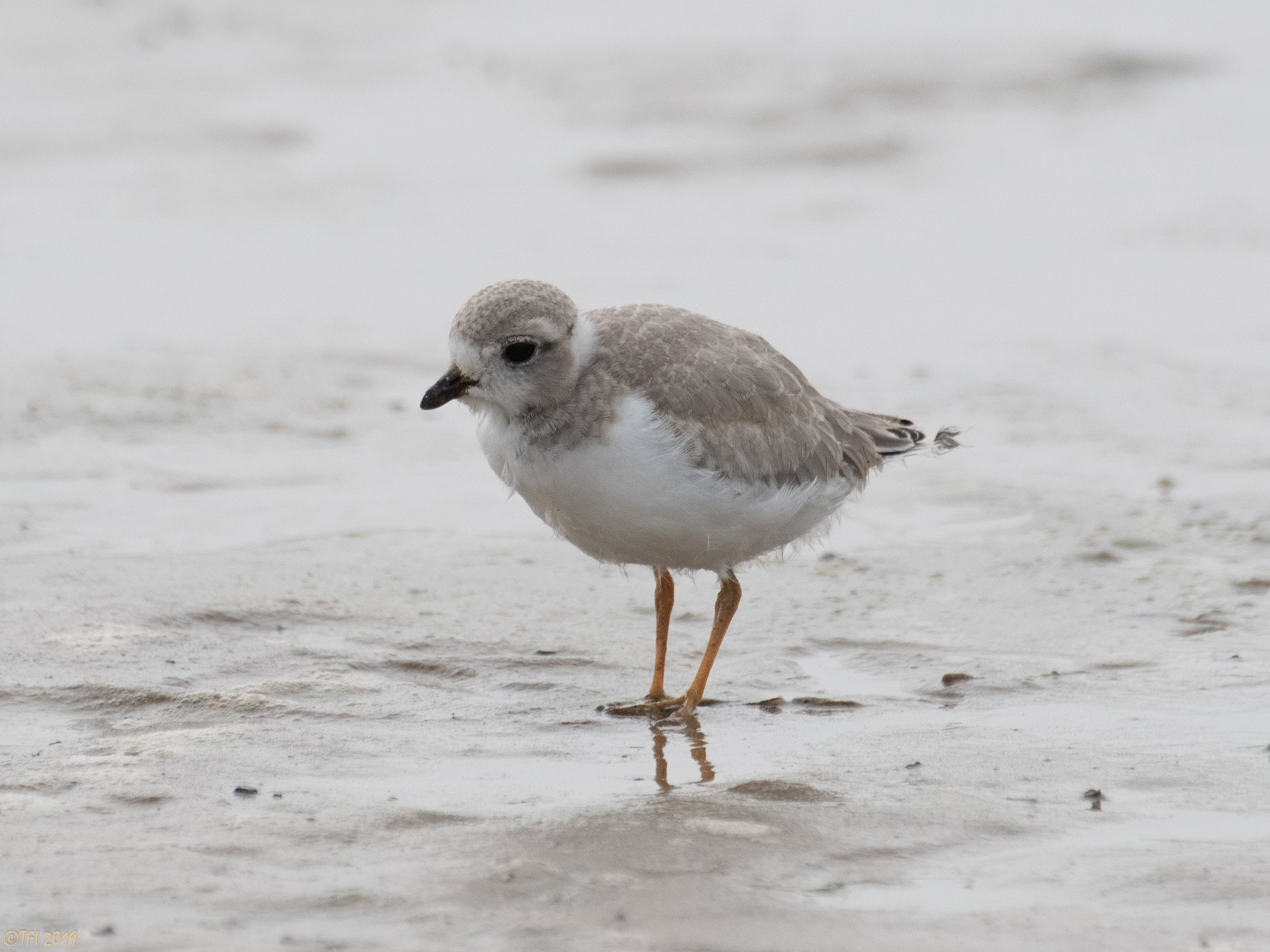
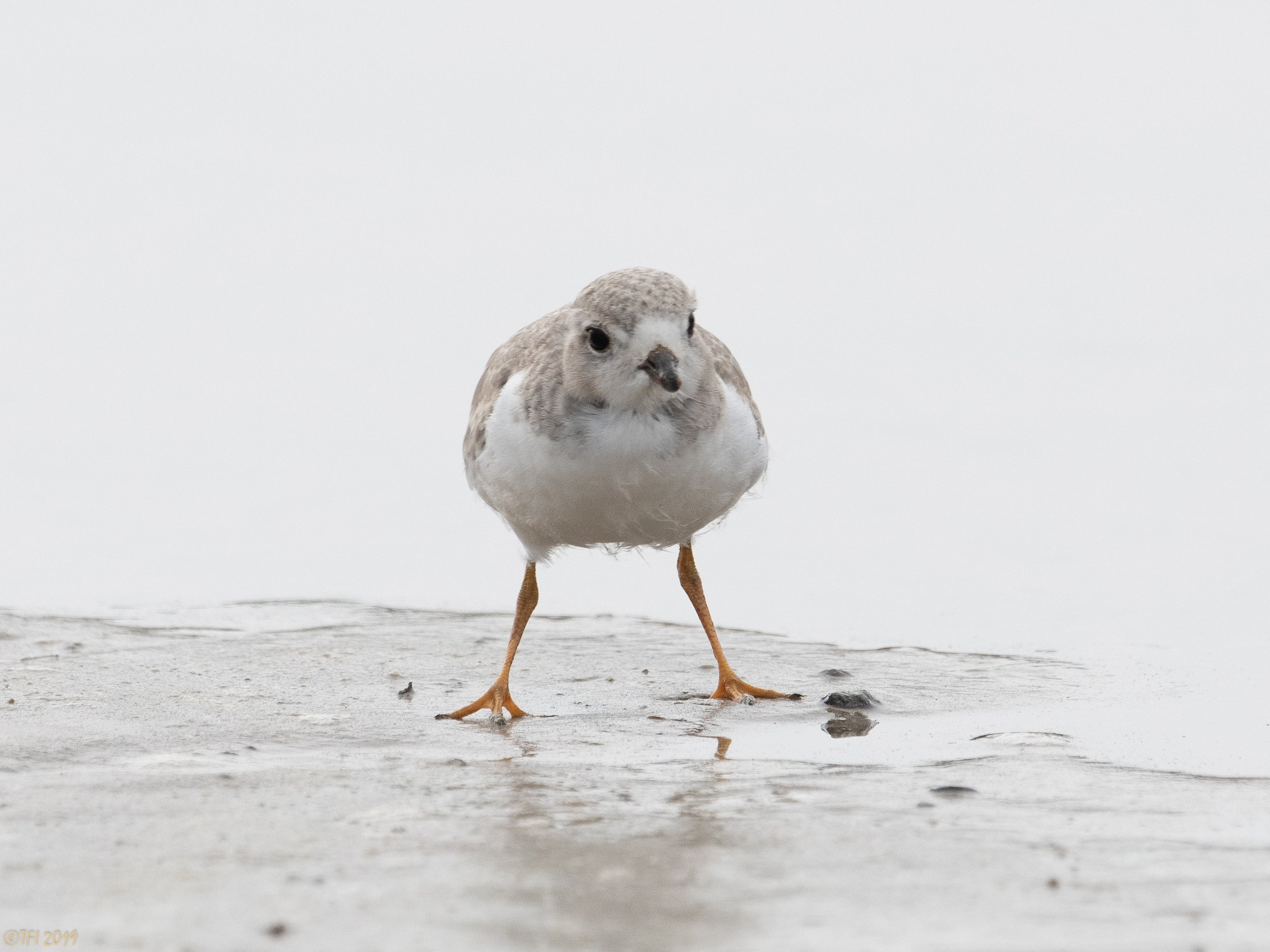

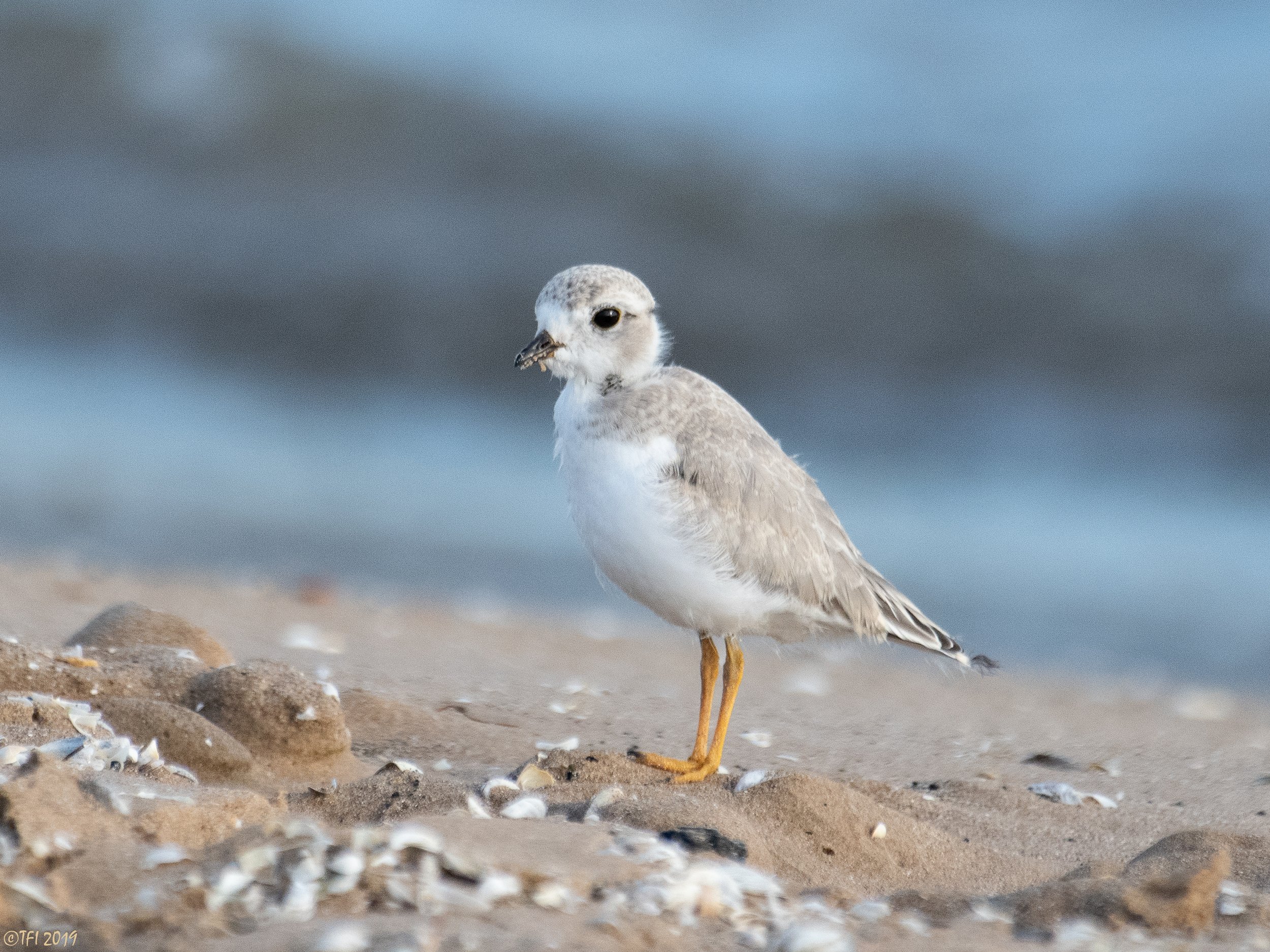
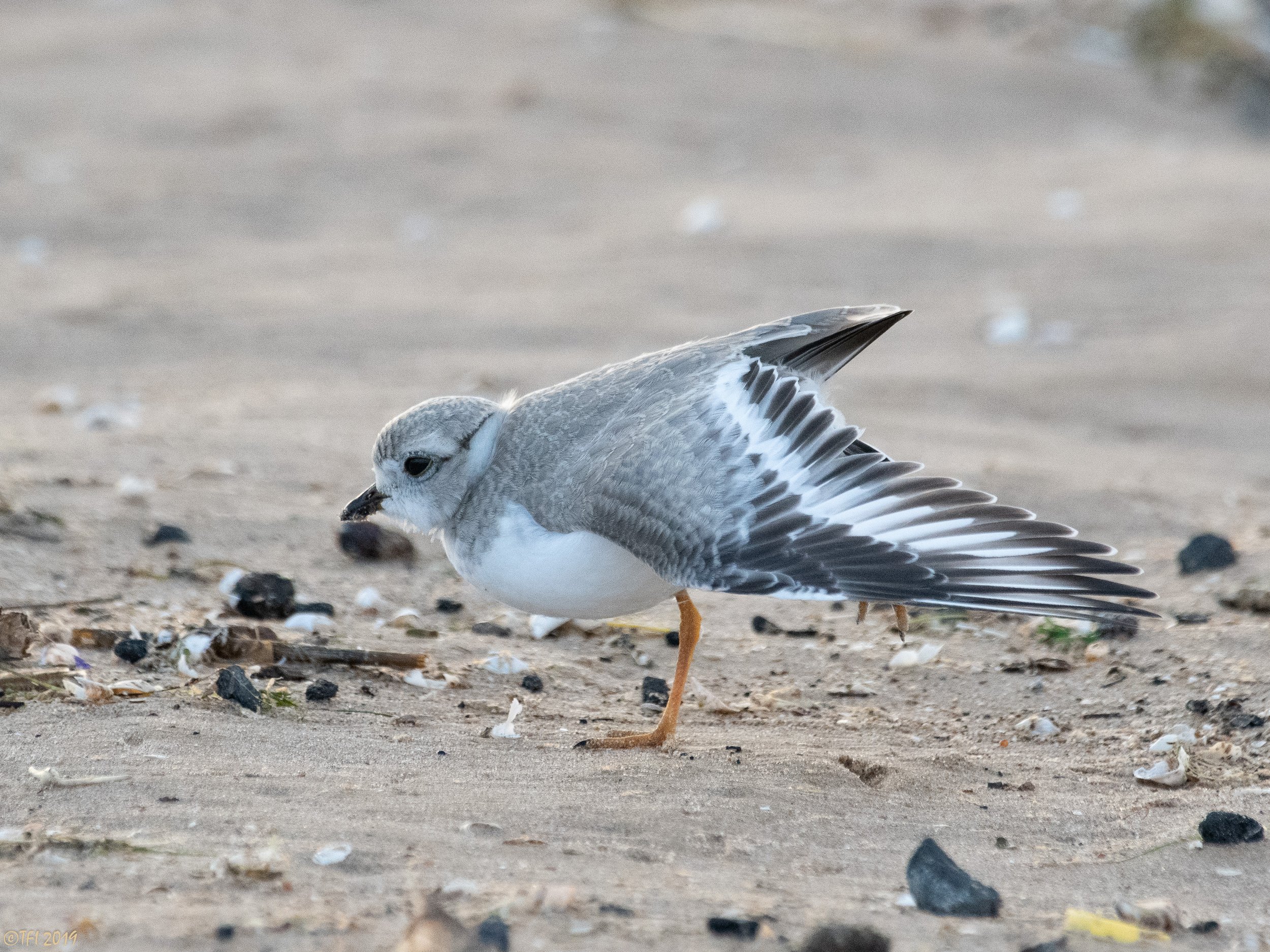
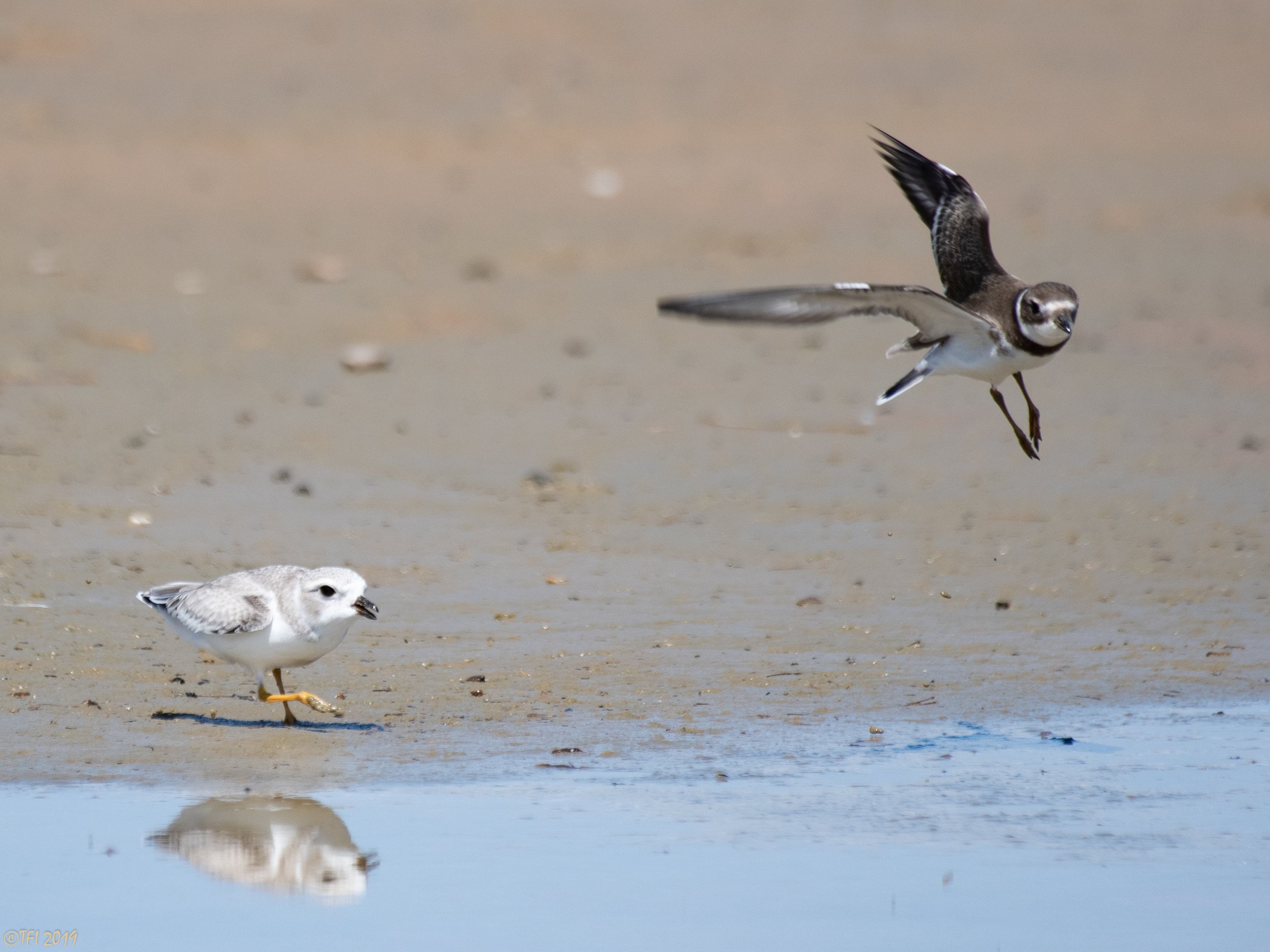
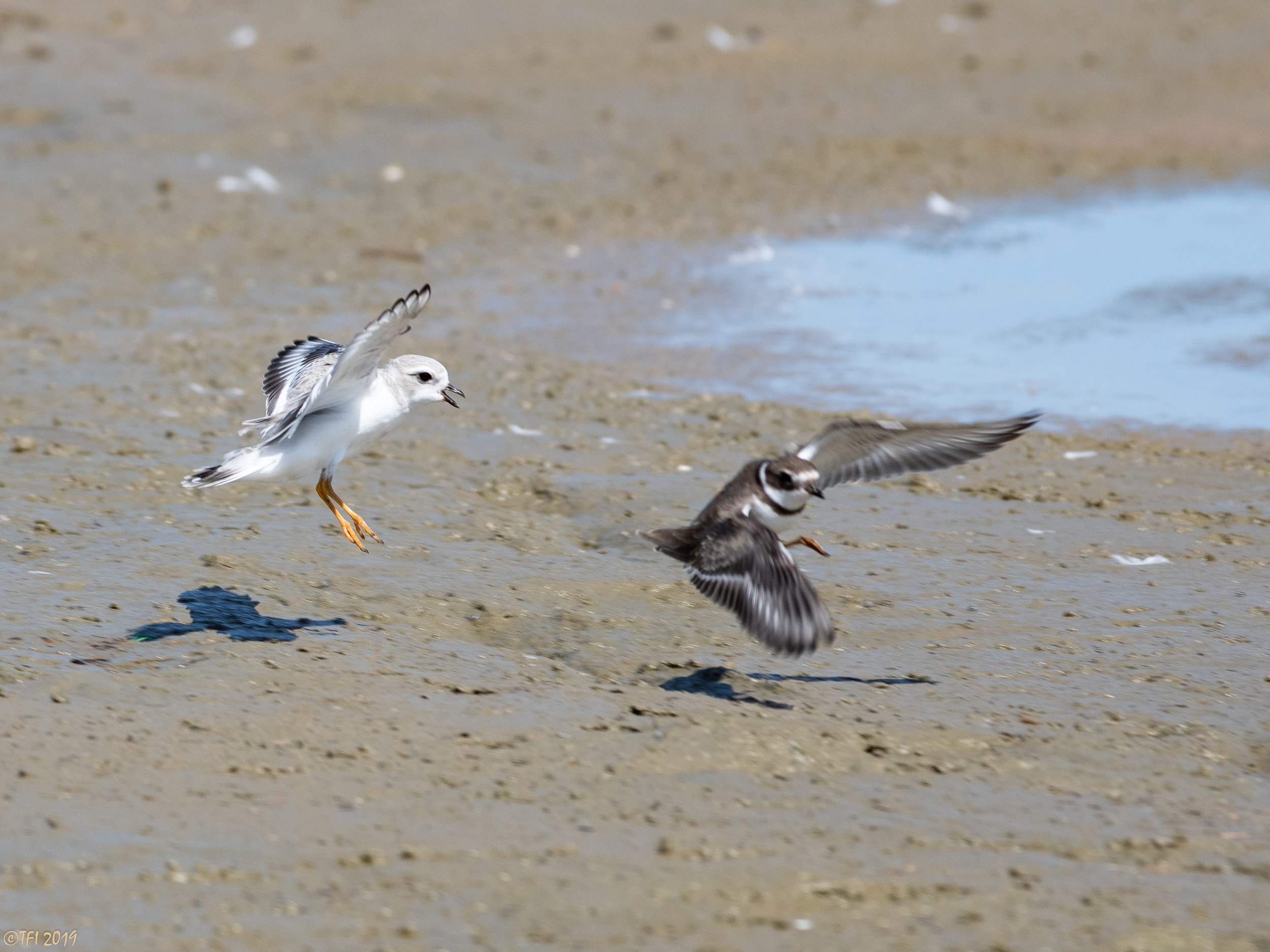
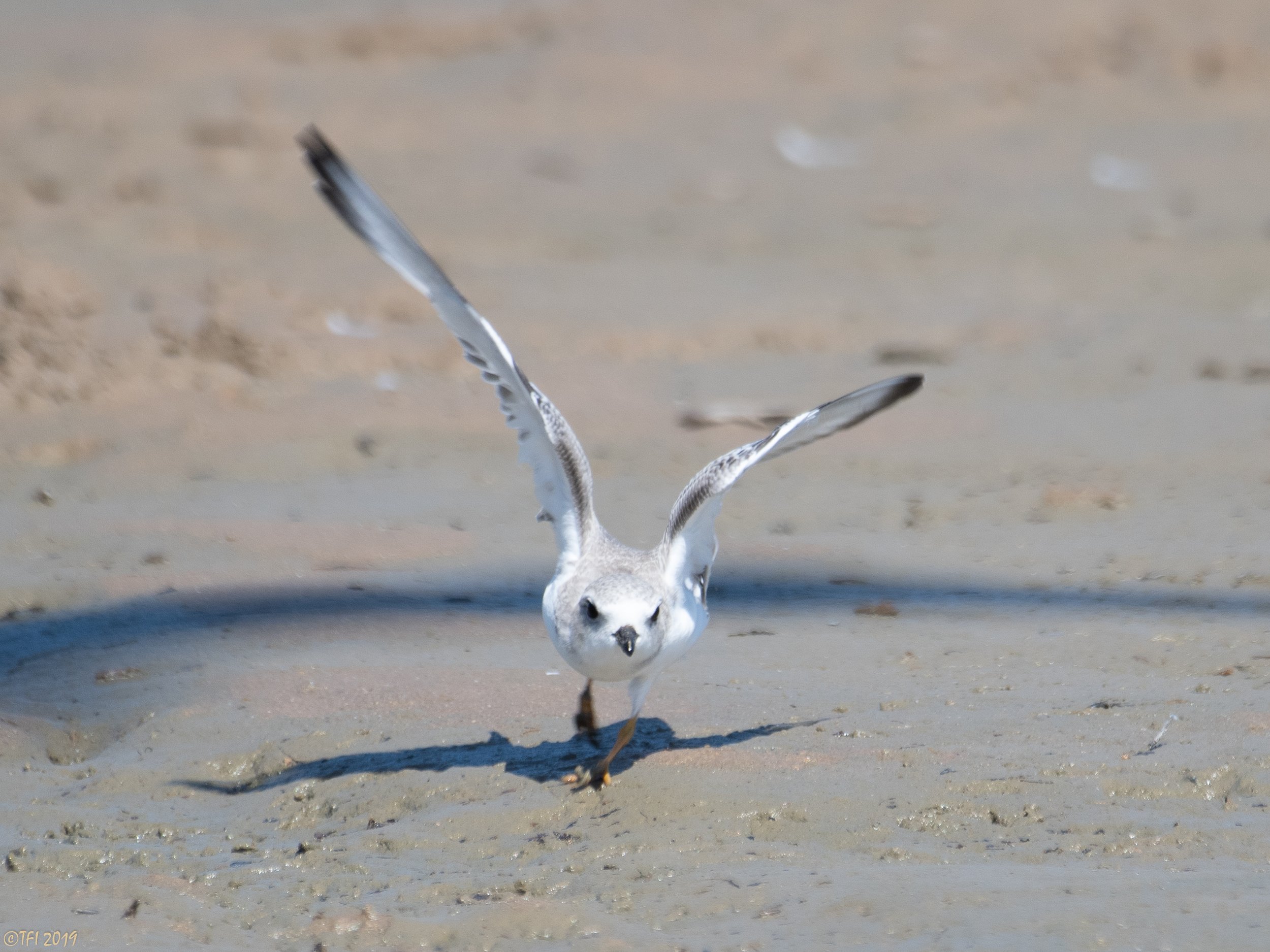
The pandemic year – 2020
Preparations for a second season started in earnest in the fall of 2019. The first season had been organized “on the go.” Judy Cheske, a talented web designer, created our lovely website (chicagopipingplovers.org). Louise Clemency, Director, FWS, hired an intern to help coordinate the volunteer effort. Excitement mounted as the spring and the anticipated return approached. Would Monty and Rose come back to Montrose again? Would they nest there again? We were so diligent, the entire volley ball area was closed off in anticipation of nesting there. Volunteers were signed up, most returning from the first season.
And then the pandemic hit and the entire lakefront was closed off to any public access. You know the story!
I was terribly anxious to know if they were back. I entertained thoughts of purchasing a drone and flying it over Montrose, or kayaking from Evanston to Montrose and back (I don’t kayak well). We were extremely fortunate that the Chicago Park District, their partner Cardno, FWS and IDNR were allowed on the Lakefront to do their work. They kept a watchful eye at Montrose and on May 1, 2020 announced the return of Monty and Rose, both spotted there on the same day. In the midst of doom and gloom, a ray of sunshine had broken through.
Monitors were still not allowed at Montrose. Soon we learned that Monty and Rose had chosen a new nesting location, on the dunes across from the pier, and had 3 eggs already. A fourth egg was laid and incubation started. We were on pins and needles wanting to be there with them and watch over them. We were finally granted permission to monitor and started monitoring as of June 10, 2020.
I believe most will be able to imagine the elation of being there with Monty and Rose, at the dunes, breaking free from the depressive pandemic news and strictly limited social lives. We took all the necessary precautions and proceeded with monitoring. Monty may have been a bit “bored” by a beach so empty and quiet. He would fly to the wall where we were standing, a bit further down from us and visit with us, to our greatest delight.
On June 17, 2020, all four eggs hatched, the little chicks barely visible among the growing dunes plants. Sadly, one chick only survived one day, but the three others had a huge adventure in store! With the chicks only two days old, Mom and Dad were observed conferring with each other, and soon, they lead the chicks on an epic 400-yard journey to the old volley ball area, where a beautiful fluddle had formed and the feeding was exceptional. A little problem to deal with first, though – a family of Killdeer with three young was already settled there. Did that deter Rose or Monty? On the contrary! They went on the attack and over a period of 45 minutes, fought with the adult Killdeer for control of the area. If you are not familiar with Killdeer, they are notably larger than the Piping Plovers. But Monty and Rose prevailed, and soon the three little puffs on sticks descended from the dunes onto the sandy area and headed to the fluddle to feed. Oh how fun it was to catch little bugs! The full story is available here.
2020 chick, June 23, 2020, shortly after moving to the fluddle area - Photo credit: Tamima Itani
Somewhere during that time, Rose’s eye was badly injured. She would dip her head into the water, likely trying to wash out debris or calm the pain. We believed at first that she might have lost it and I was besides myself that she would have to live the rest of her life with one eye, facing the dangers of migration without full range of visibility. Monty took care of the chicks and gave Rose the space she needed. She disappeared for a few hours and we feared that we might have lost her. But soon she reappeared just behind the wall where I was standing, making me wonder whether she had been there all along! She rested until a Killdeer dared to show up, at which point she flew and fiercely started to chase him away.
At the end of June, our wonderful partners from the Great Lakes Recover Program arrived in Chicago and banded the chicks. We found out that all chicks hatched in Chicago would receive stars on their bands, instead of the usual dot, to celebrate the stars on the Illinois flag. All Chicago-hatched plovers would also receive a violet band. We ran a naming competition and a panel representing the community selected the names: Hazel, Esperanza and Nish. The names were received with great acclaim by the entire community. The full story is available here.
Surprisingly, Monty left ahead of Rose. We thought he had gone back to Texas, but Brad Semel, while visiting Wisconsin Piping Plovers relocated to Illinois Beach State Park found Monty with the chicks. What a big heart, that little guy had, taking care of these orphaned, unfledged chicks!
In 2020, Monty and Rose visibly matured as partners and parents. Ahead of critical events or decisions, they were observed conferring with each other, making decisions together. It was lovely to see them grow in that manner.
Hazel, Esperanza and Nish grew uneventfully at Montrose. Esperanza clung to Mom at first, until Mom decided it was time for a bit more independence and encouraged her to leave the cover of her wings. The chicks delighted us with great views, often parading in front of the wall where we were standing and offering excellent photos ops. Nish and Hazel left first, followed by Esperanza. The entire family was spotted on their wintering grounds, Nish with Rose at Anclote Key, Hazel and Esperanza on islands in Georgia, and Monty back in Texas. Sadly, Hazel and Esperanza have not been seen again.
Esperanza feeding, July 17, 2020. - Photo credit: Tamima Itani
A special thanks to all the 2020 volunteers, who delt with uncertainty of Covid transmission, risk of being too close to the public, severe constraints on interactions with the public and each other. We thankfully all made it through that summer, grateful for Monty, Rose, Nish, Hazel and Esperanza for providing us a dose of optimism and hope.
By 2020, Monty and Rose’s fame spread even further thanks not only to intense media coverage but also to the impactful documentary ‘Monty and Rose” produced by Bob Dolgan of their first nesting season.
Photos of the 2020 family - Photos credit: Tamima Itani
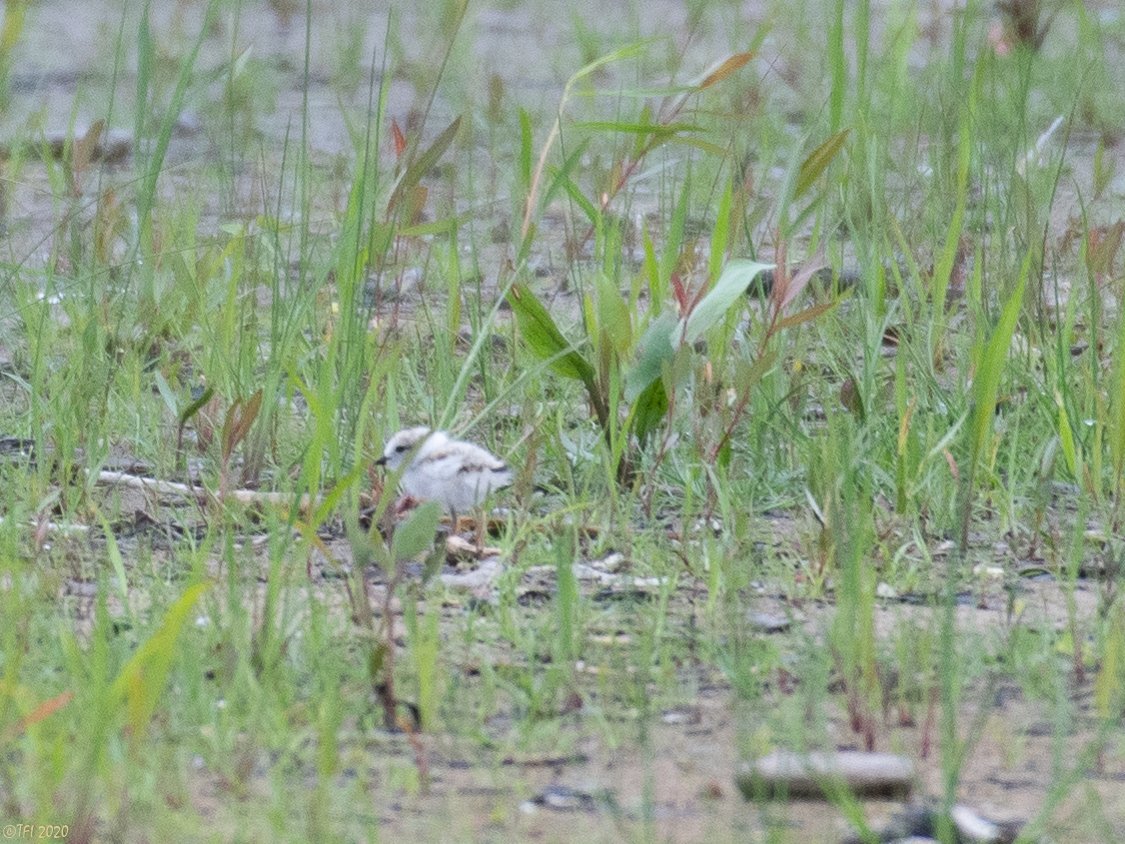
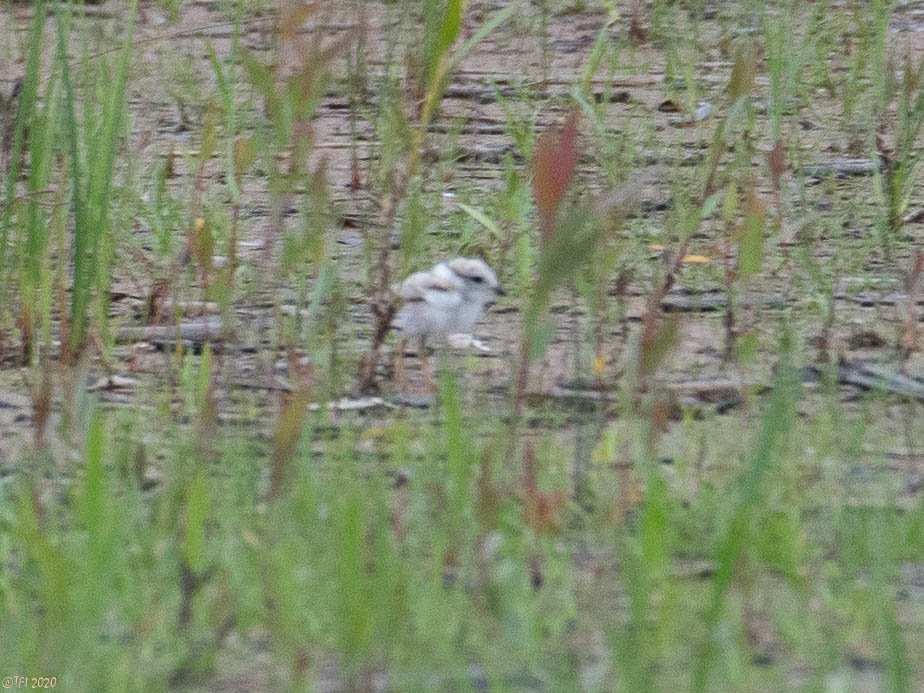
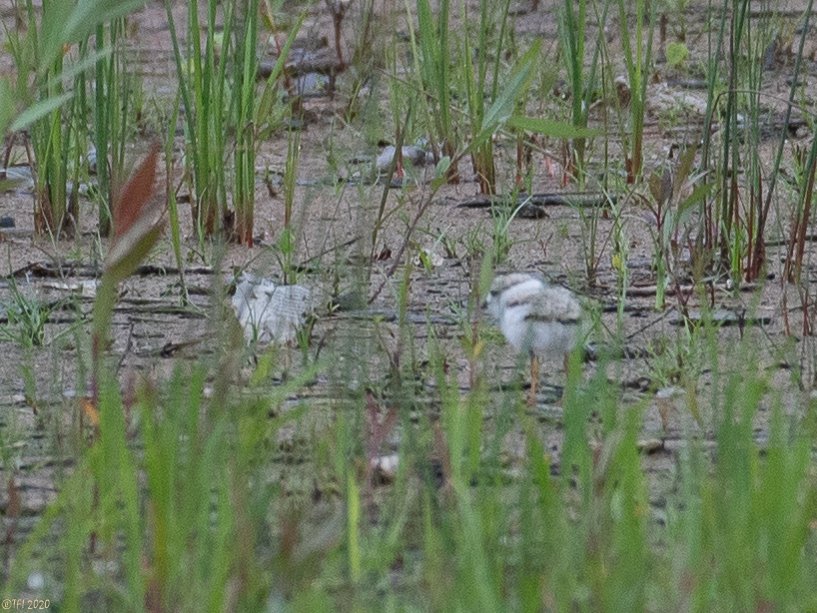
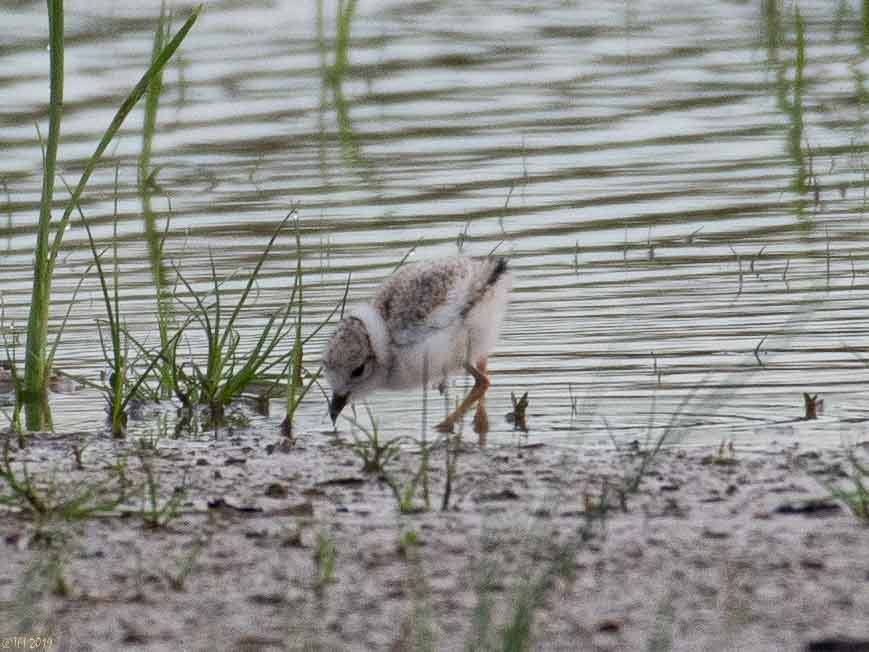
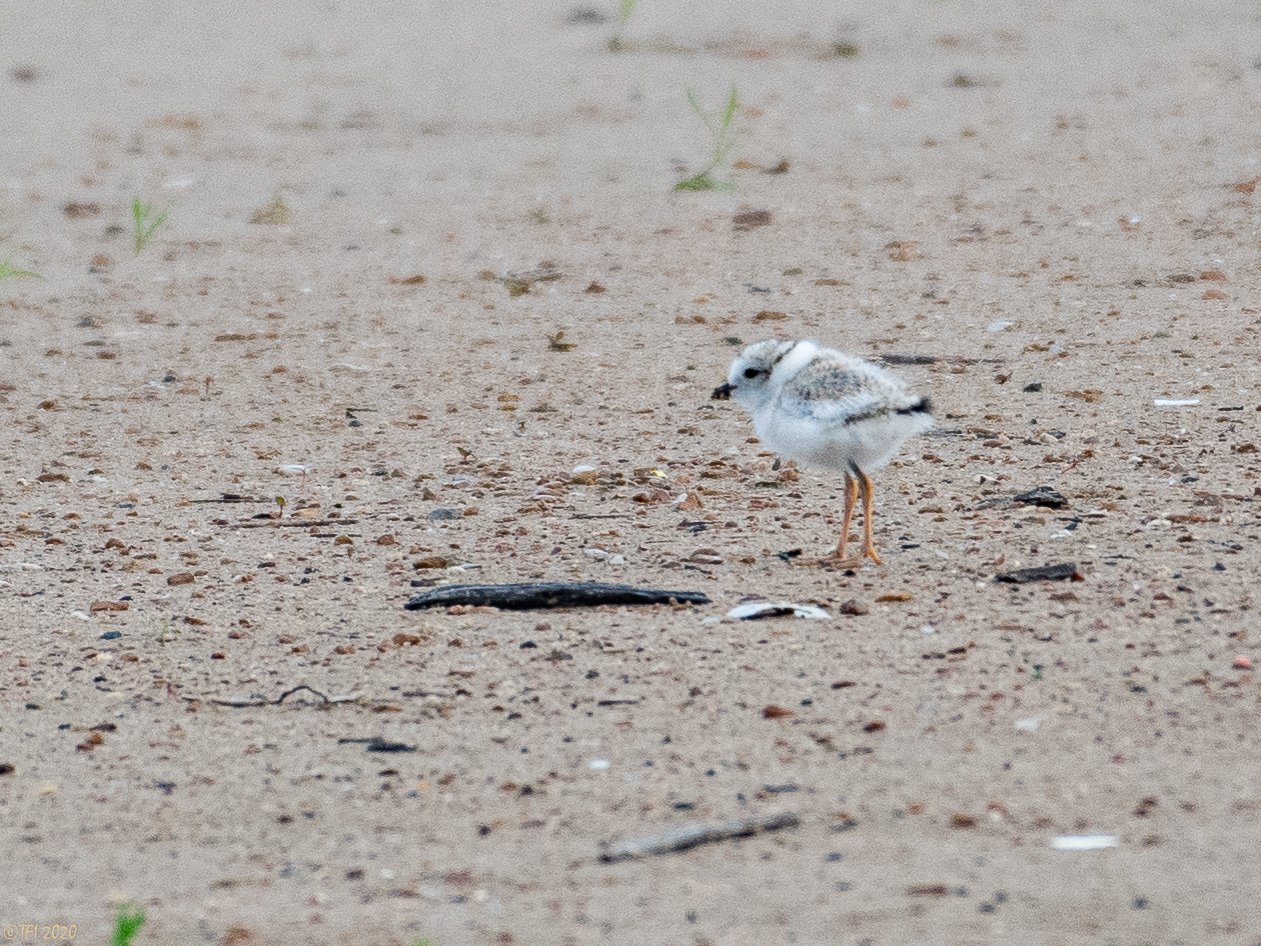
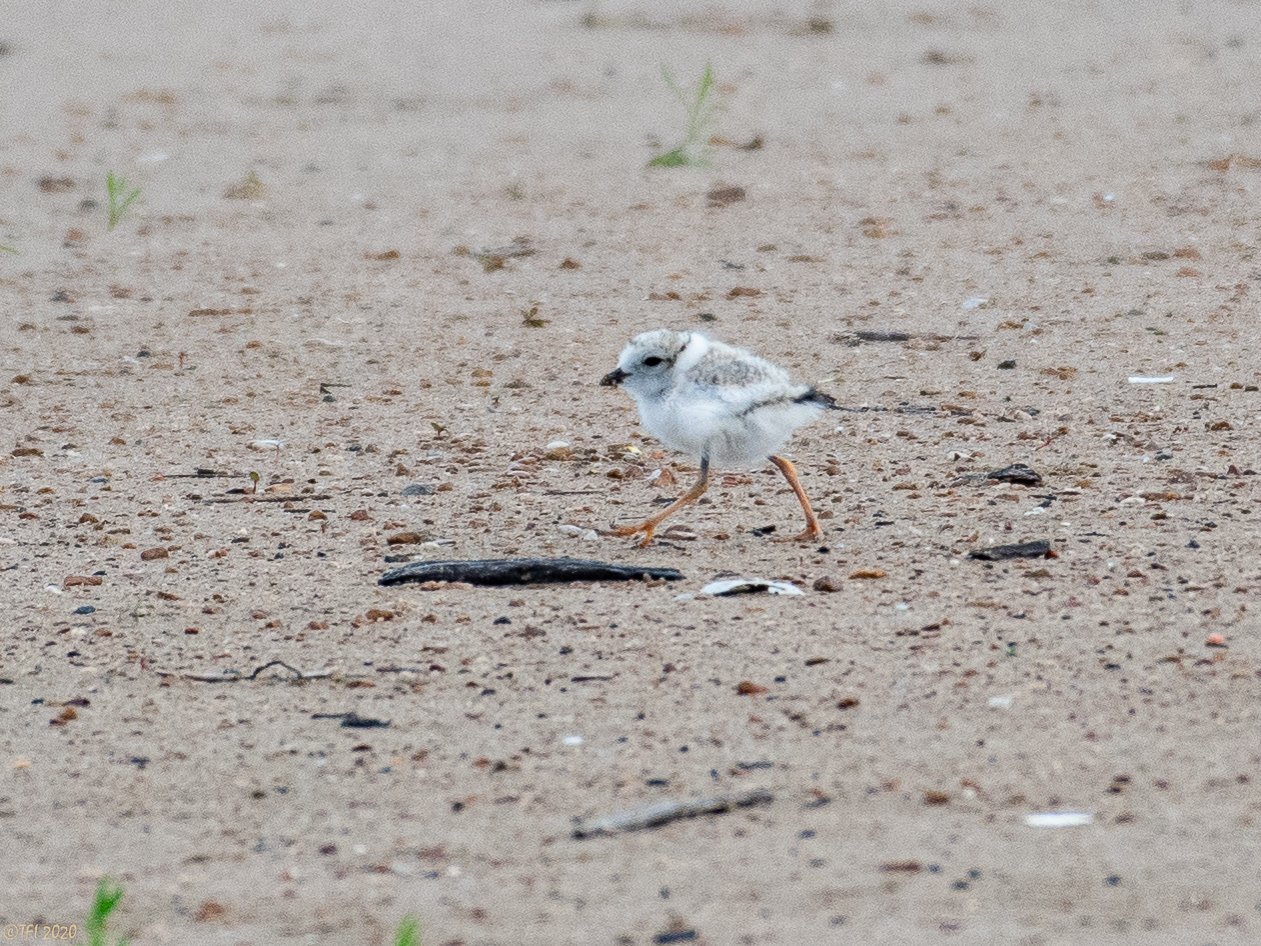
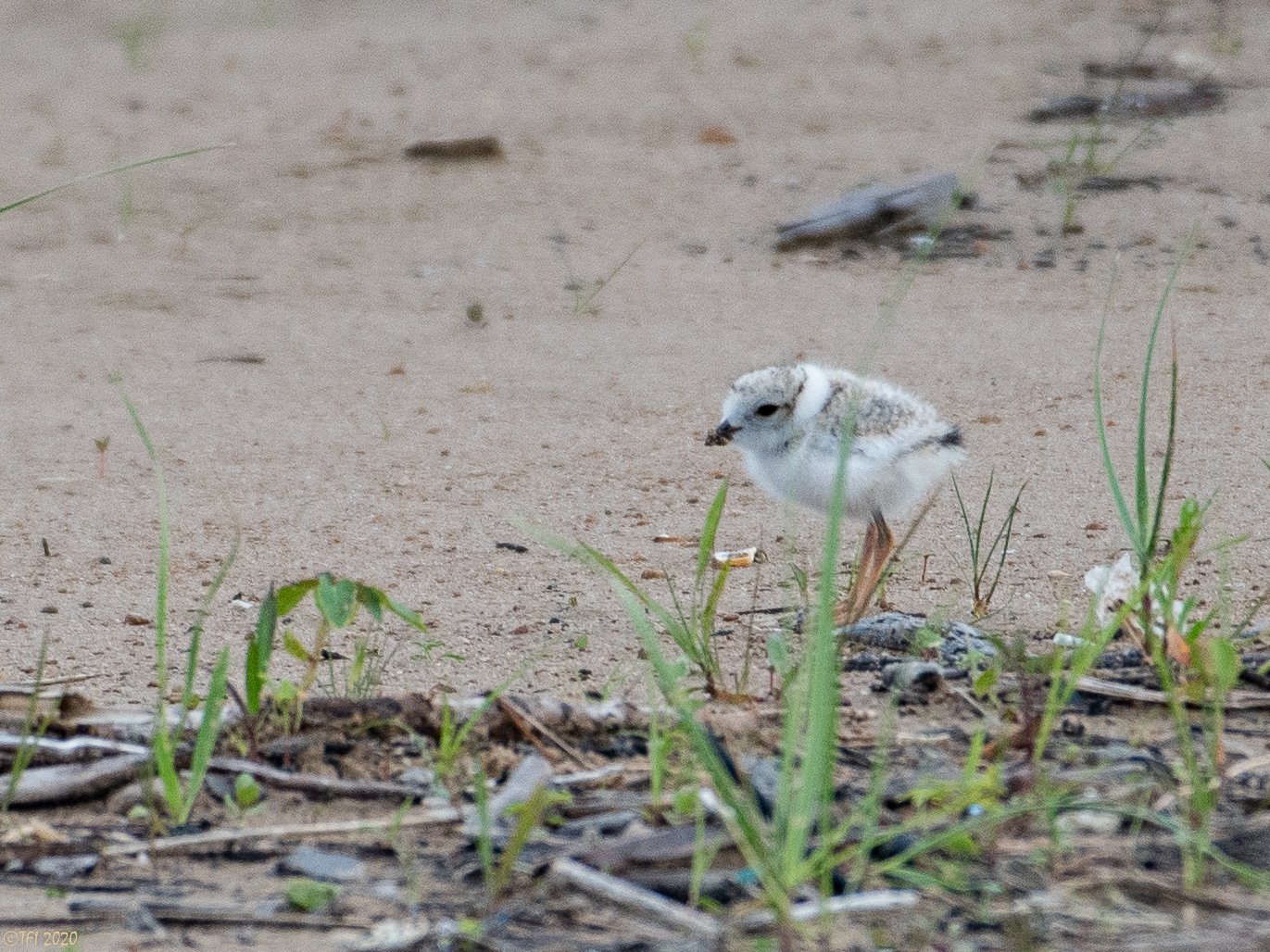
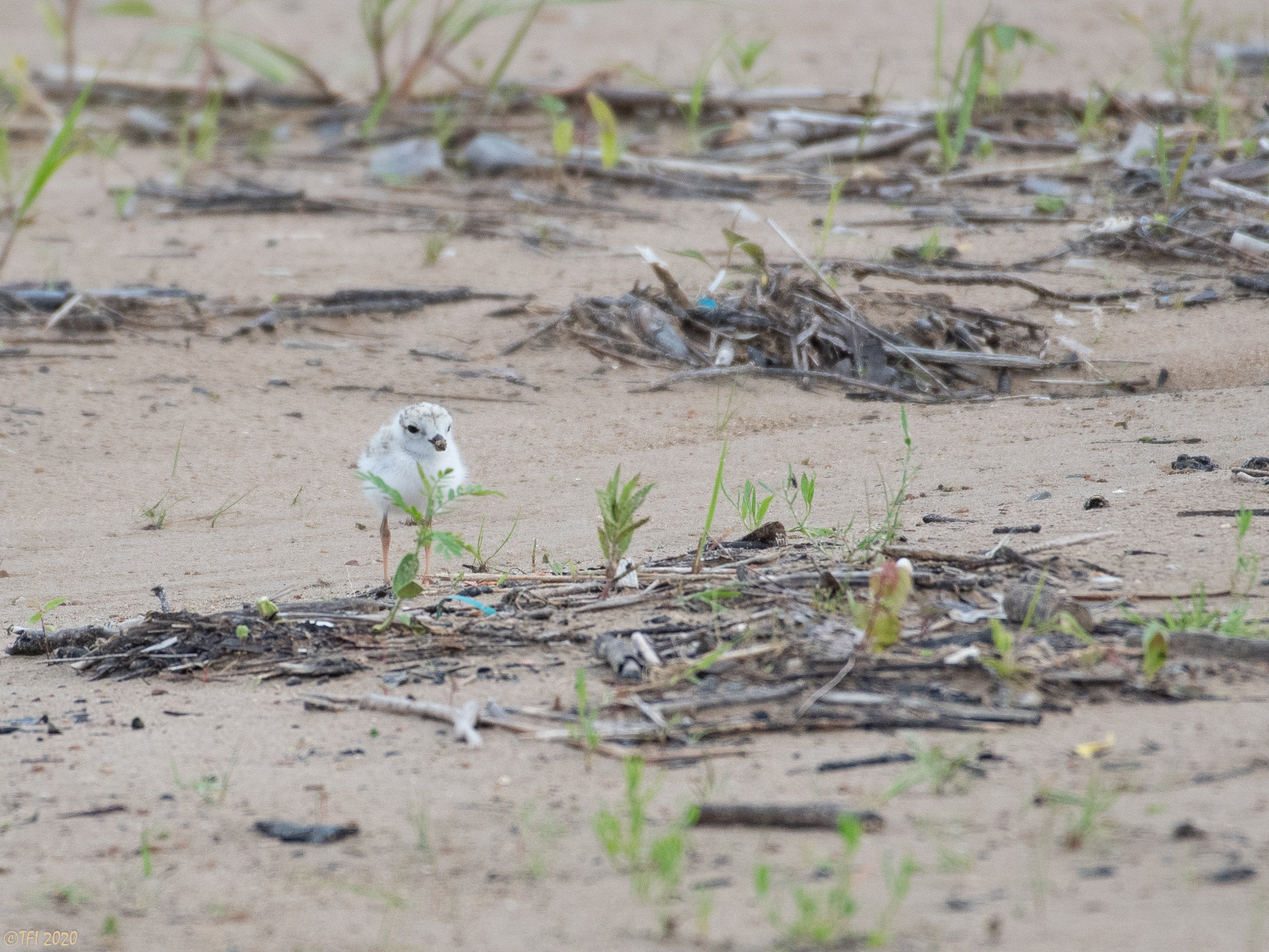
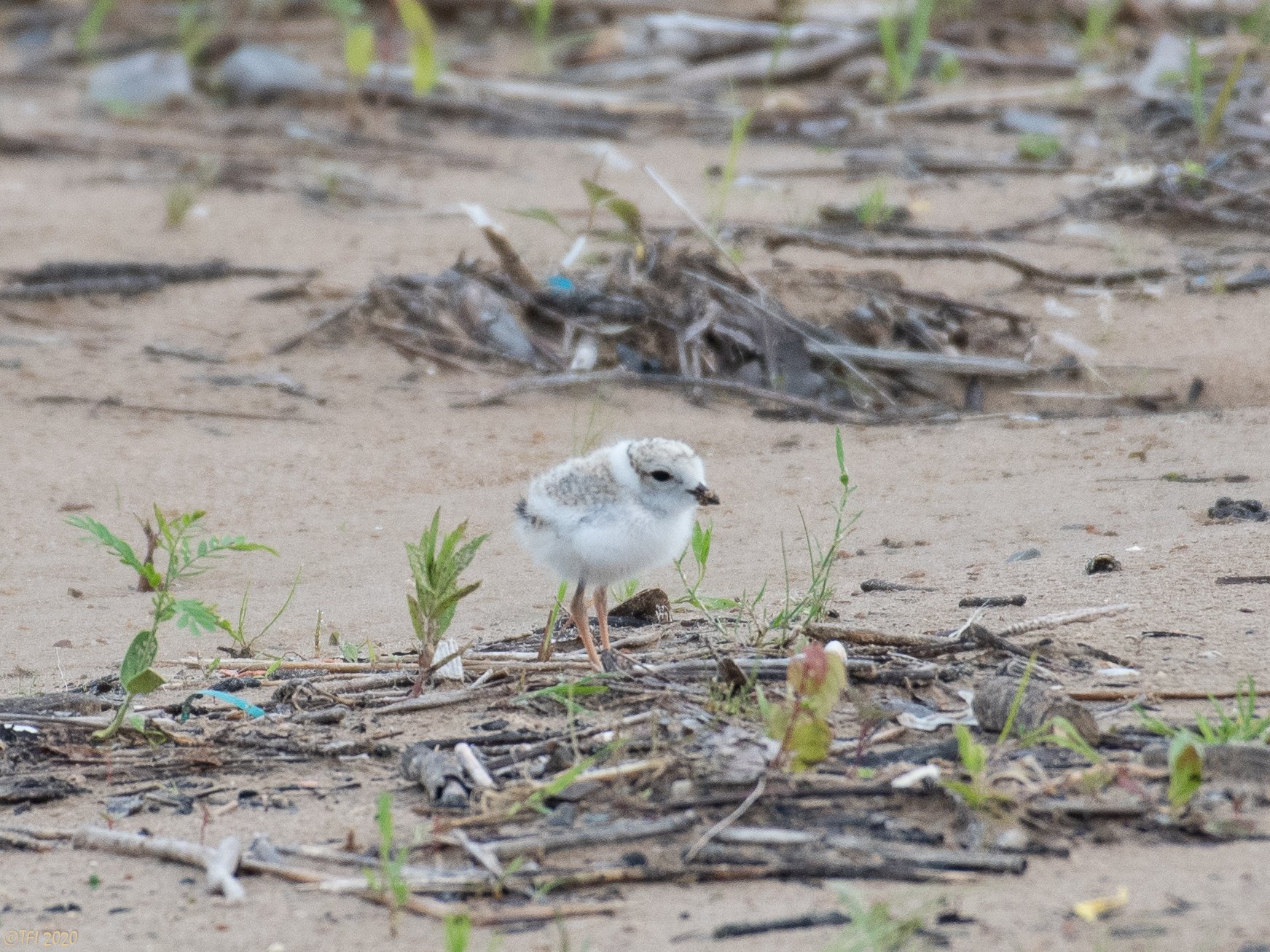
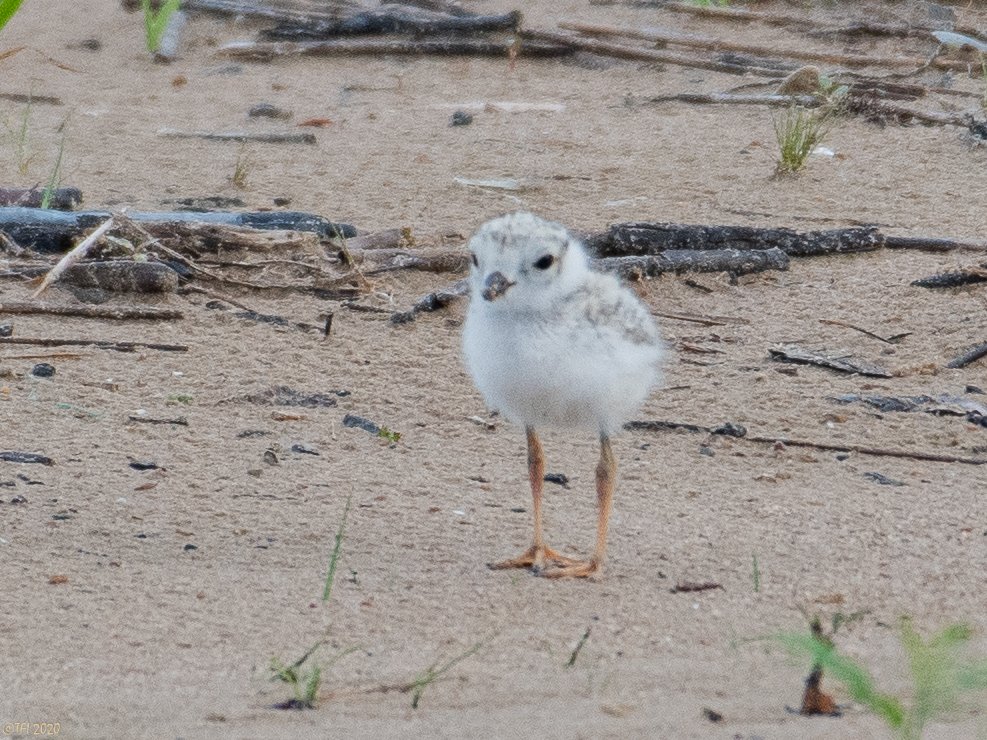
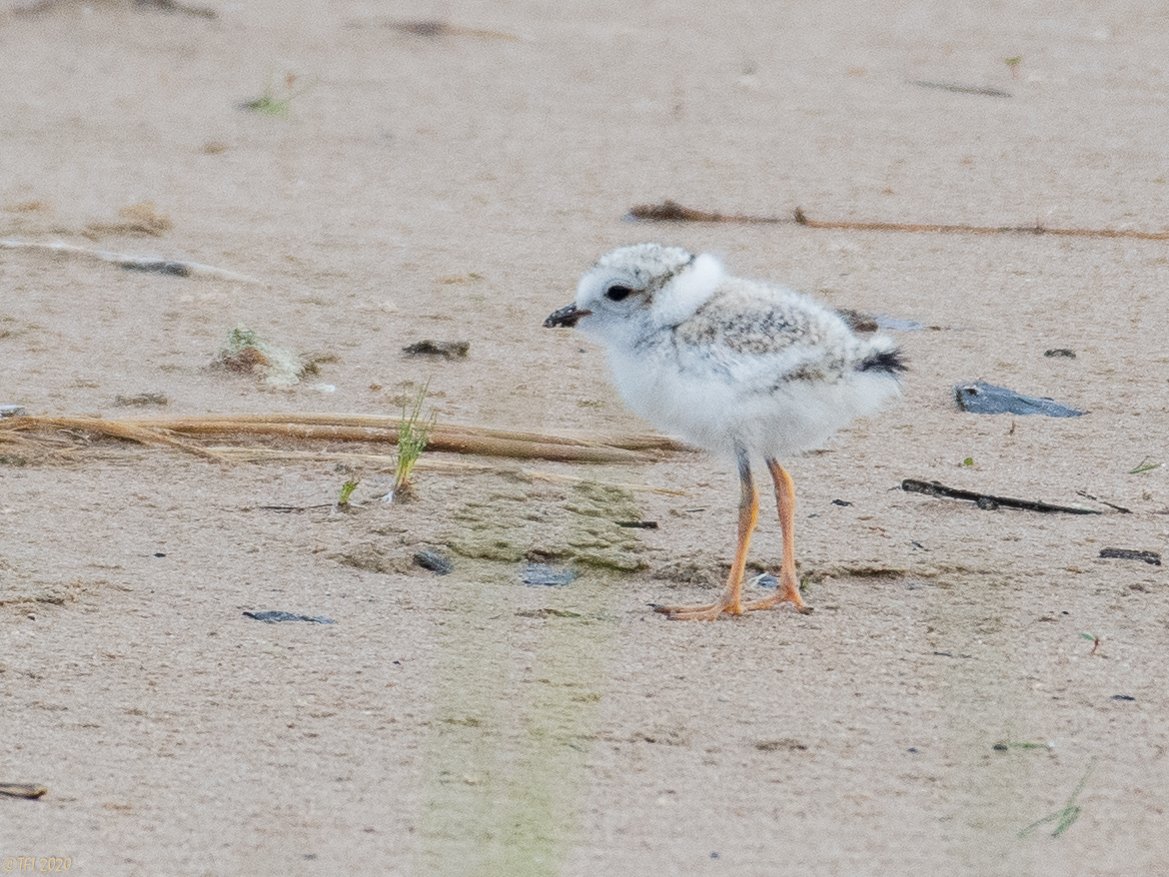
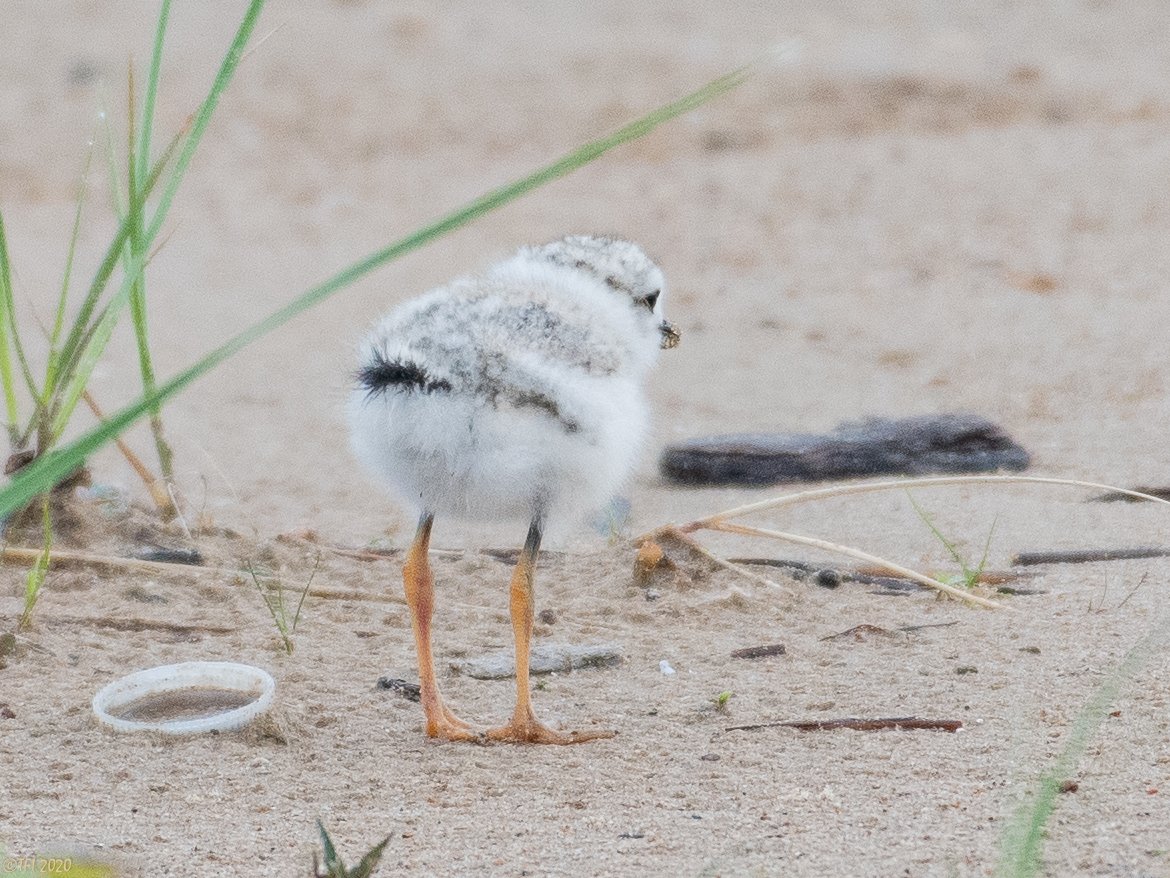
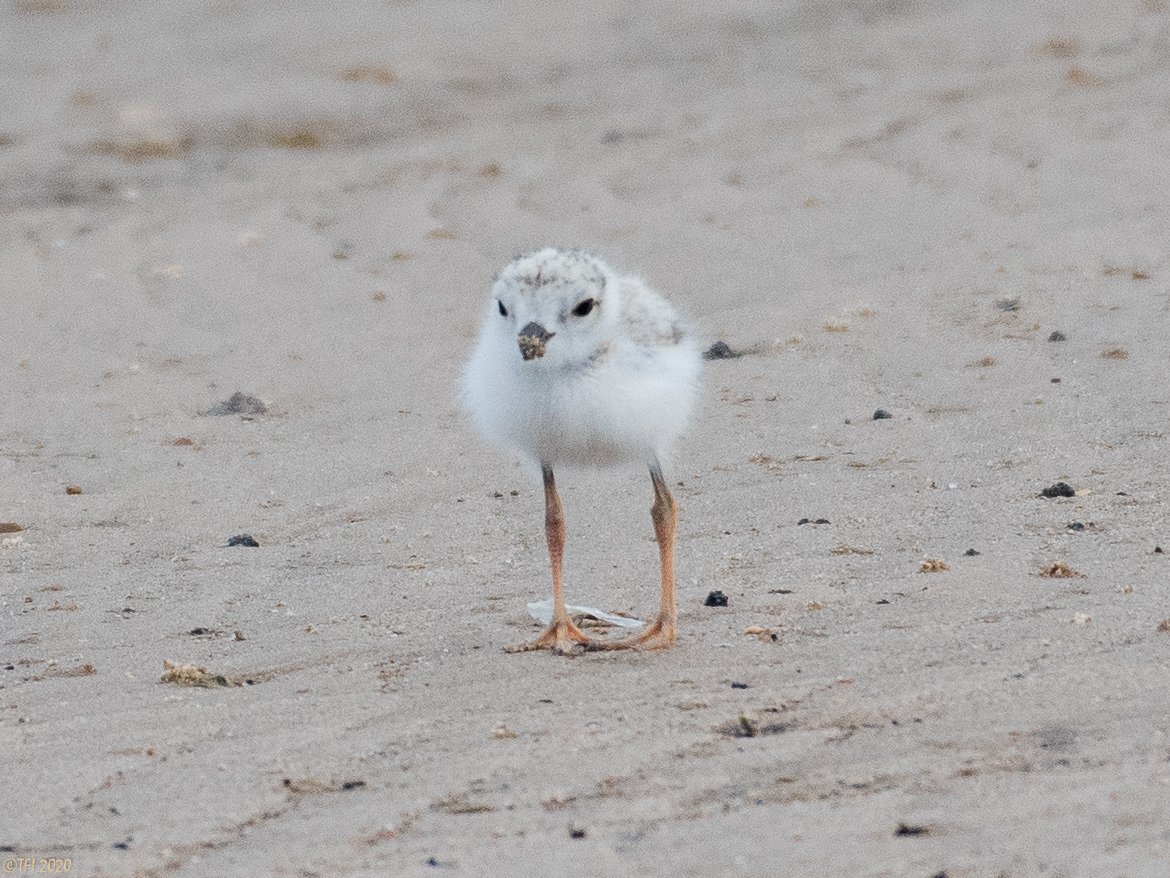
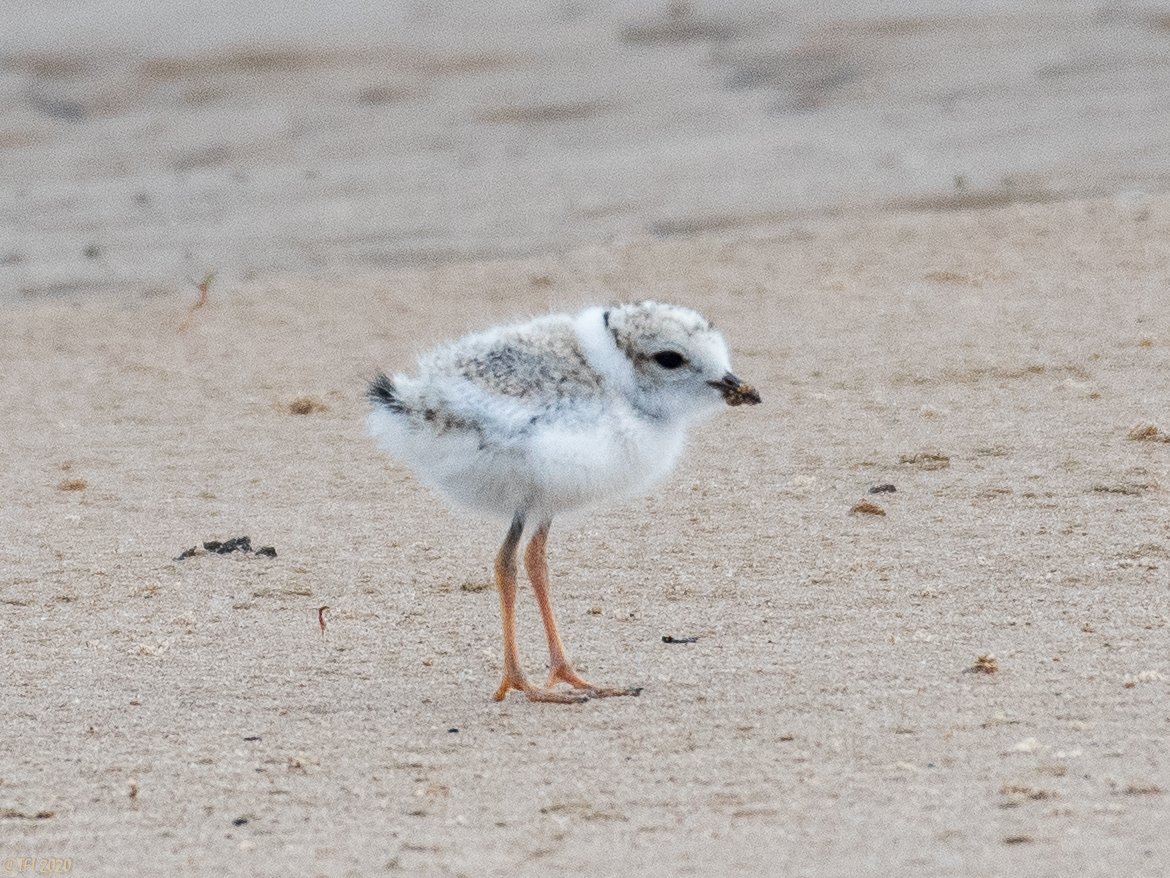
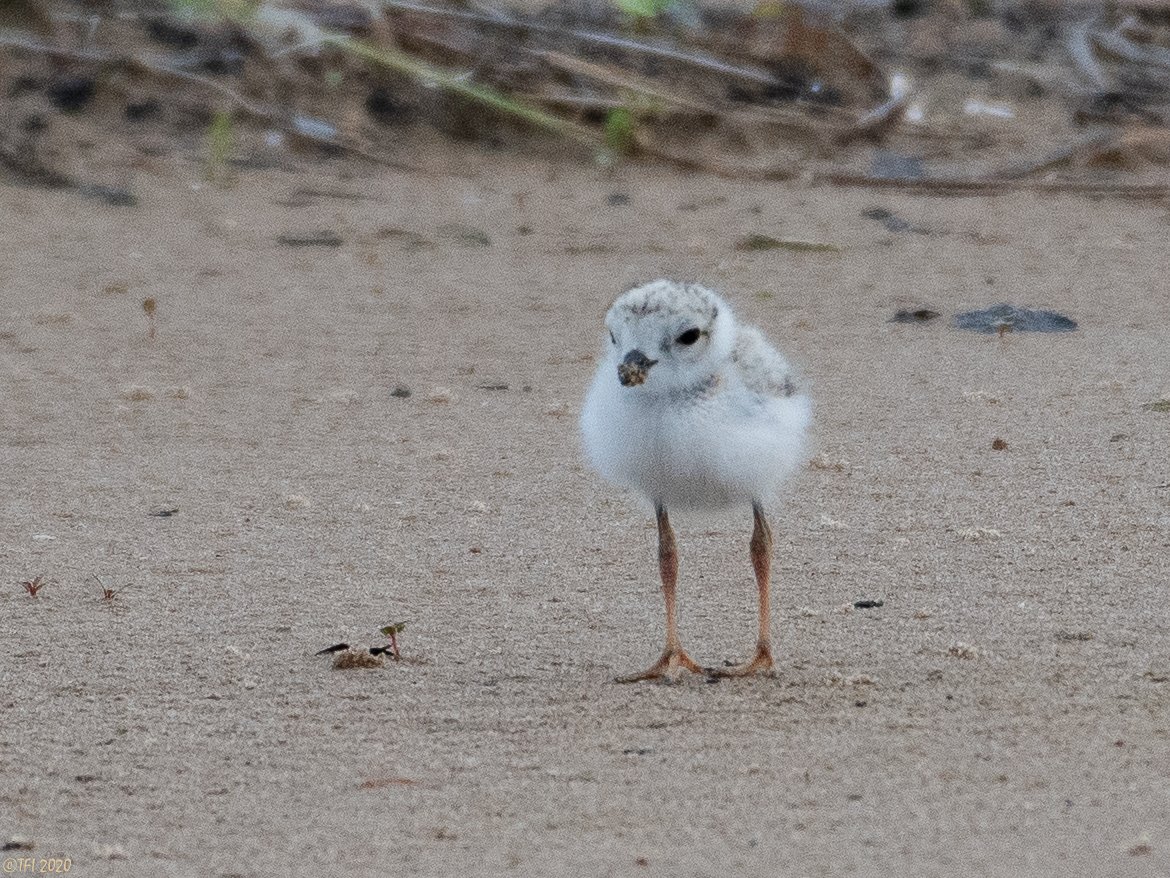
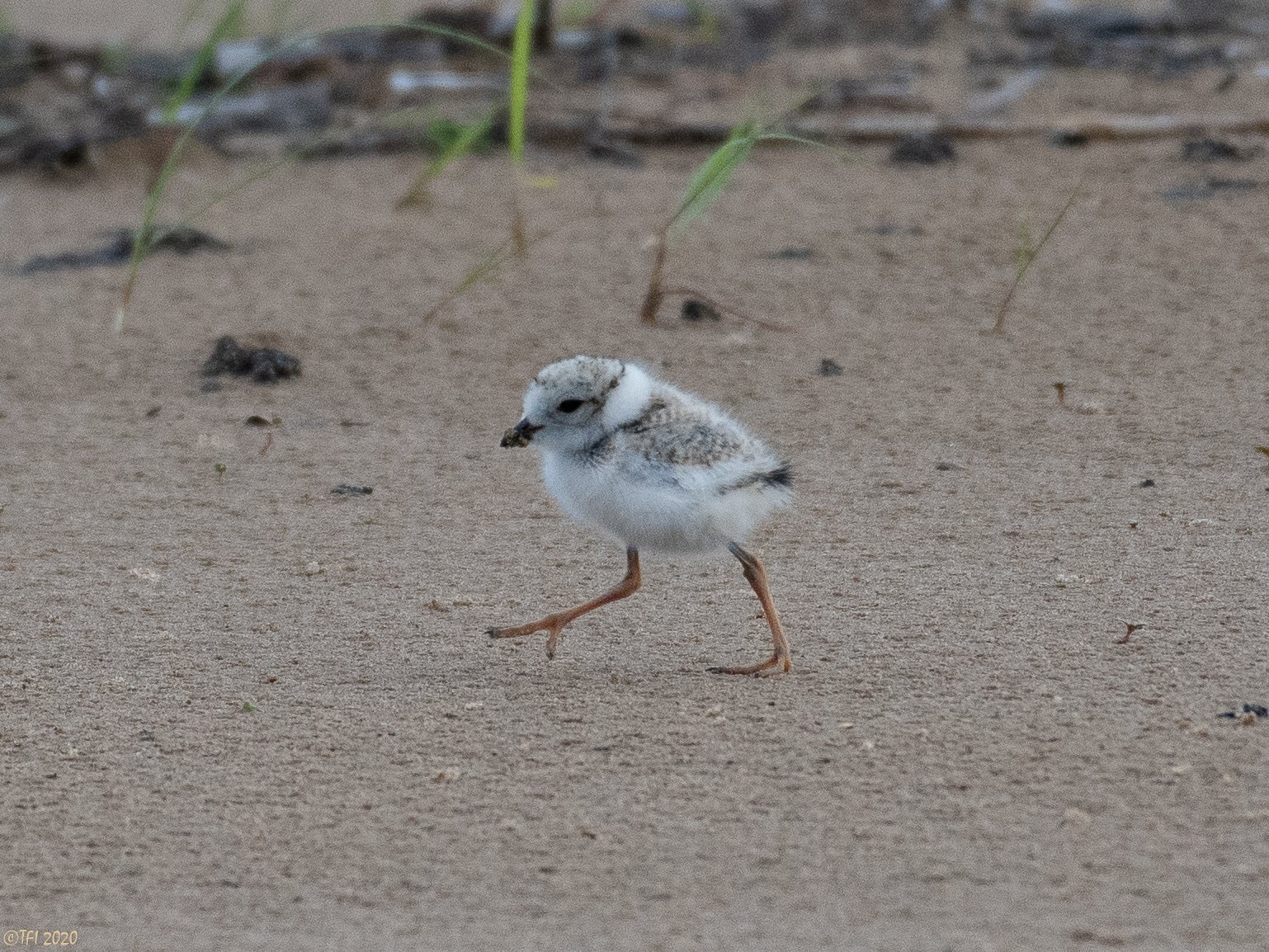
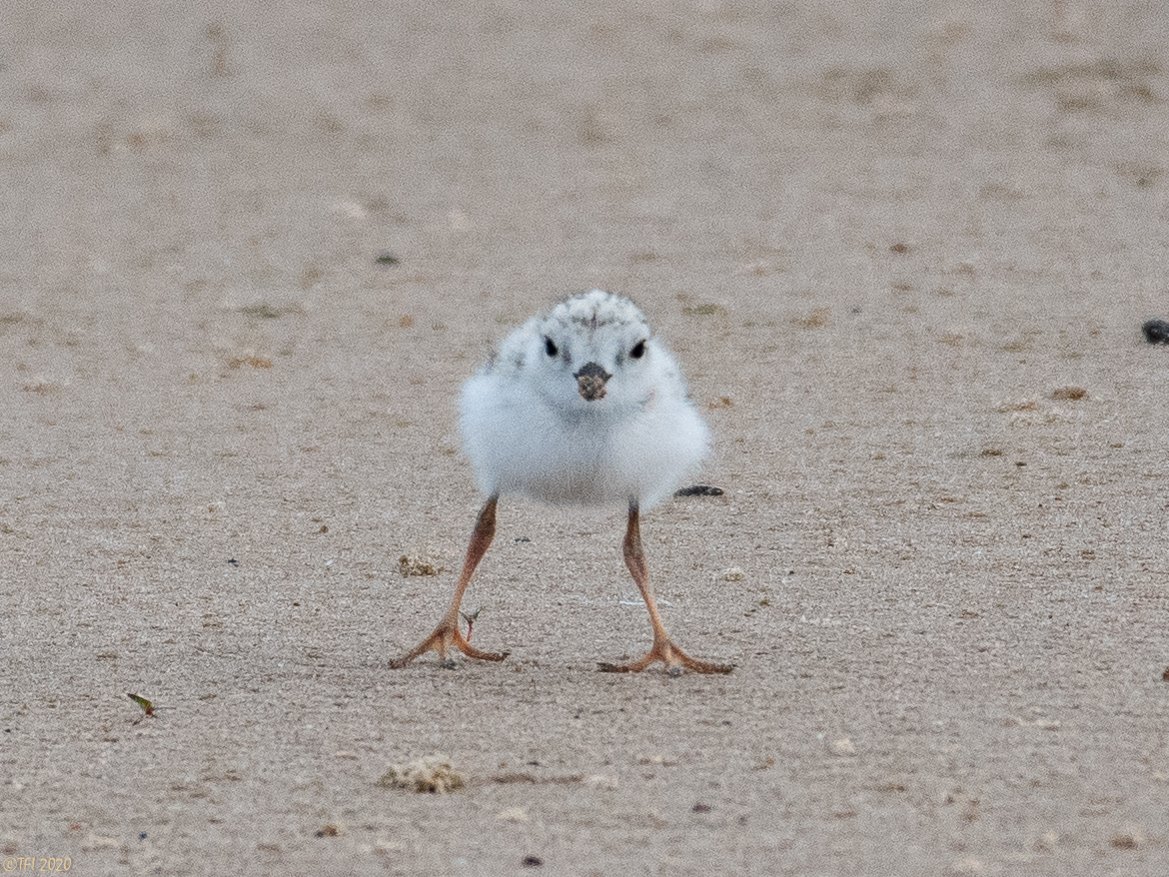
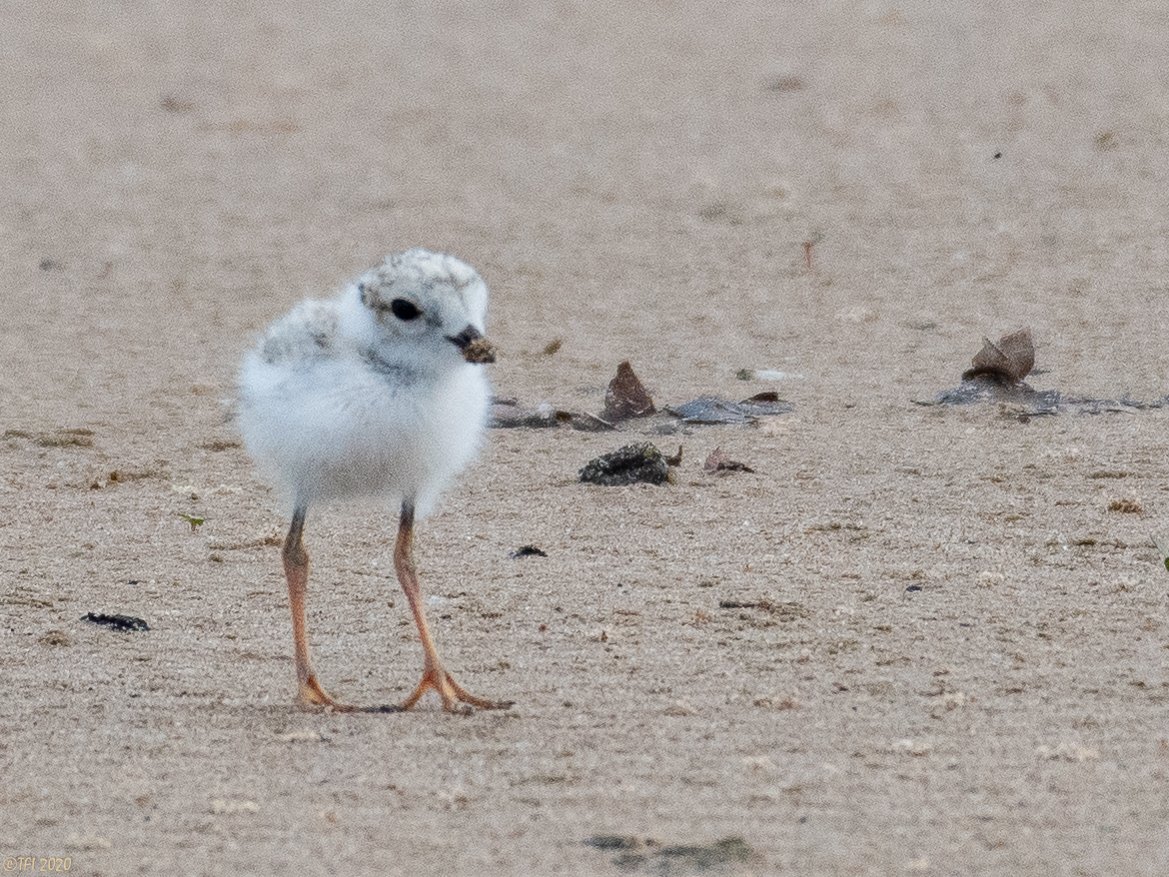
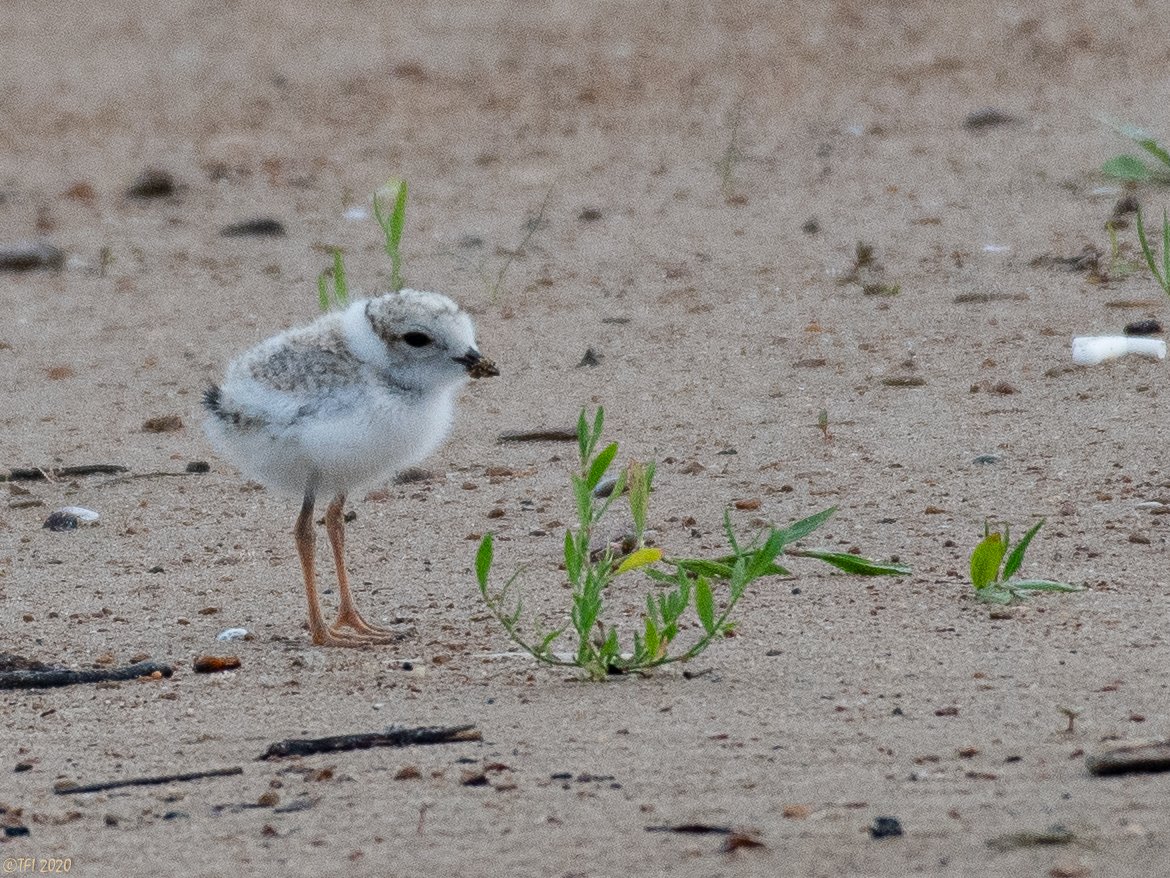
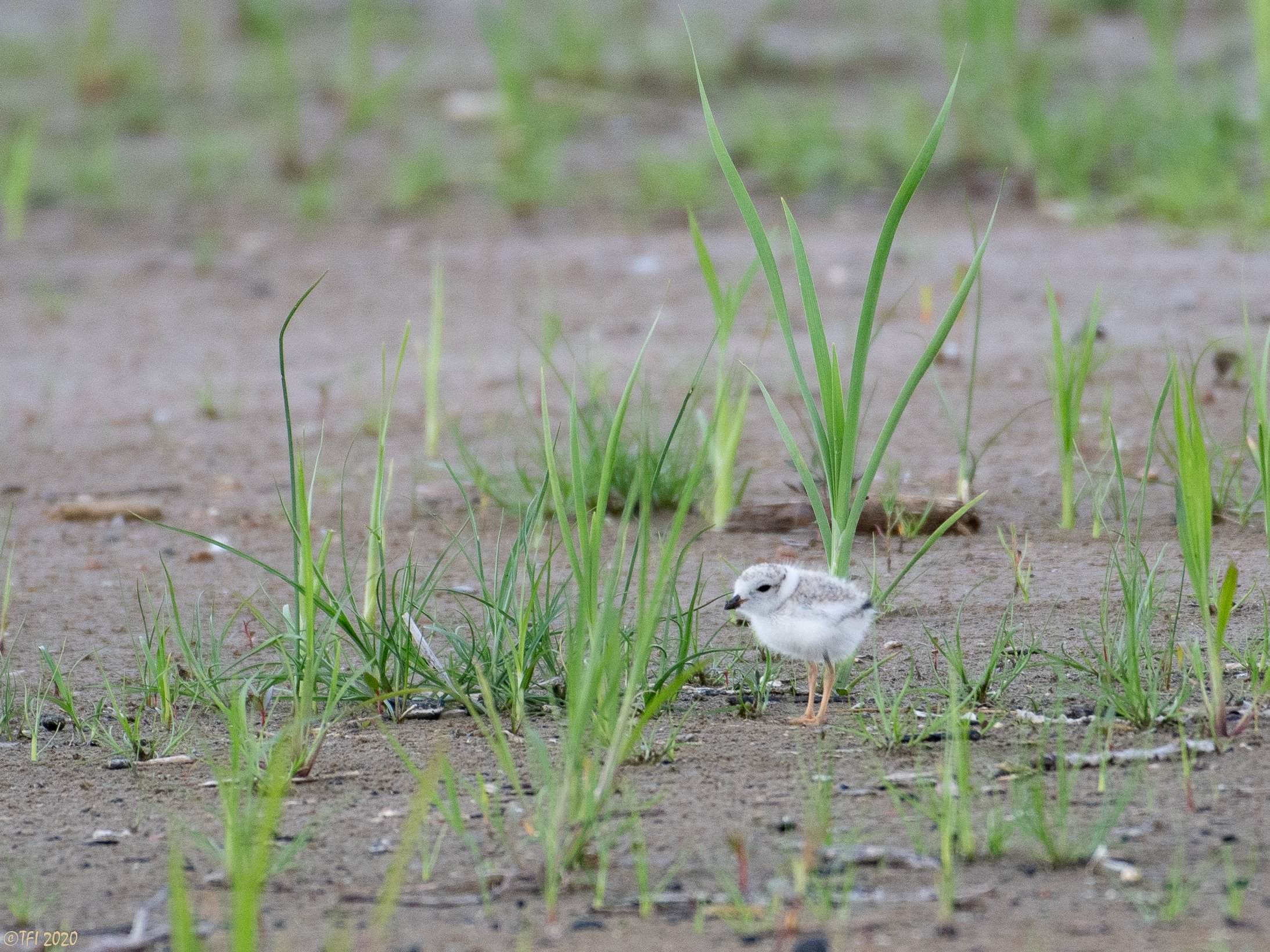
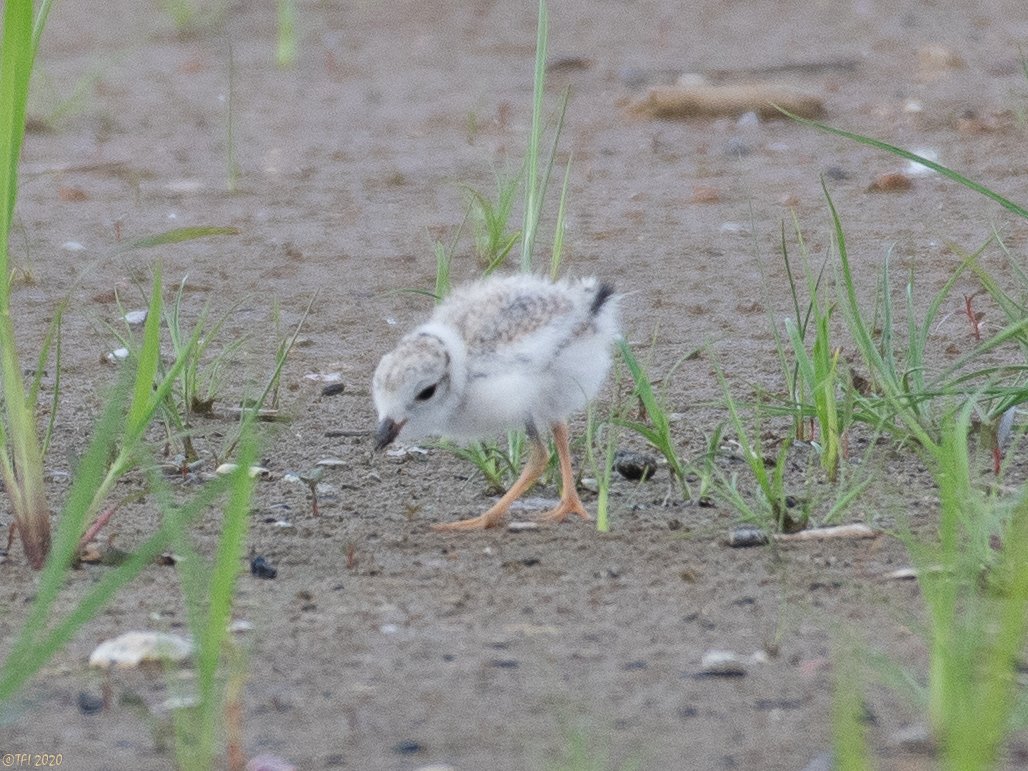
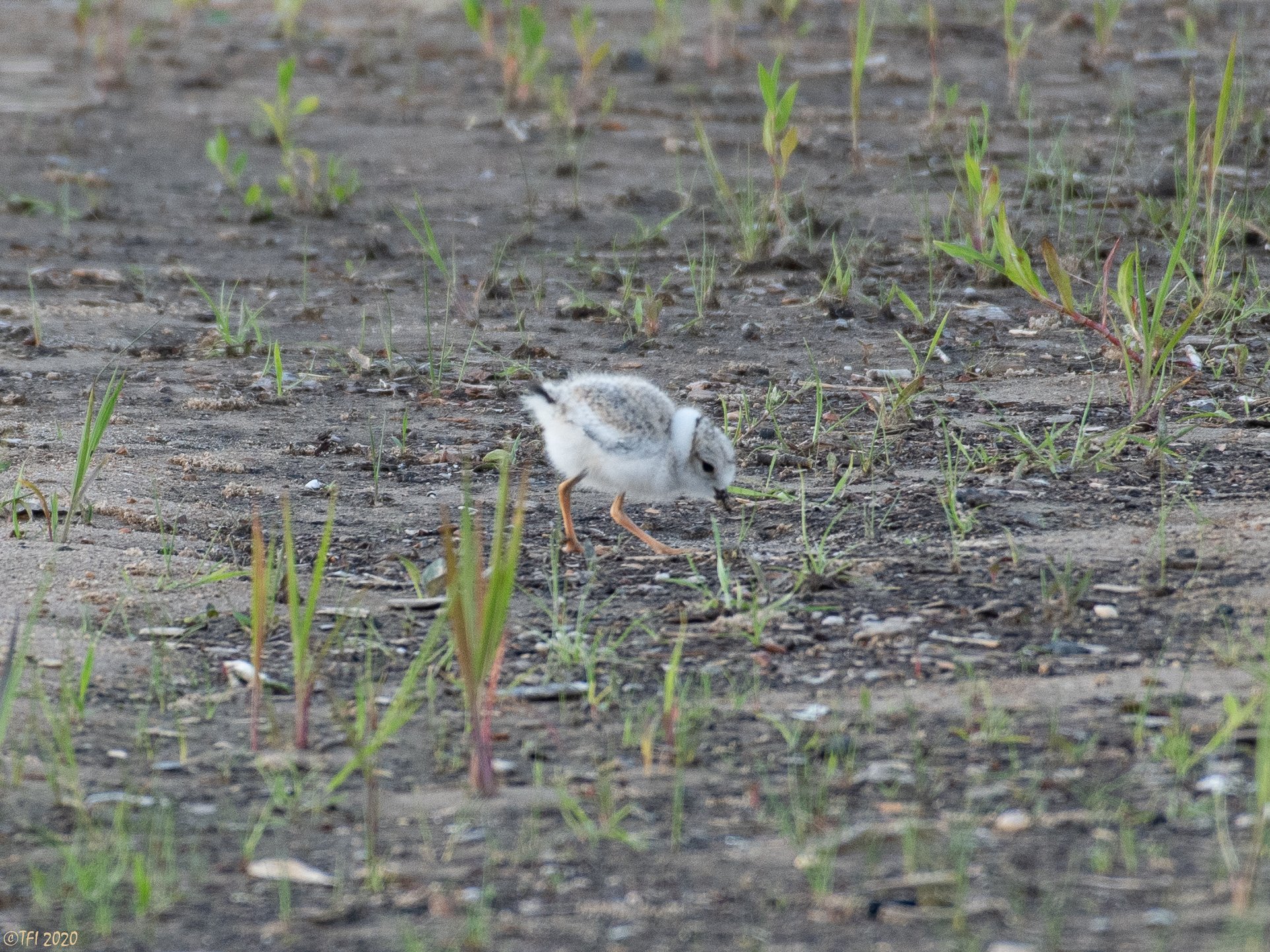
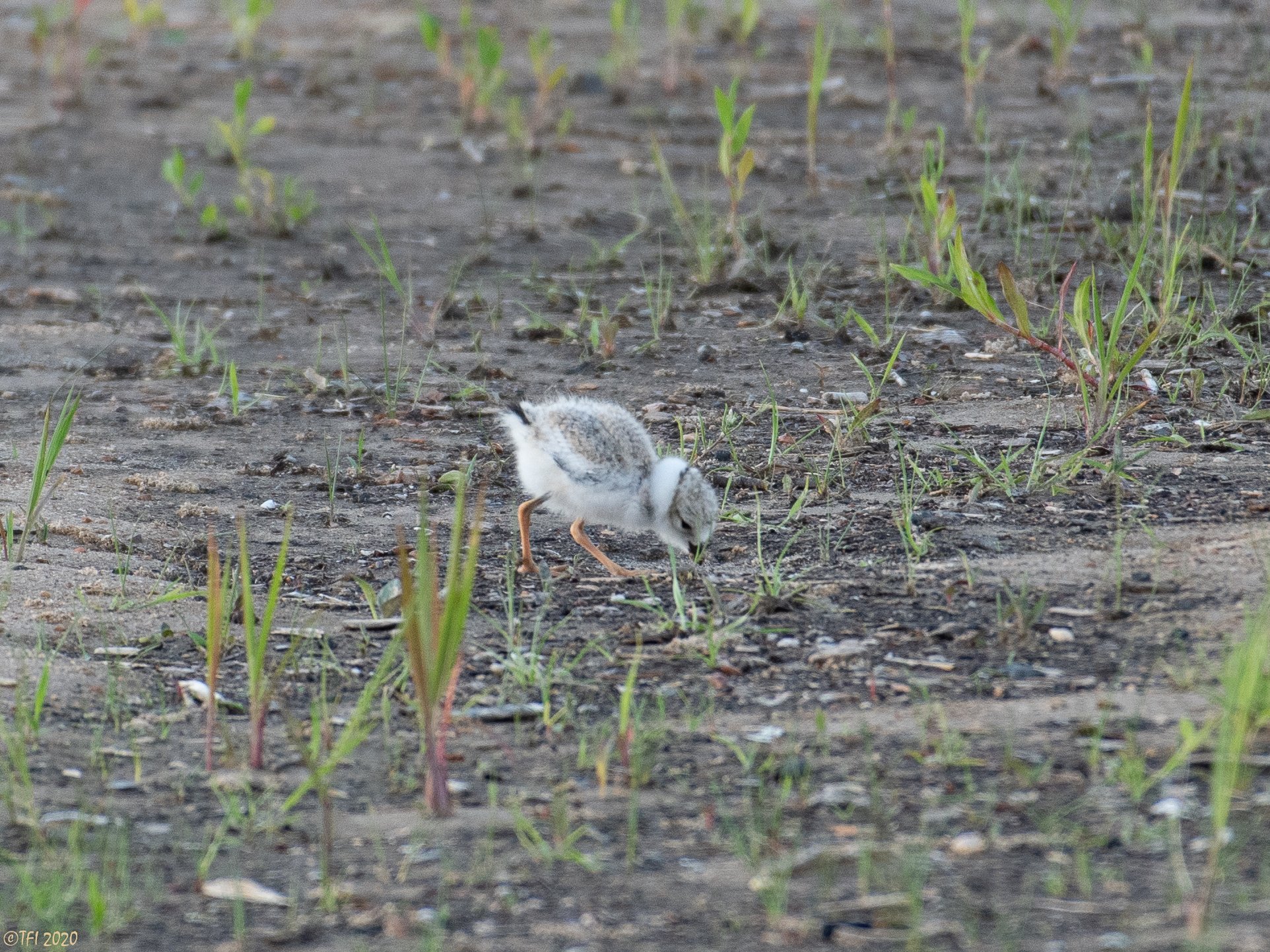
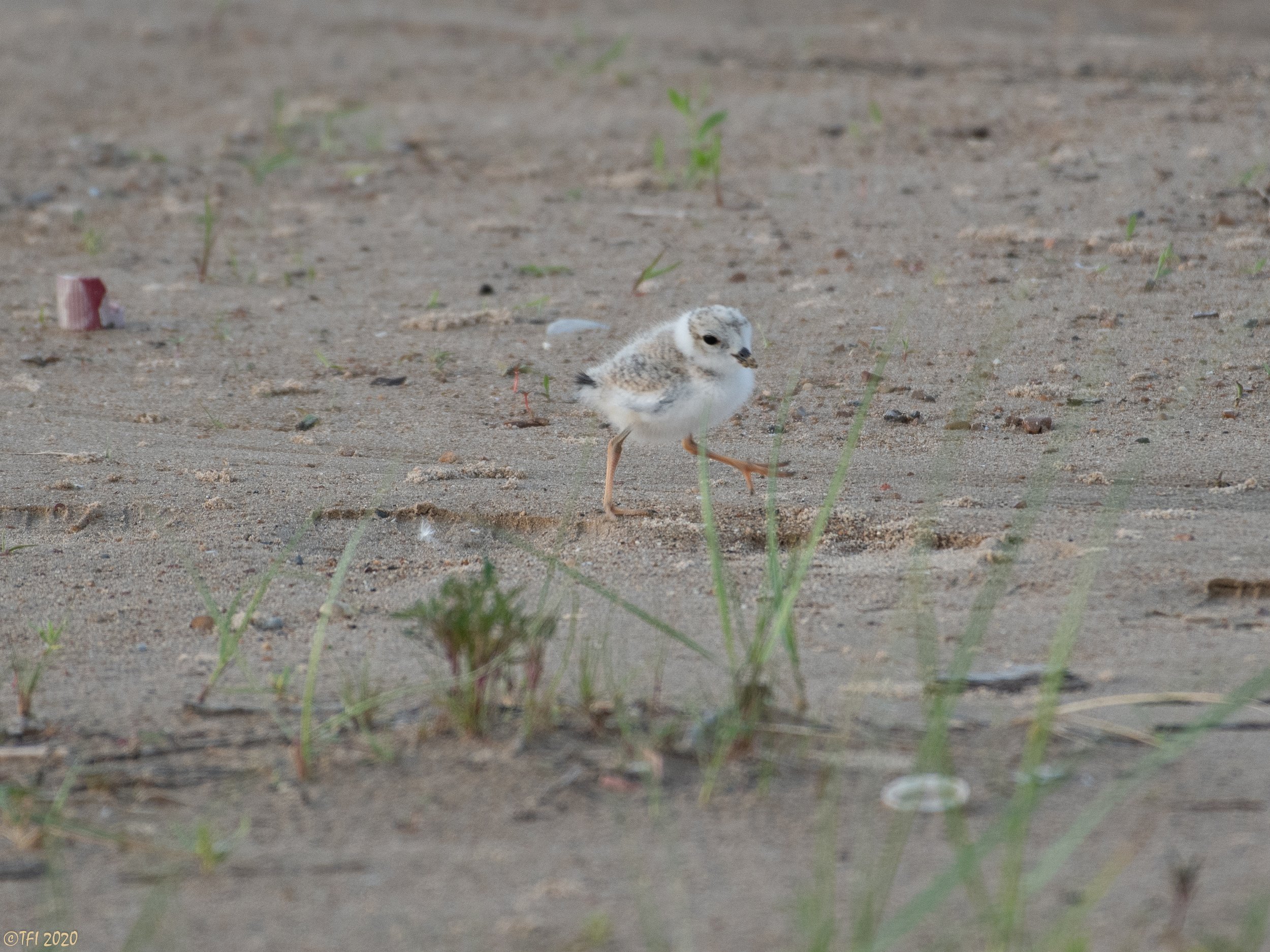
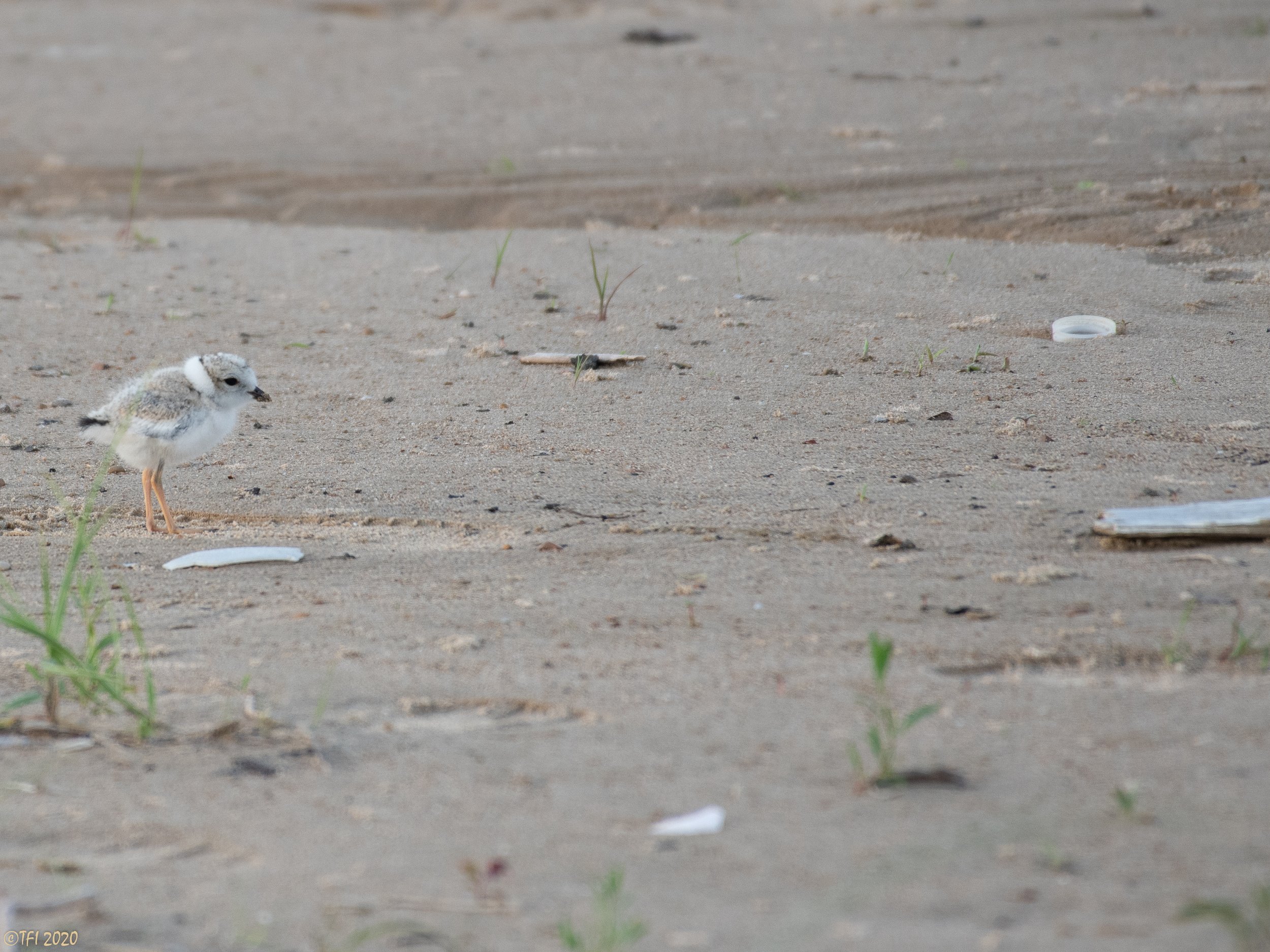
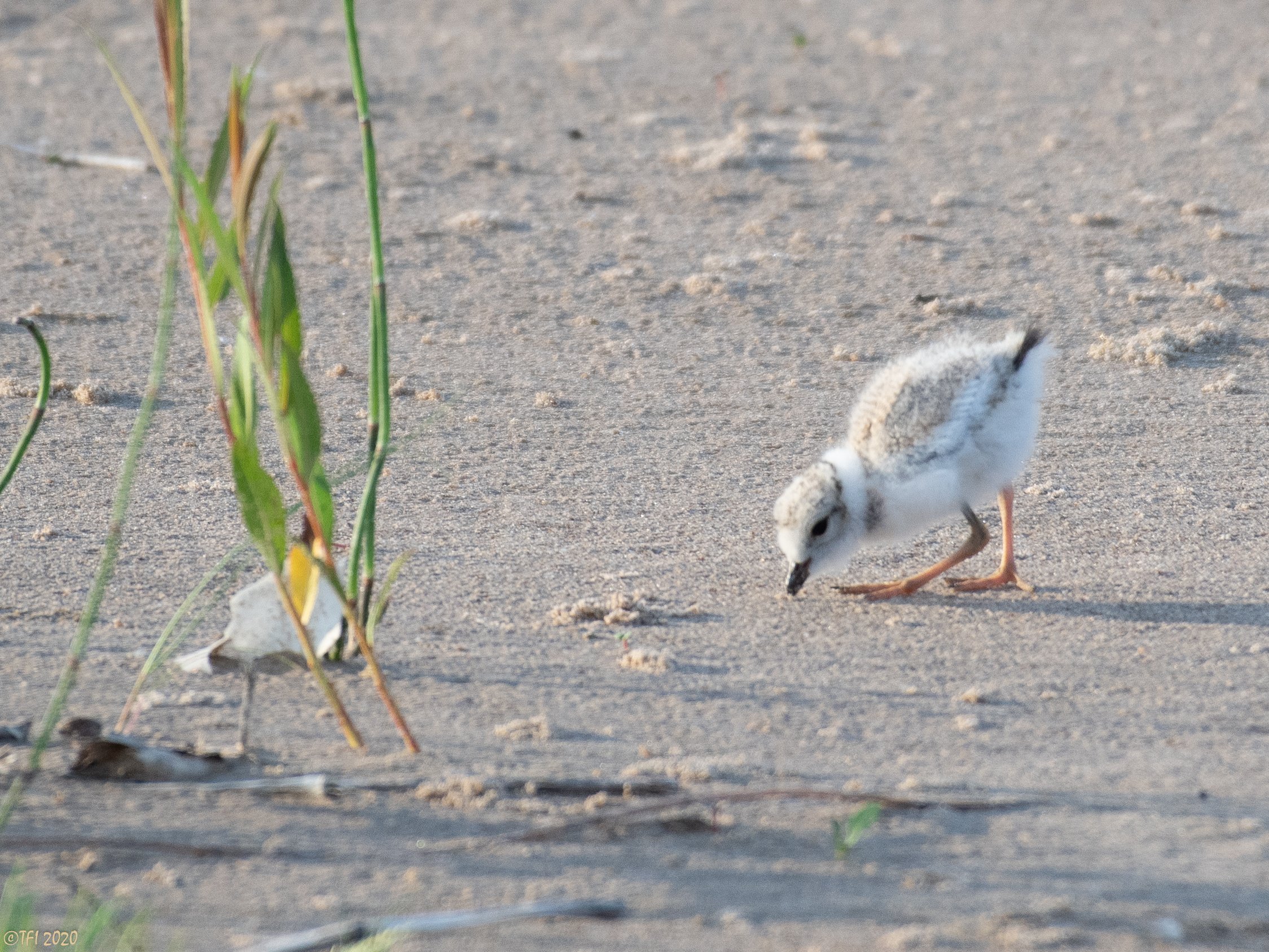
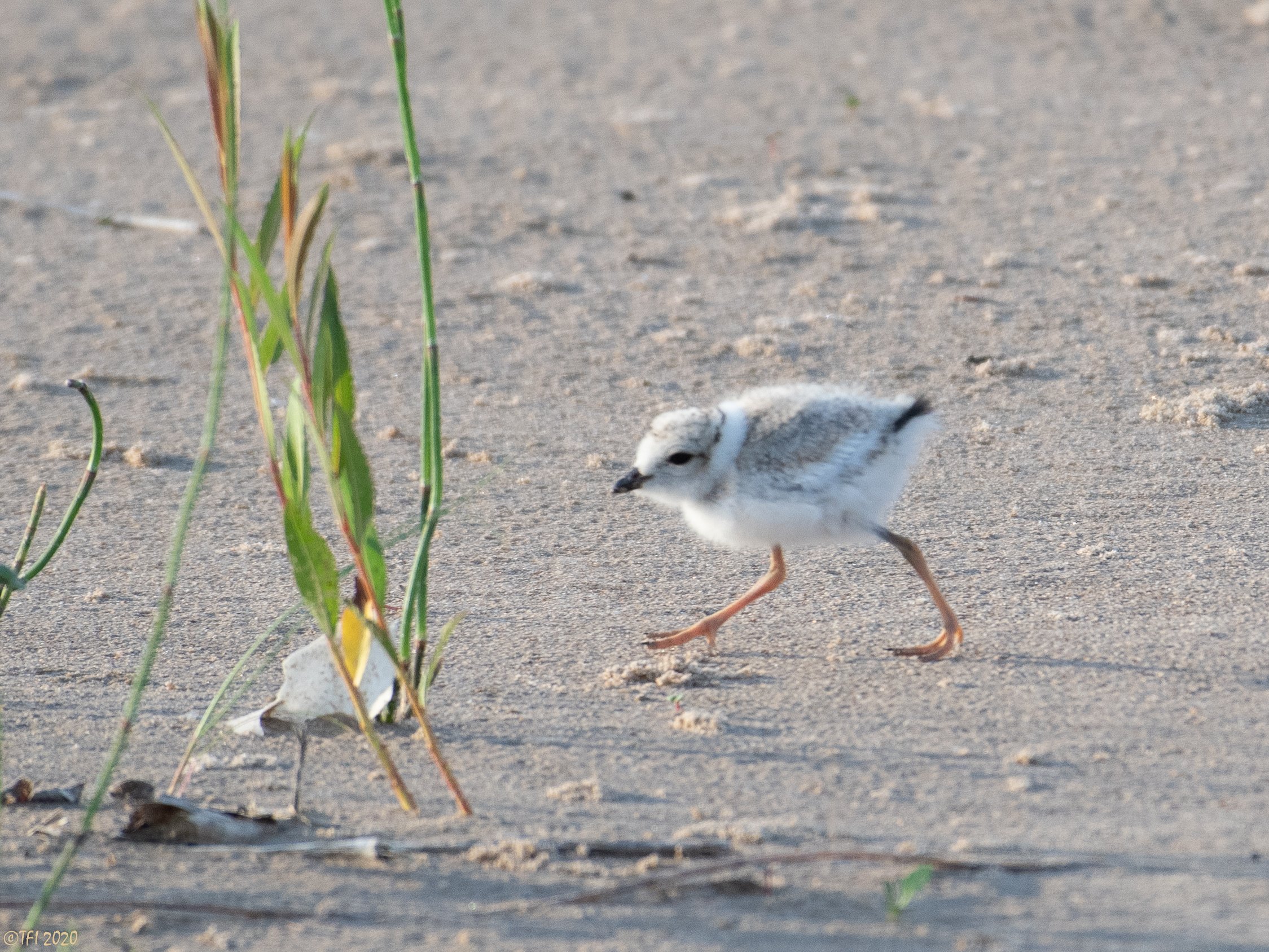
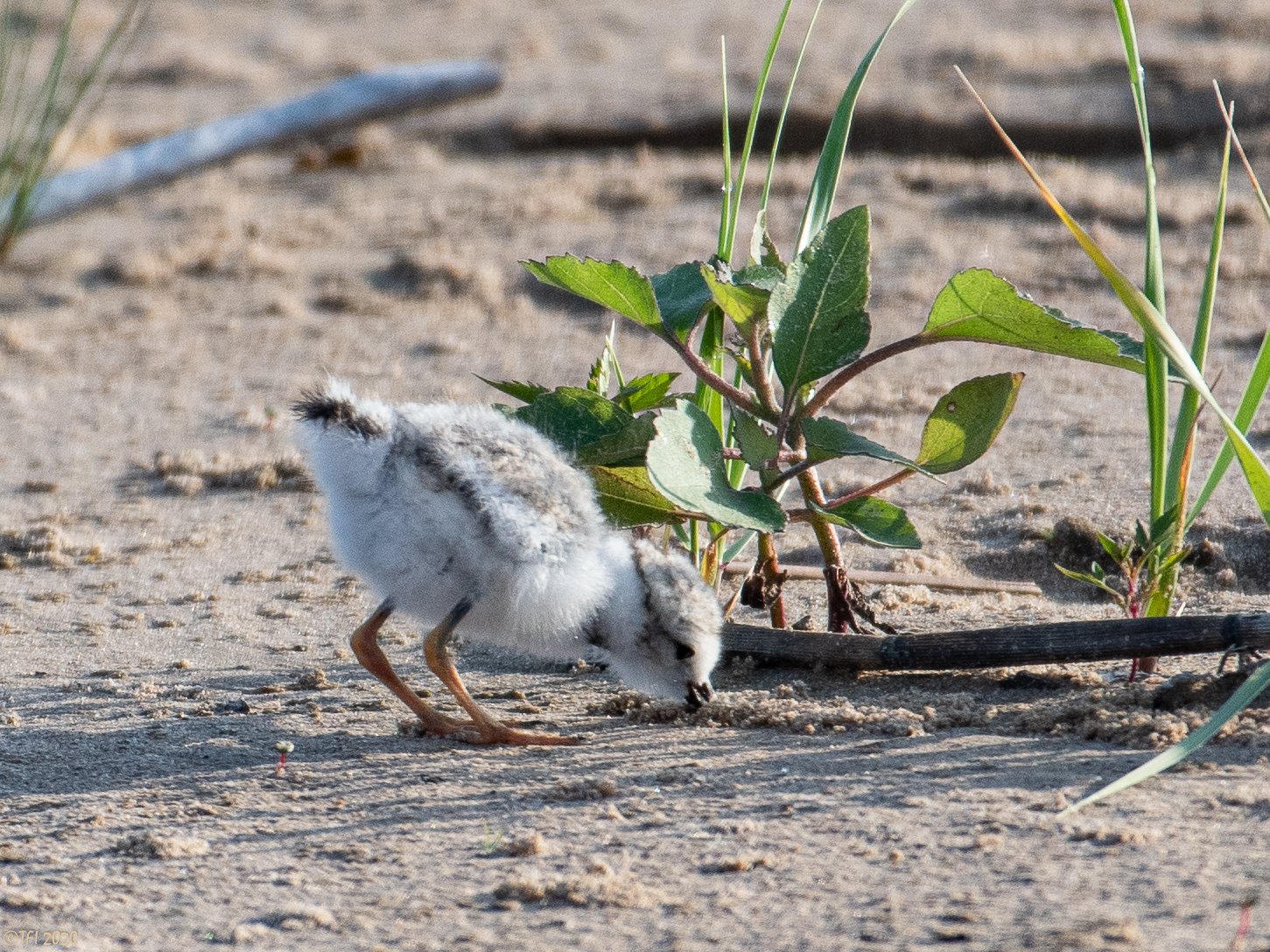
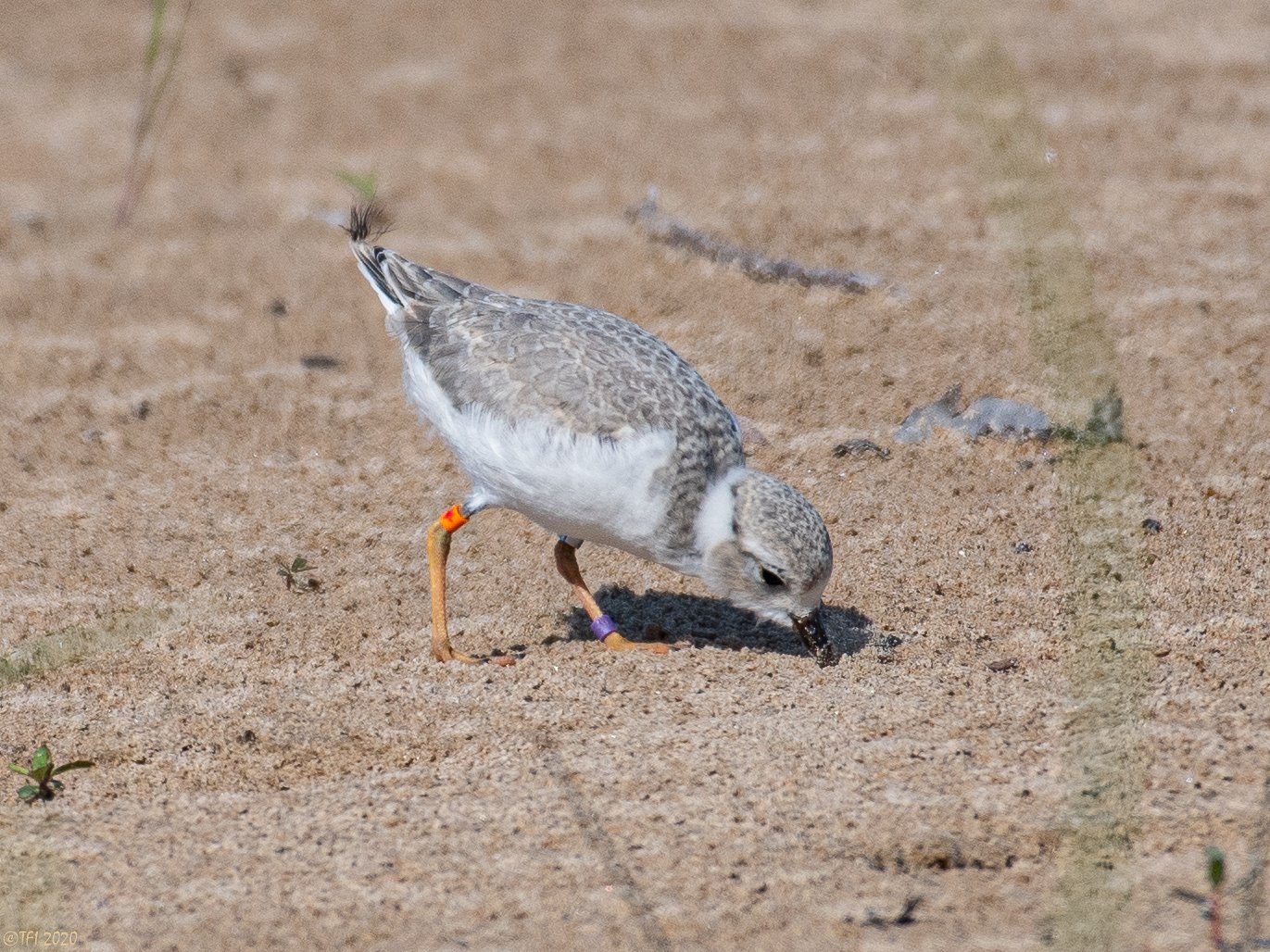
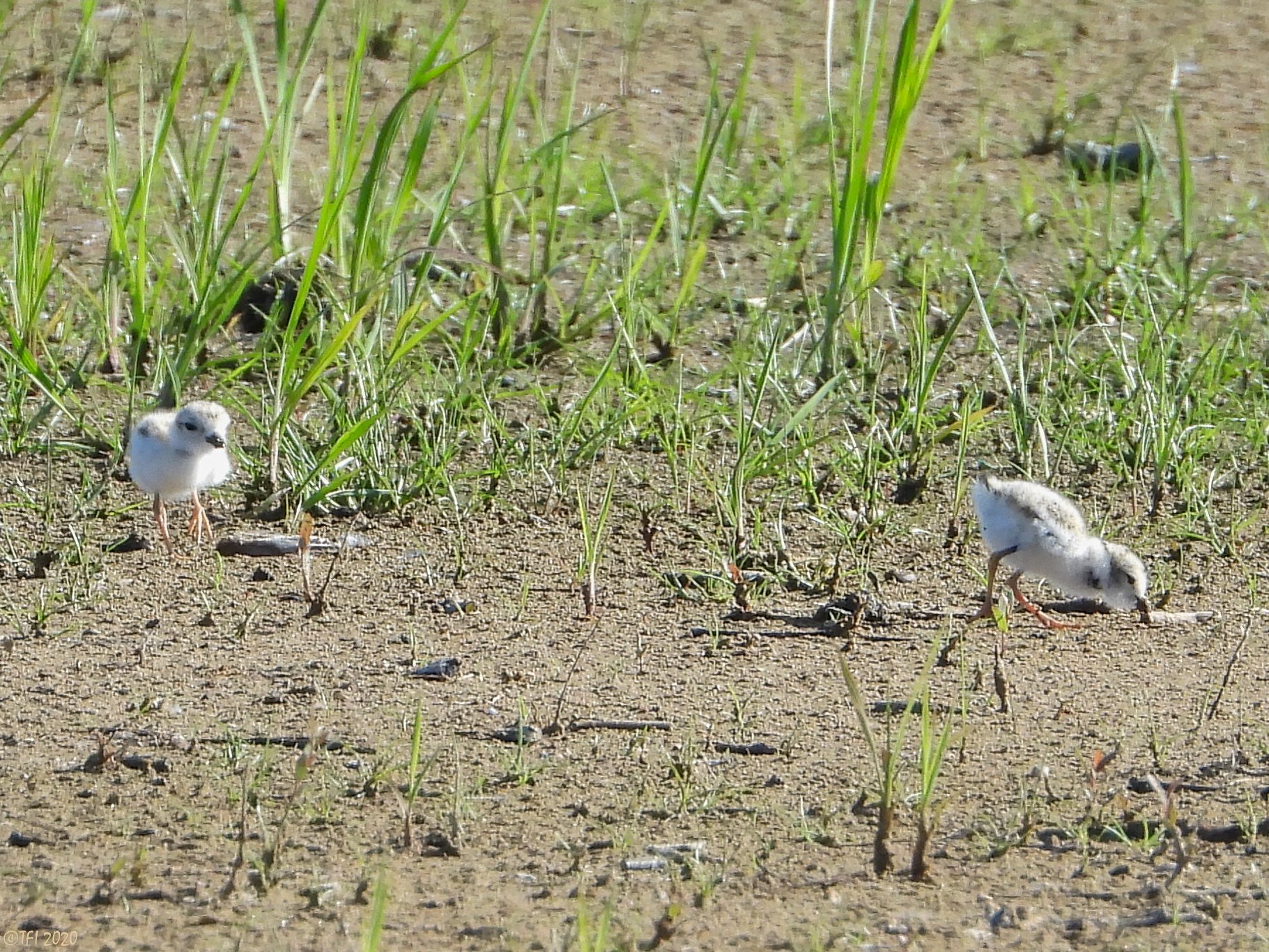
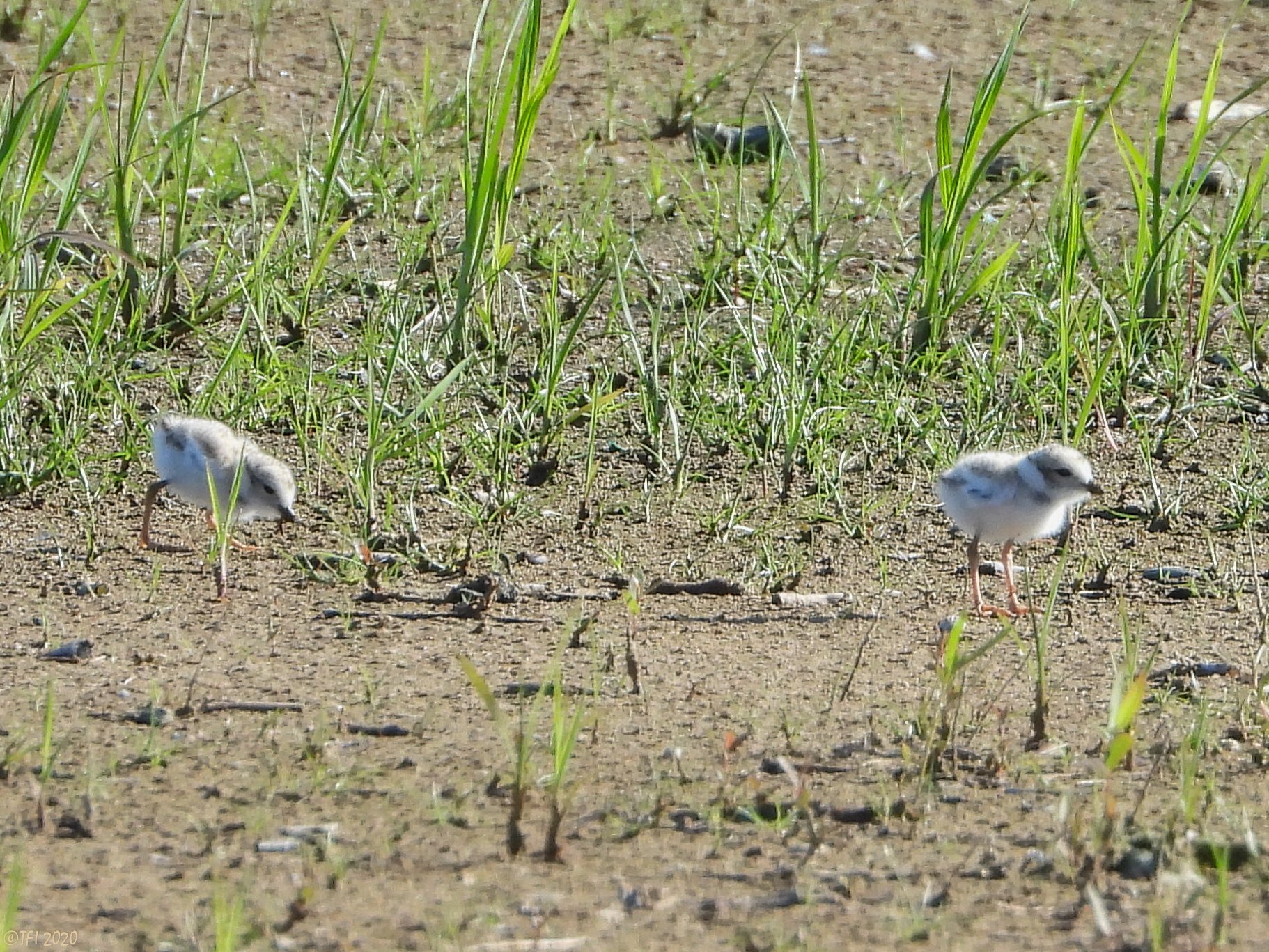
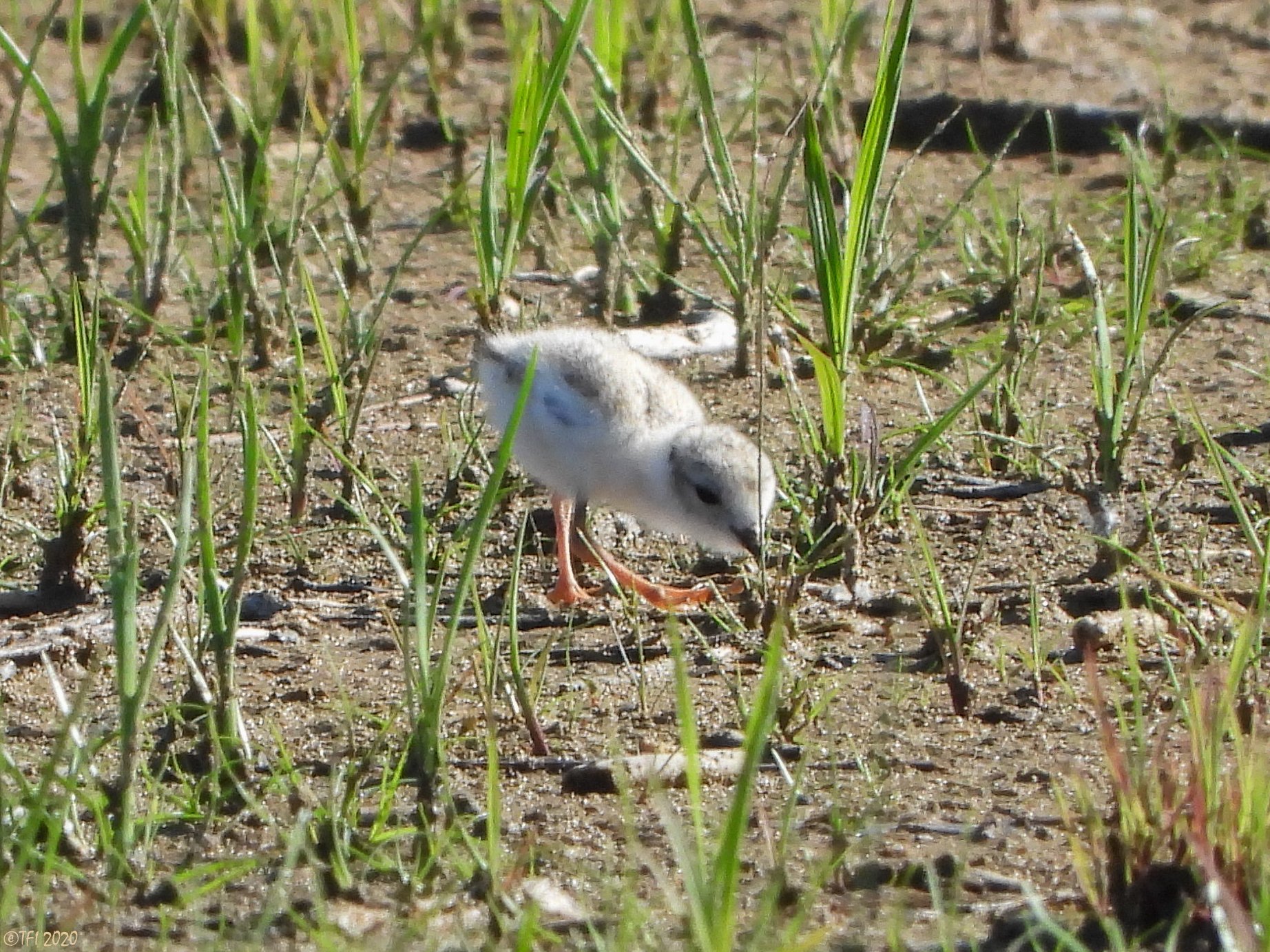

2021
With two seasons now under our belts, we felt certain that Monty and Rose would return. Preparations were made. We got fancy in 2021, designing bright orange t-shirts for the volunteers. We had our sights set for May 1 for their return, but Rose surprised us, arriving on April 25, with Monty close on her heels returning on April 26. We celebrated and got right down to the business of monitoring. The wonderful Montrose Beach Dunes long-time steward Leslie Borns had negotiated with the Chicago Park District to expand the natural areas by incorporating the old volley ball area, the nesting site in 2019 and the feeding site in 2020. Three beautiful acres were added to the natural areas. Rose and Monty recognized the importance of the habitat expansion and decided to nest in its midst, giving fantastic views of the nesting location. Fans and passerbys alike could stand behind the wall and observe their comings and goings. Everyone felt so optimistic about the success of this nest.
In the middle of one night, FWS Louise Clemency’s phone notified her of a photo from the surveillance camera. The photo showed both plovers off the nest, standing outside the exclosure, with a deflated balloon stuck on the exclosure.
Ballon stuck on exclosure, May 17, 2021 - Photo courtesy USDA camera and Louise Clemency, FWS.
Eggs will only remain viable about 2 hrs if incubation is interrupted. It was clear that the plovers were terrified by the balloon and would not go back on the nest while it remained there. Louise and her partner Jim Van der Kloot sprang into action, drove to Montrose and removed the balloons from the exclosure. The plovers immediately resumed incubation. It was a stark reminder of the negative impact on balloons on wild life. Just say no to balloons! They cause more harm than the fleeting joy then may bring you.
A few days went by. Expected hatching was only 5 days away when a devastating blow was dealt to the nest. A pesky skunk had broken a tine on the exclosure, enough to reach into the exclosure, reach the nest and grab the eggs. Monty and Rose kept each other company away from the empty nest, digesting what had just happened.
Skunk attacking exclosure, June 2, 2021. - Photo credit USDA camera and Louise Clemency, FWS.
True troopers that they are, they started courting and mating within a day. Soon a new nest location was chosen, on the dunes bordering the protected beach. A new exclosure was installed and the wait started anew.
Monty and Rose seemed comfortable in the new area. It was more difficult to see them, as they were more distant from where people could stand and watch them. Often, they would disappear in the grass and worry us until we would see them again. The days went by until finally hatching started in the afternoon of a cold and windy day. One egg hatched that day, a Tuesday. Two more eggs hatched the following day, Wed. Monty primarily took care of the chicks that had hatched, taking them not far from the nest, to a nearby grassy area where they could feed. Rose continued incubating, refusing to give up on the egg and the chick she could likely hear piping inside. Thursday went by, no hatching. On Friday morning, we watched. Rose was still incubating, but soon got off the egg and watched intently for nearly 30 minutes. Nothing happened. She made the decision that the egg would not hatch, that her three chicks needed her and she left the nest with one last look.
Under the direction of FWS, Cassi Sari and Claire Rover, of the Chicago Park District and Cardno, respectively, collected the unhatched egg, placed it in an egg carton lined with cotton and drove it to the Lincoln Park Zoo. It was a “we got nothing to lose and much to gain” action. Monty and Rose doted on their little chicks, watching over them, brooding them under their wings, and leading them to a little fluddle with yummy bugs.
On Saturday morning, by 7 am, we had received news that “Zoo baby,” as they would come to be known, had hatched at the Lincoln Park Zoo. Within hours, Sunny Nelson, then curator of Birds at the zoo, transported him to Montrose and walked to the protected area where Monty and Rose were feeding with their young ones. Monty and Rose were threated at first by this intruder coming close to them. However, the moment Sunny released the chick, who was piping vigorously, Rose ran towards it, spread her wings and took the chick under her. It was a moment of such sweet love and tenderness, a moment of triumph. A little bit later, Rose got up, returned to the other three chicks and Monty came to greet his latest hatch. Monty did not go all the way to the chick. Instead, he stopped short of the chick, piping lovingly, encouraging the chick to move and come to him, which the chick did. Yay! The full story appears here.
The zoo had sprayed a tiny bit of green on the chick’s feathers so that we could recognize it easily. It was easily differentiated from their sibling, however, by the noticeably smaller size.
The family thrived. At times, one could see all four chicks lined up at the fluddle, feeding, little cotton balls at the edge of the water. A tennis ball lost in the sand nearby gave a wonderful point of reference and size comparison to the chicks. For a while, they were definitely smaller than the ball! A Monarch butterfly hovering in the area dwarfed the littlest of the chicks.
Chick and tennis ball, July 9, 2021.
But tragedy was to strike again. During a week-end in mid-July, Monty and Rose were constantly attacked by Killdeer and fought valiantly. One chick disappeared first, then another. No one witnessed what happened to them and we will never know conclusively what happened, as there had also been raptors in the area.
The two remaining chicks, “Yellow Star” and “Green Star/Zoo baby” received their names, Imani and Siewka, respectively. When Rose left in early August, Monty continued doting on them, taking them to feed at the beach volleyball courts early in the morning, bringing them back to the shore later on. They all paraded down the blue boardwalk, giving wonderful and fun looks. Imani, having hatched earlier, started flying first and would go visit dogs at the dog beach. Eventually, Siewka learned how to fly as well and enjoyed the length of the public beach. Monty took off from Montrose and arrived in Texas less than 4 days later. Imani visited Waukegan and 63rd St before going on South. Siewka was the last to be spotted at Montrose. Imani and Siewka were not spotted on wintering grounds and have not returned to the Great Lakes as of this writing, so we are unclear about their fate.
A special thank you to all the 2021 volunteers as they endured a long season and significant ups and downs with the first nest being raided and two chicks being lost.
Photos of the 2021 family - Photos credit: Tamima Itani
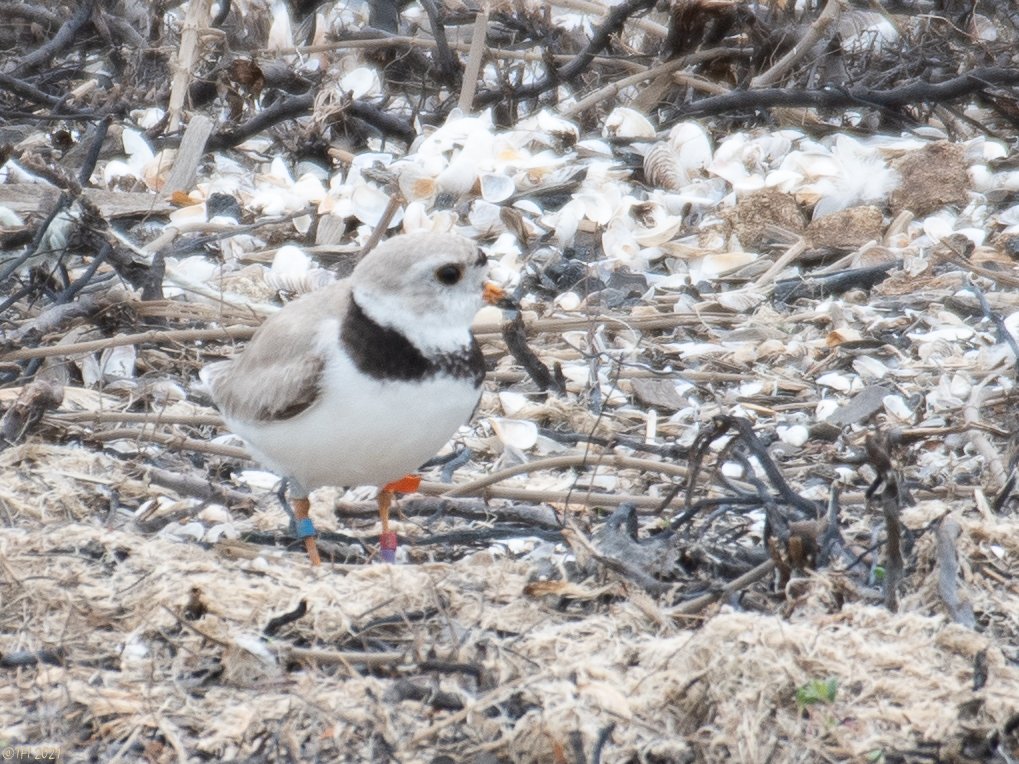
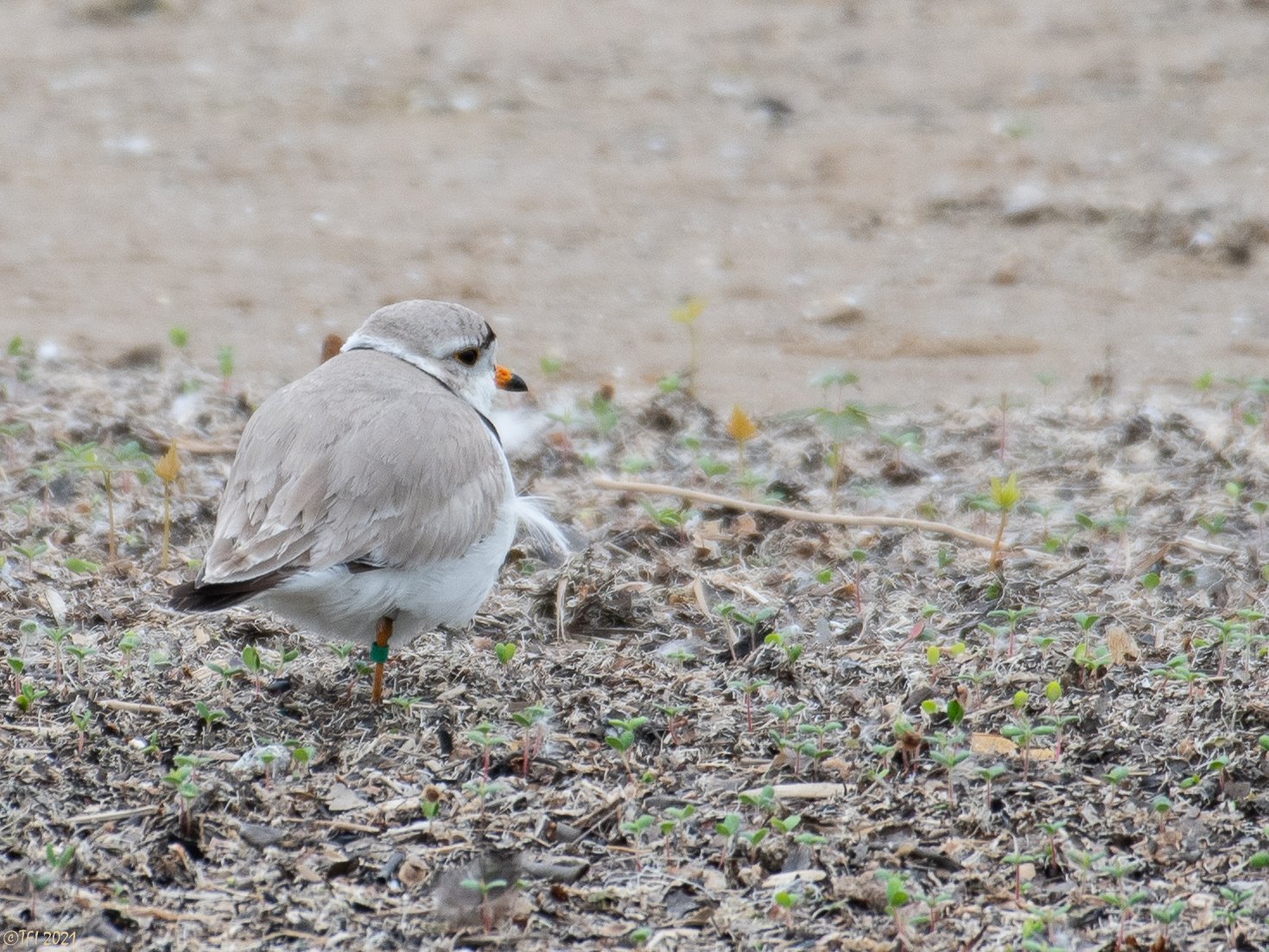
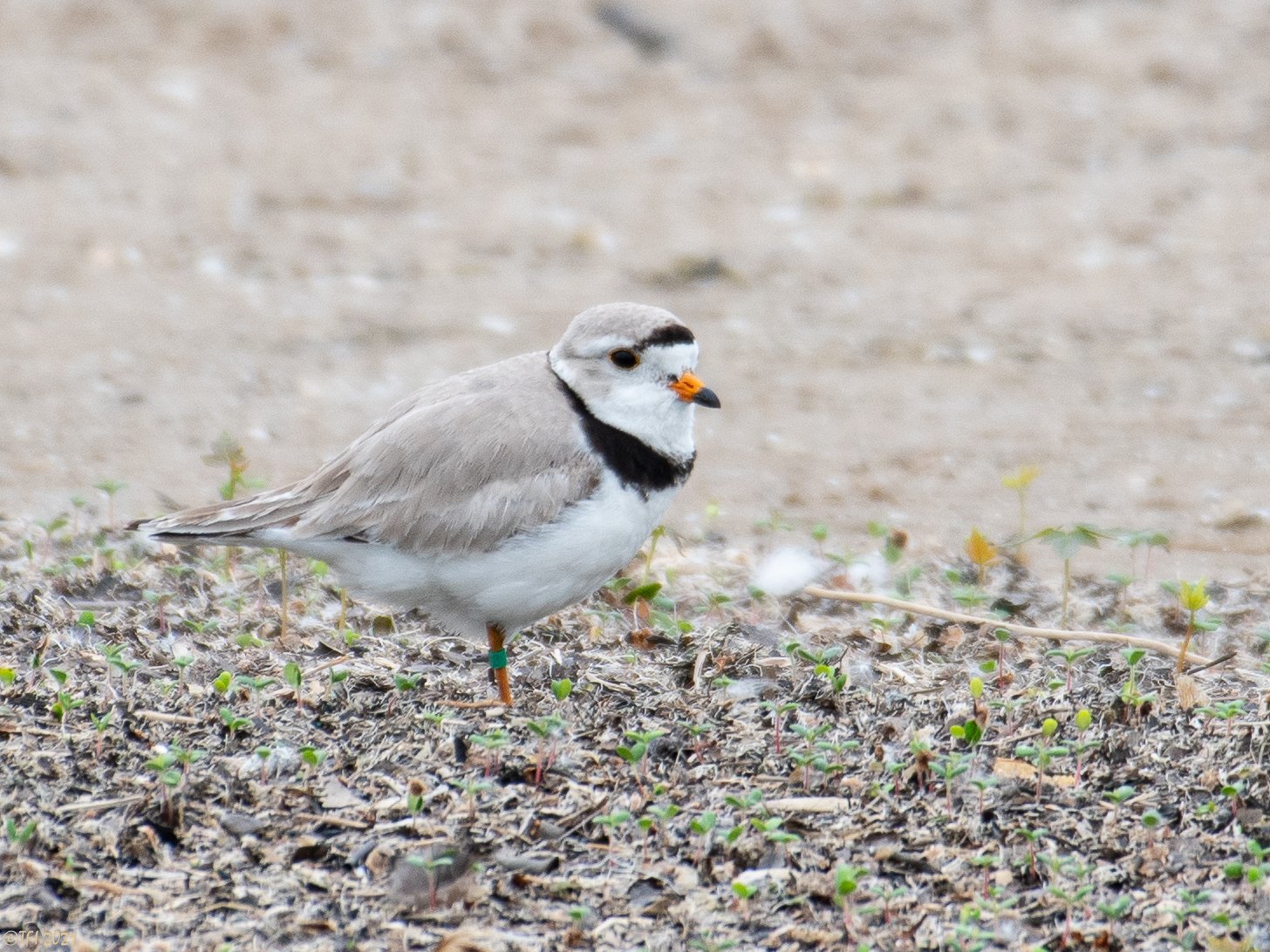
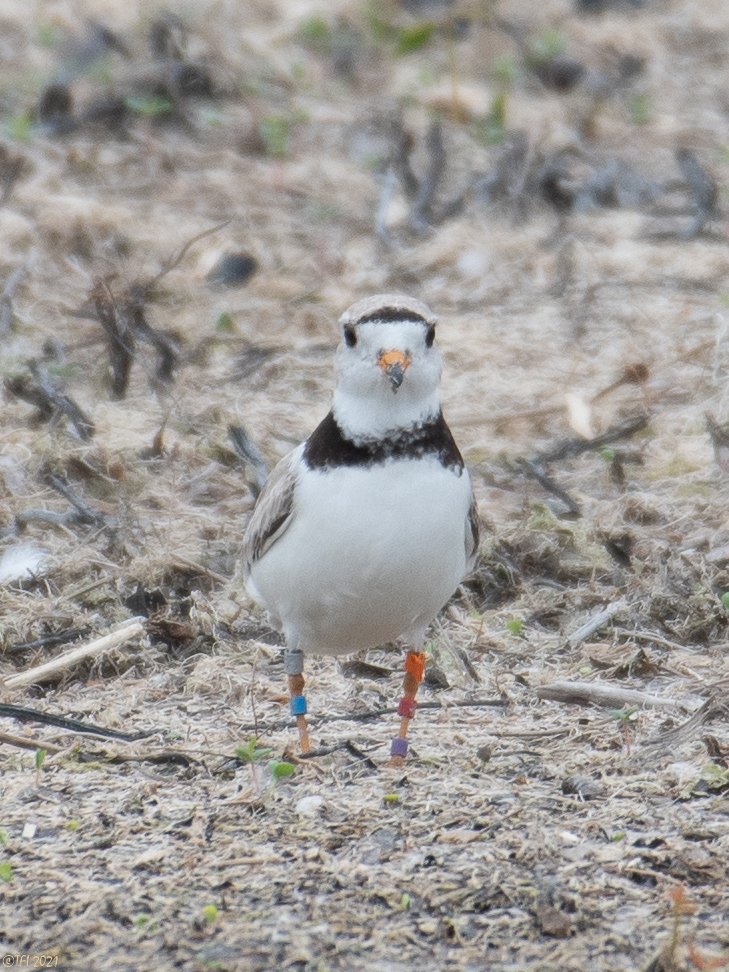
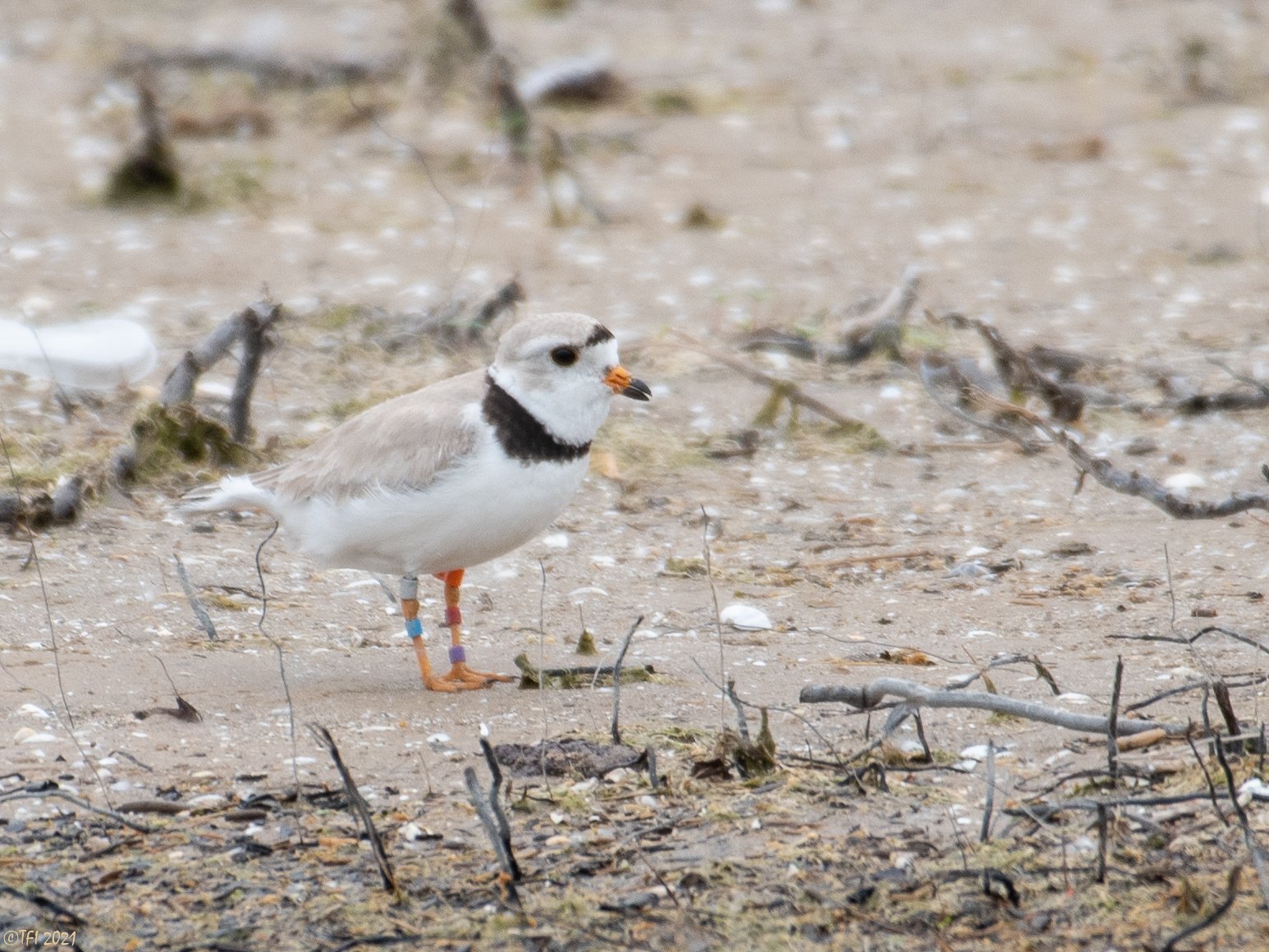
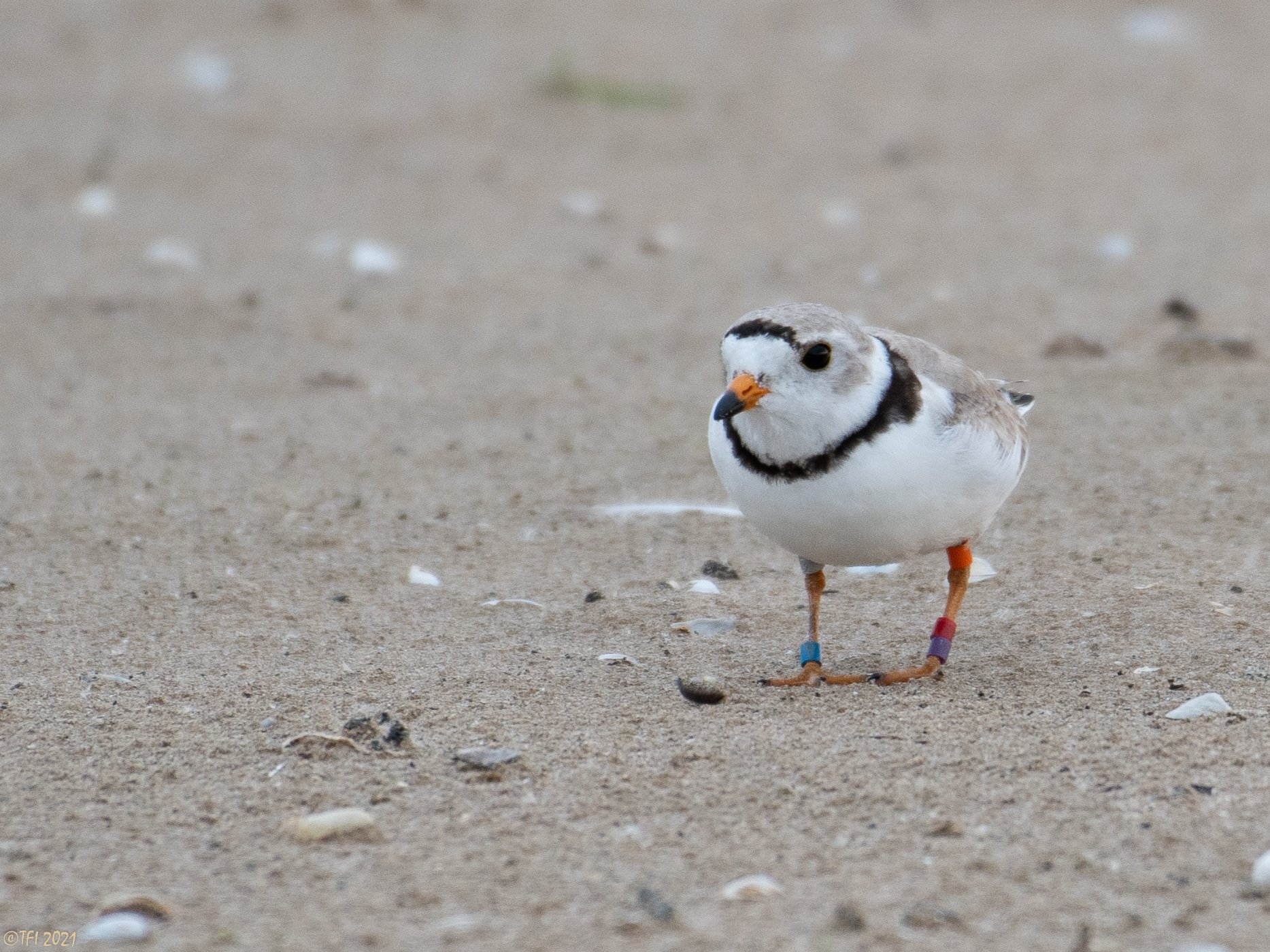
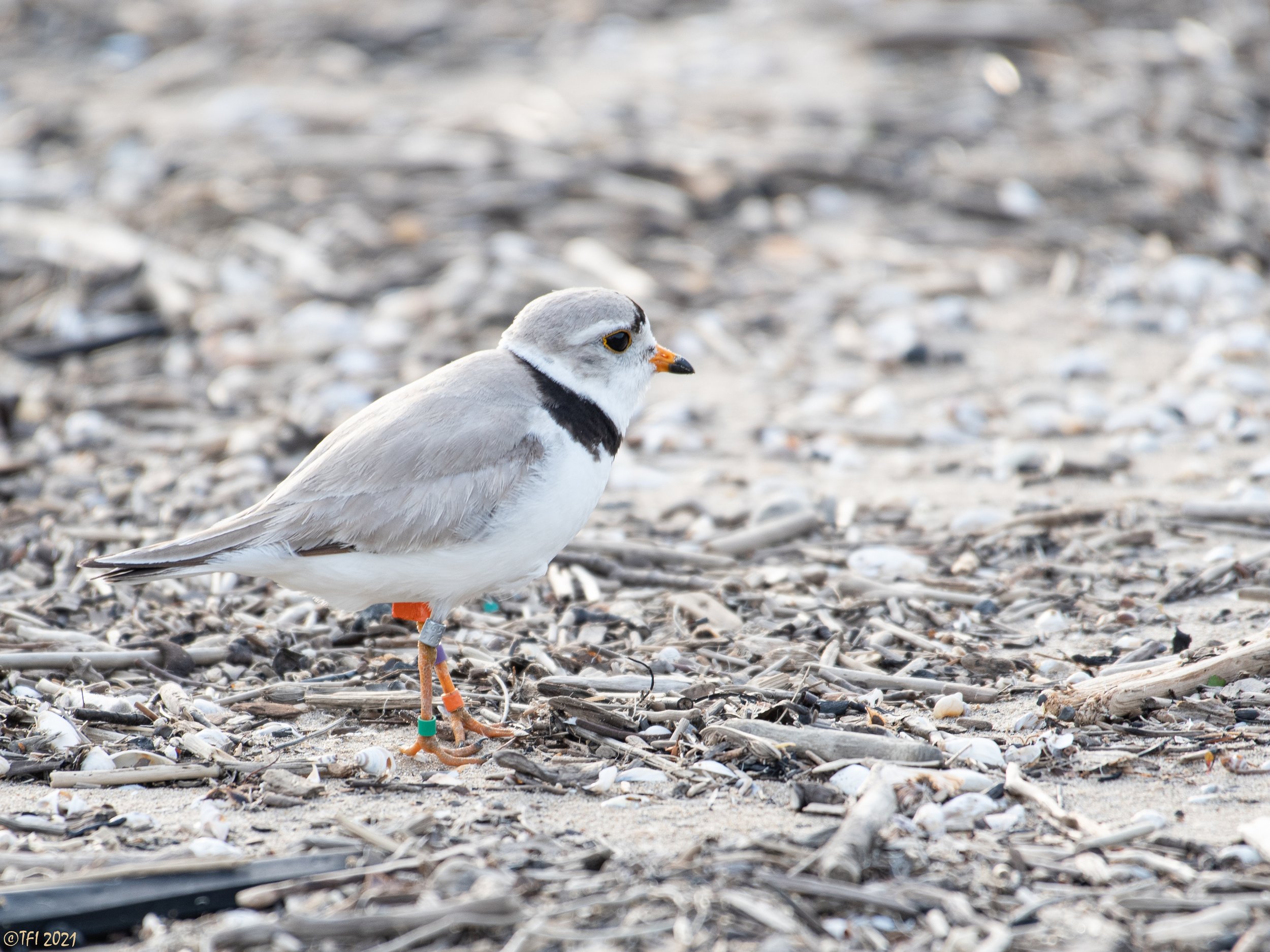
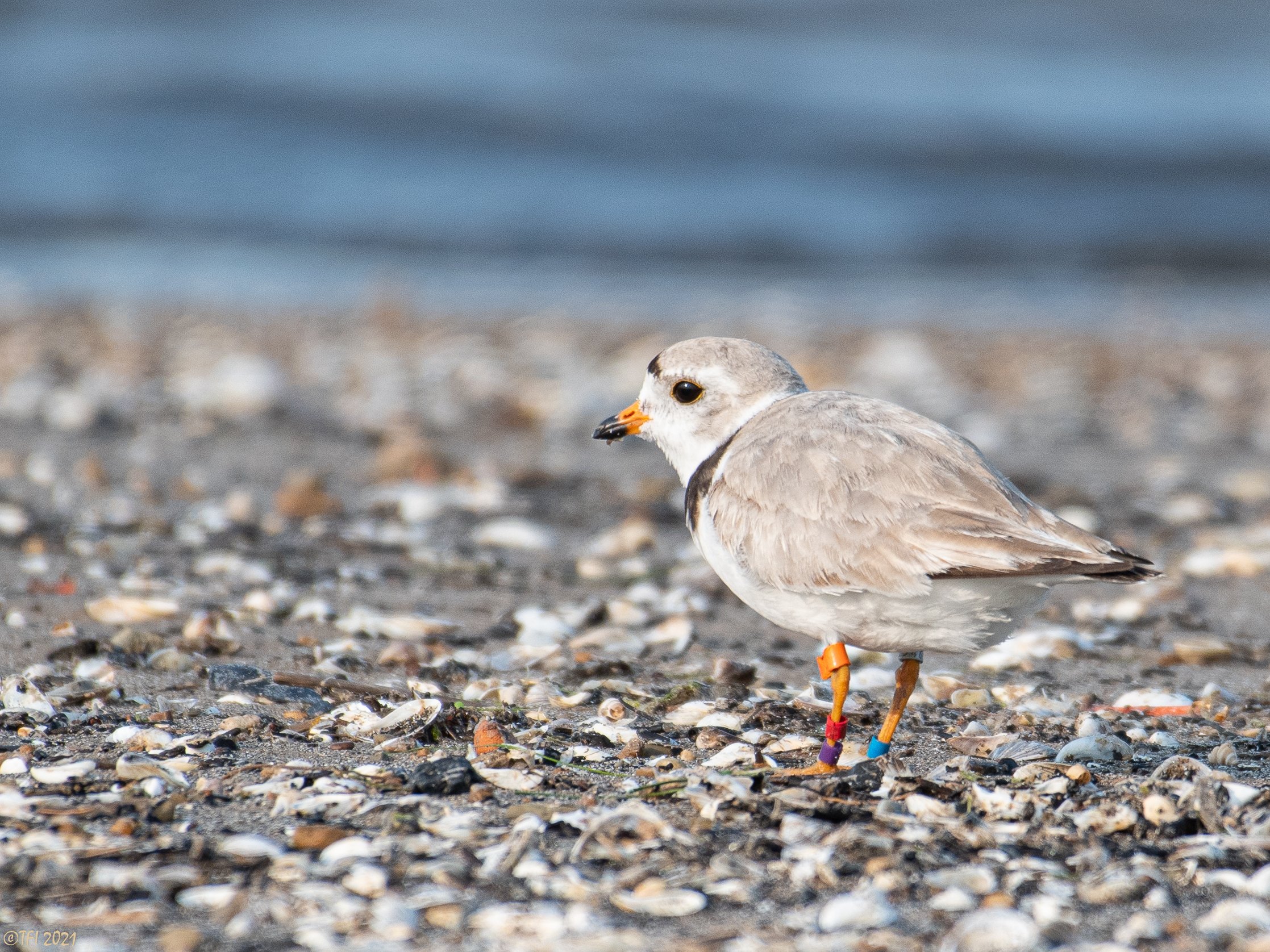

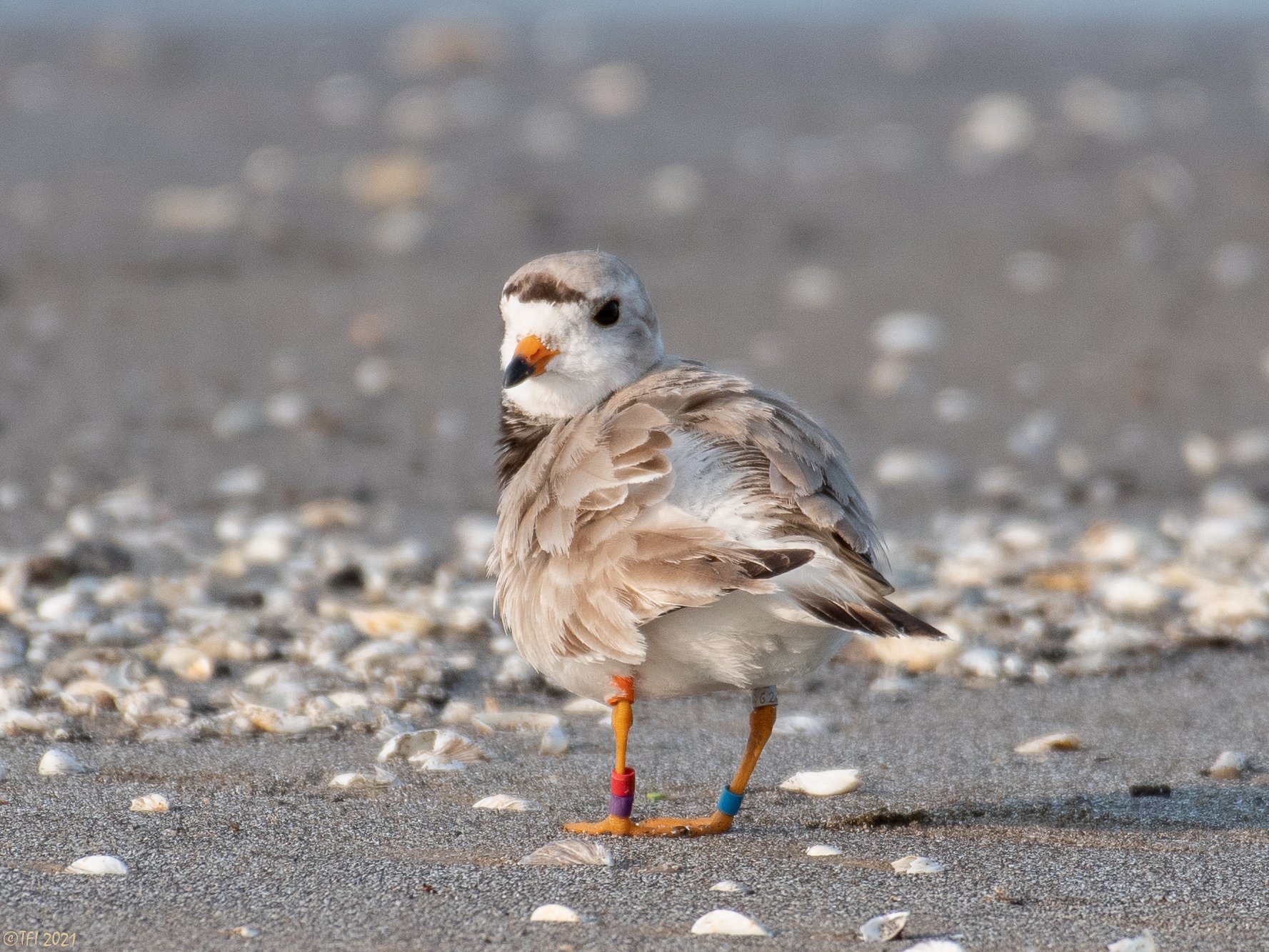
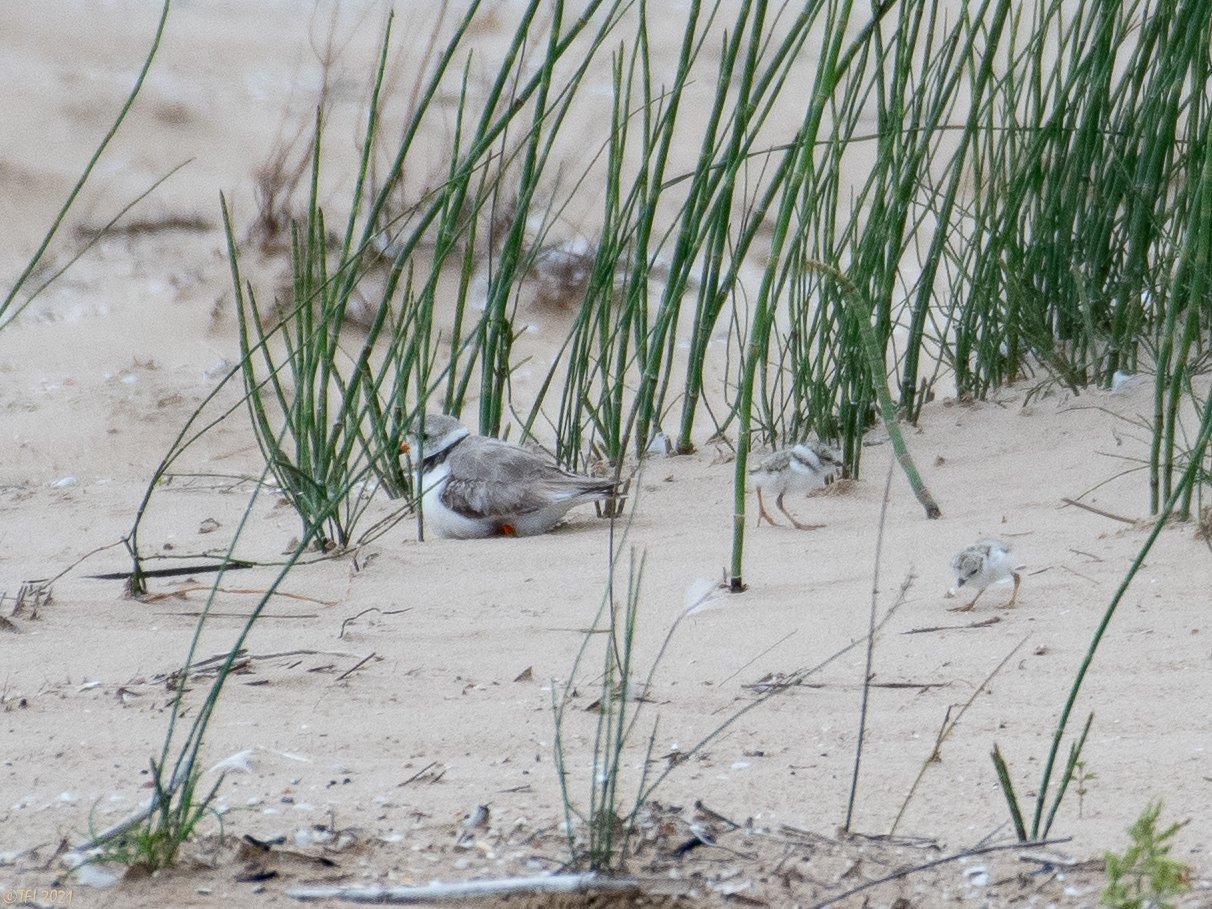
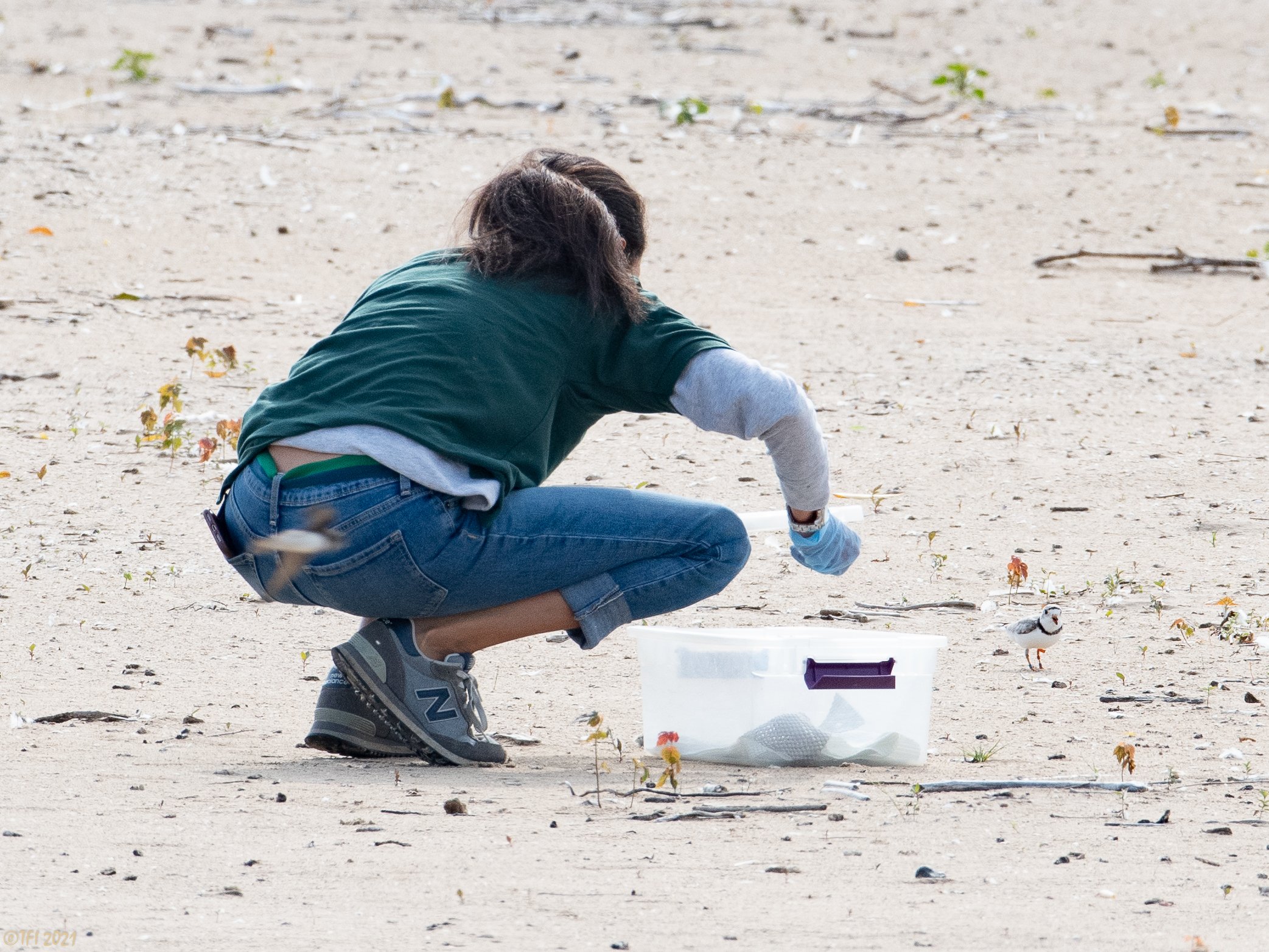
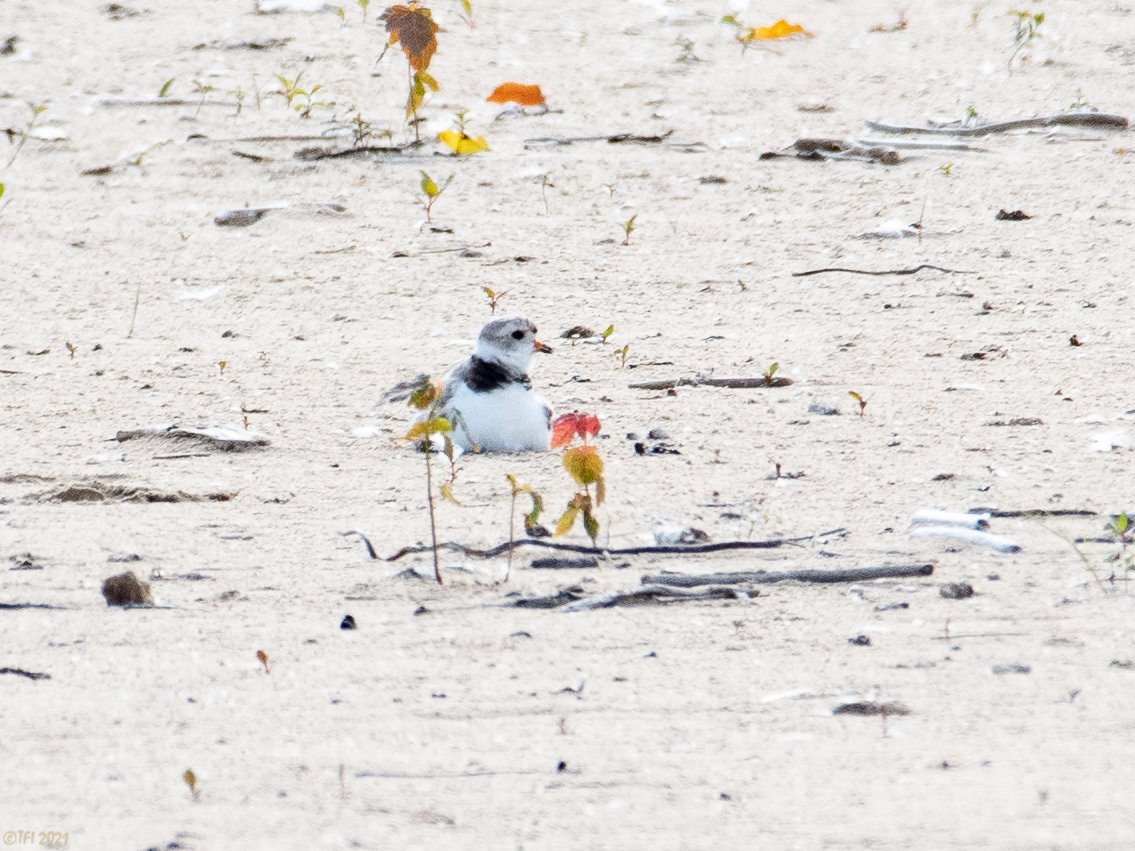
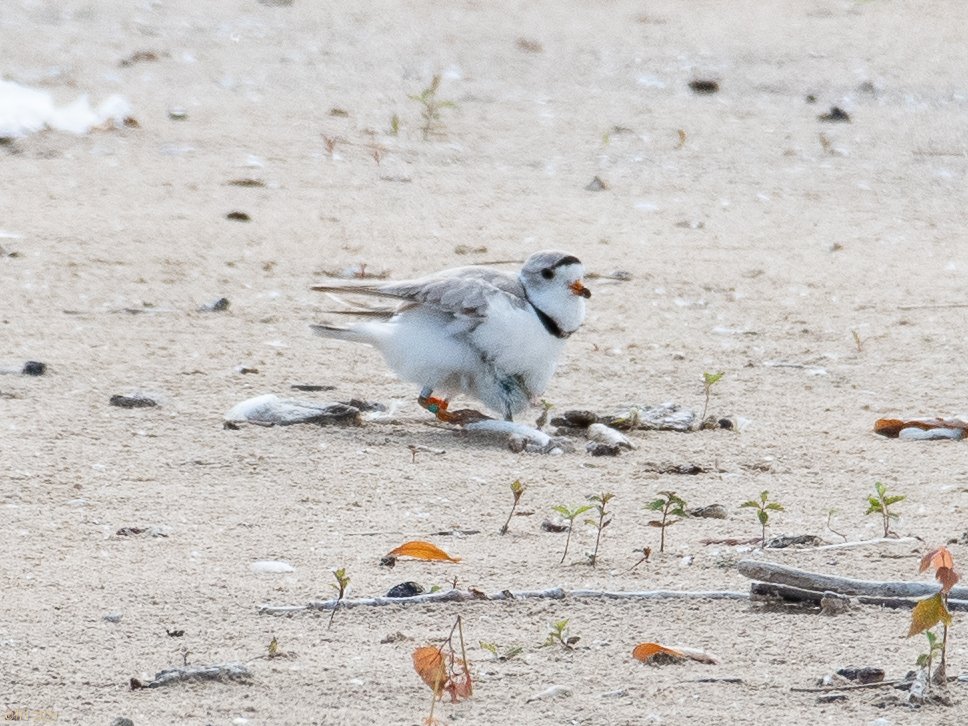
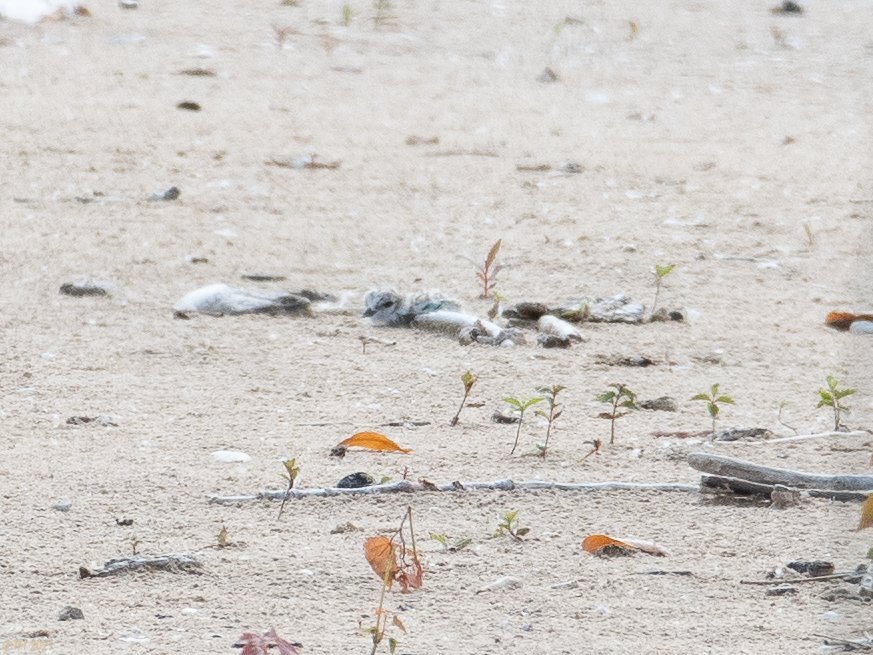
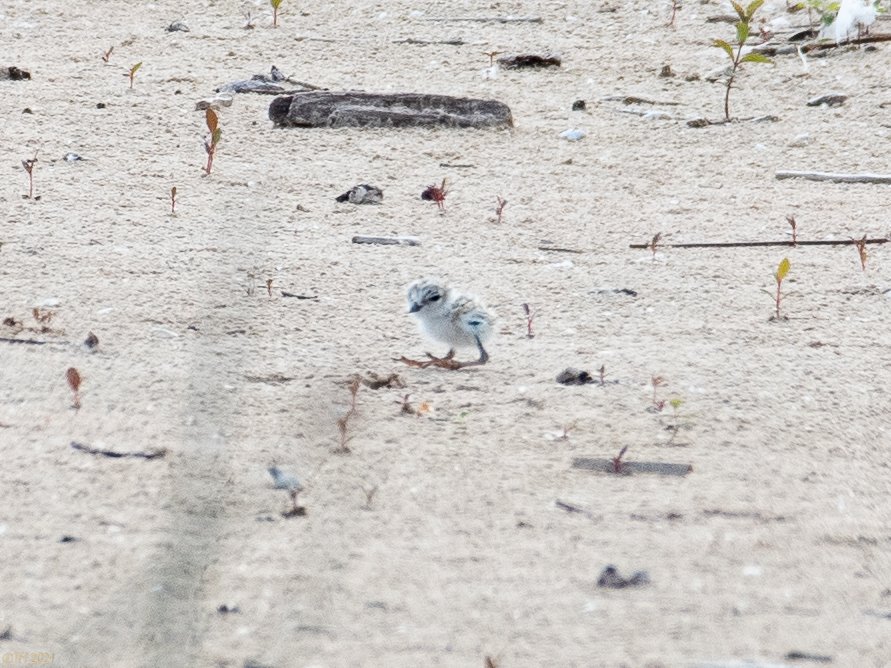
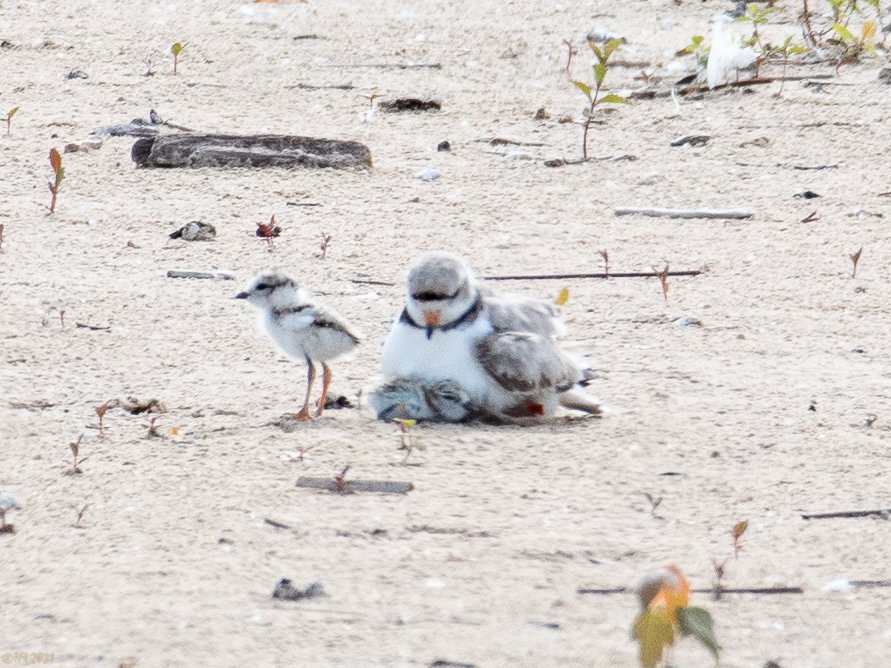
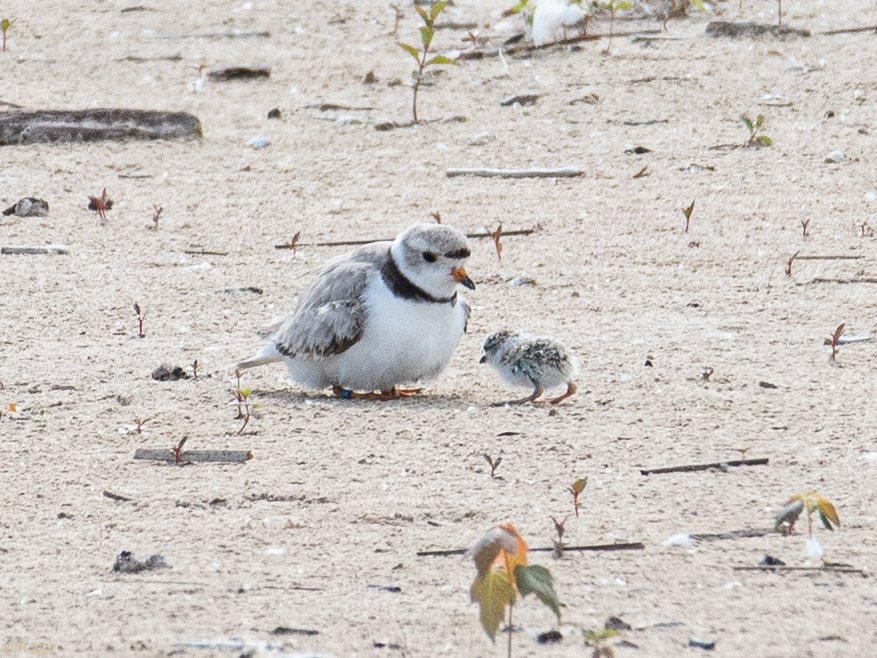
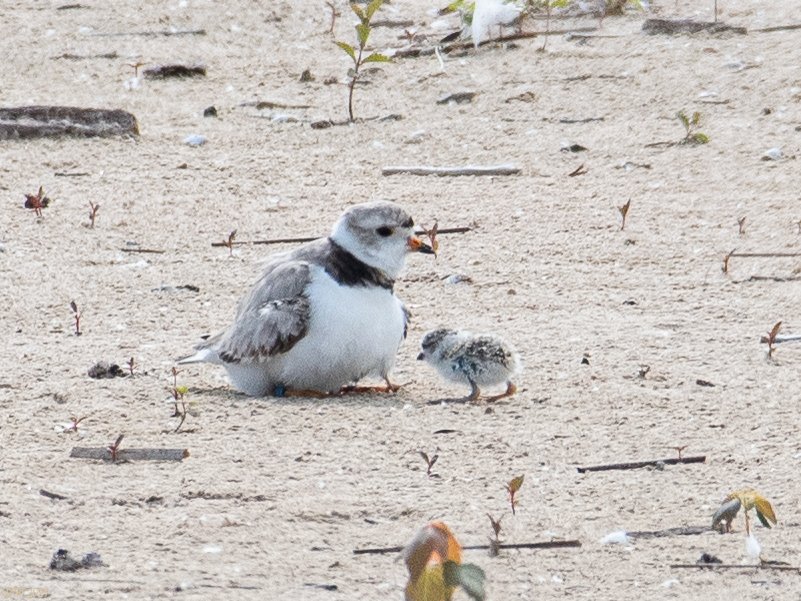
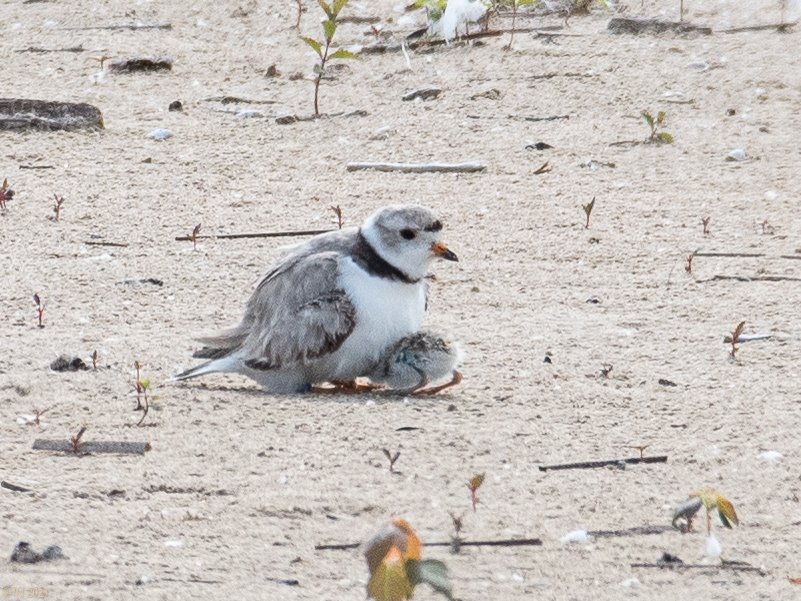

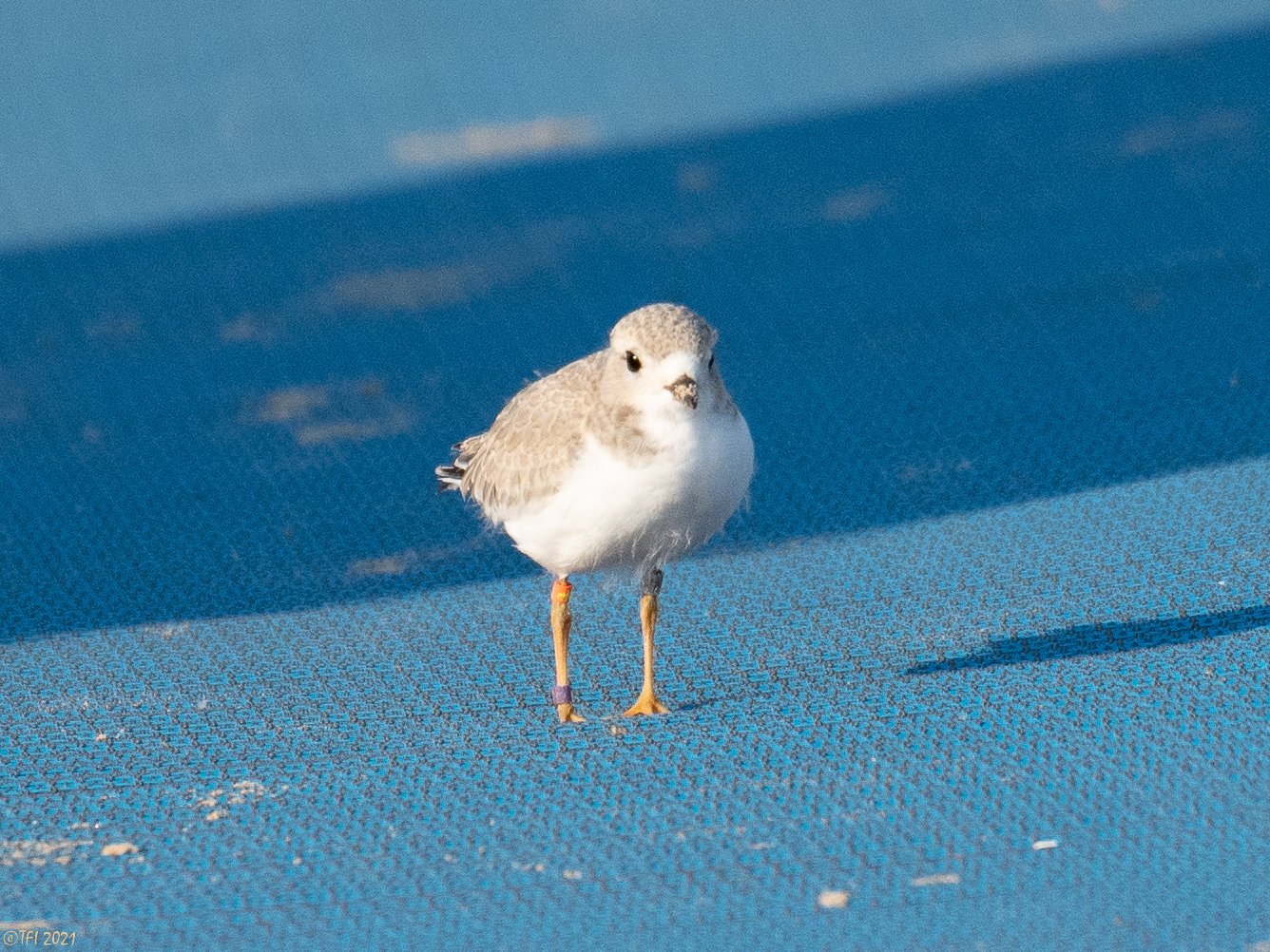

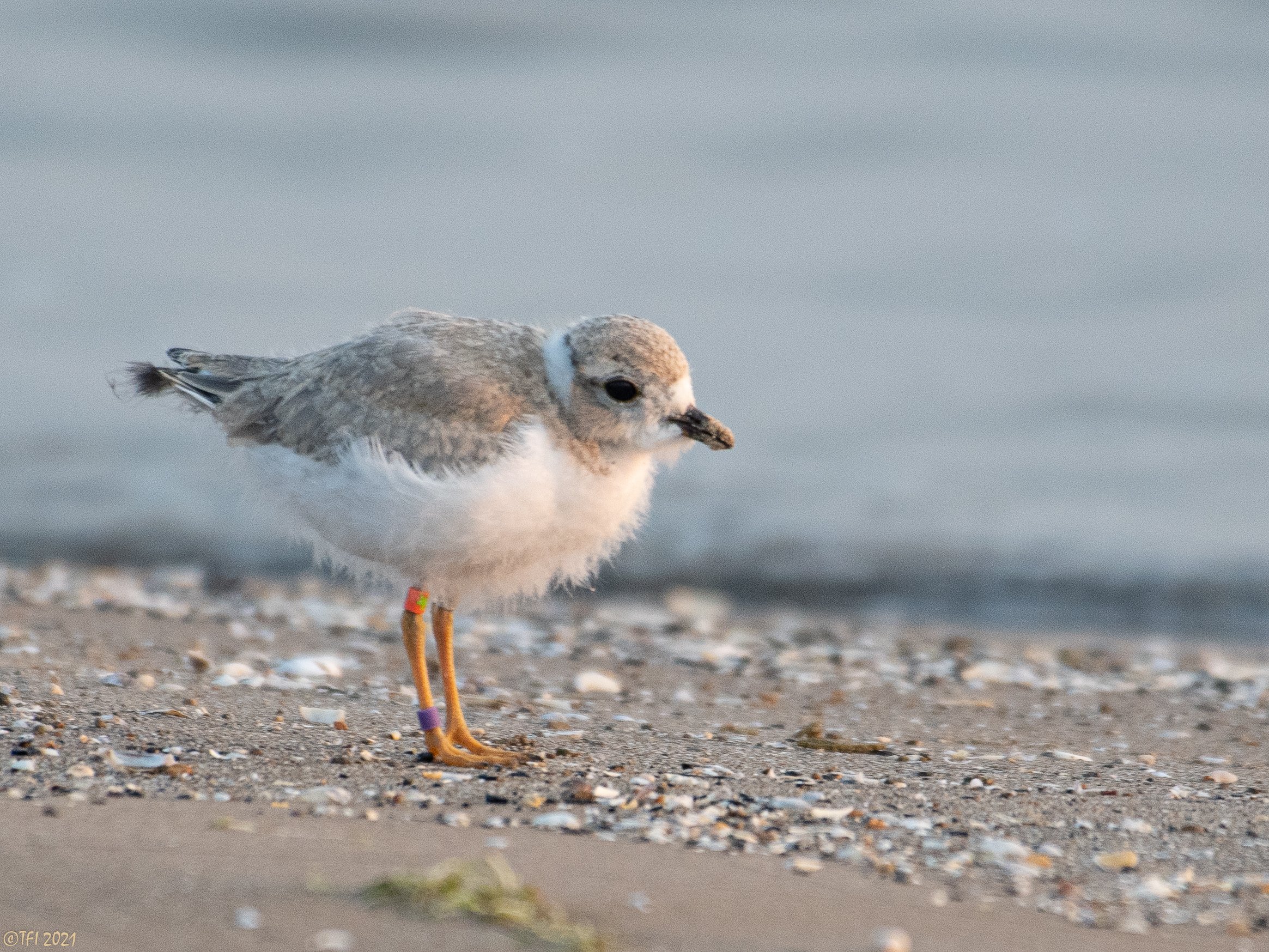


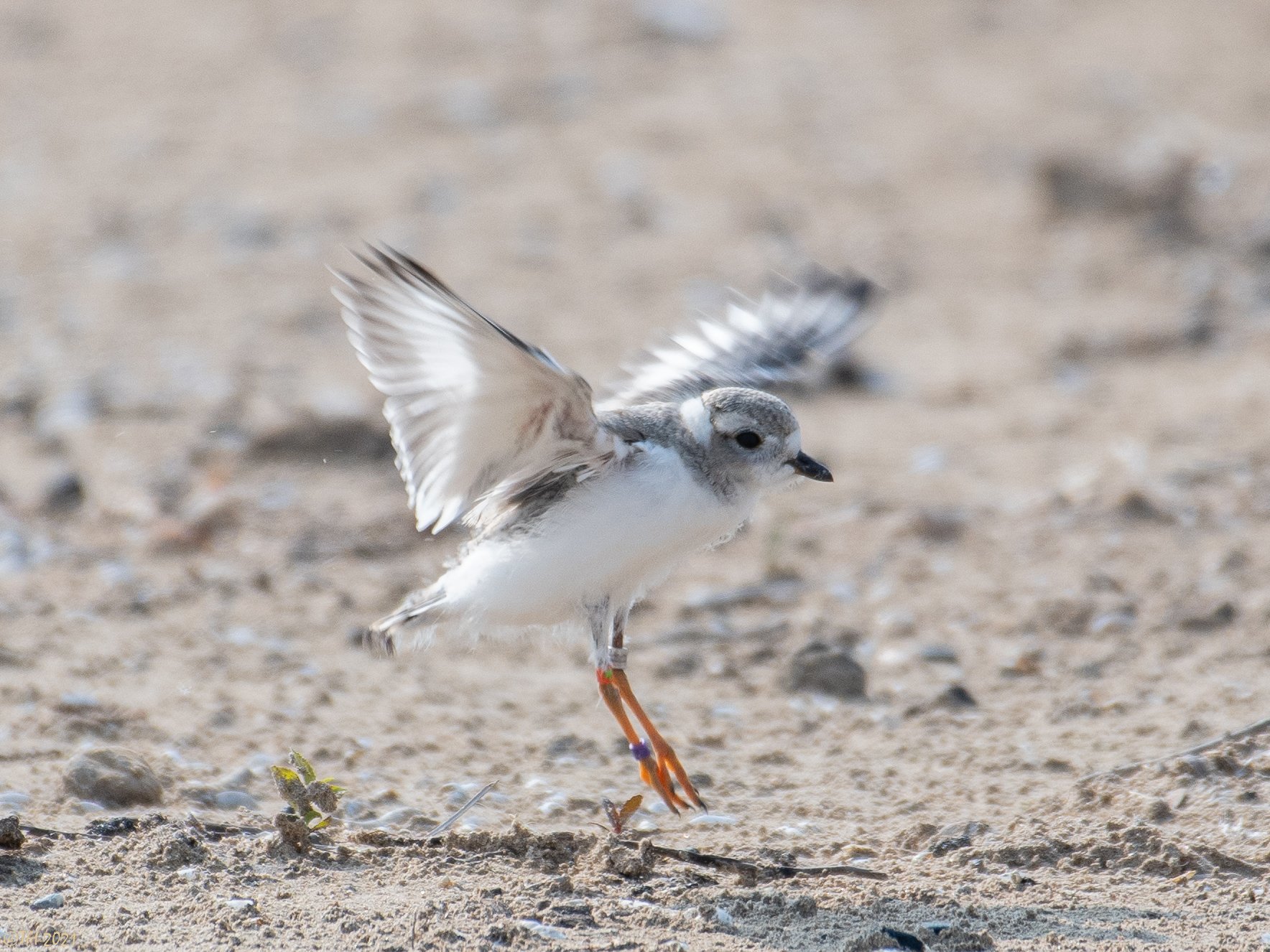
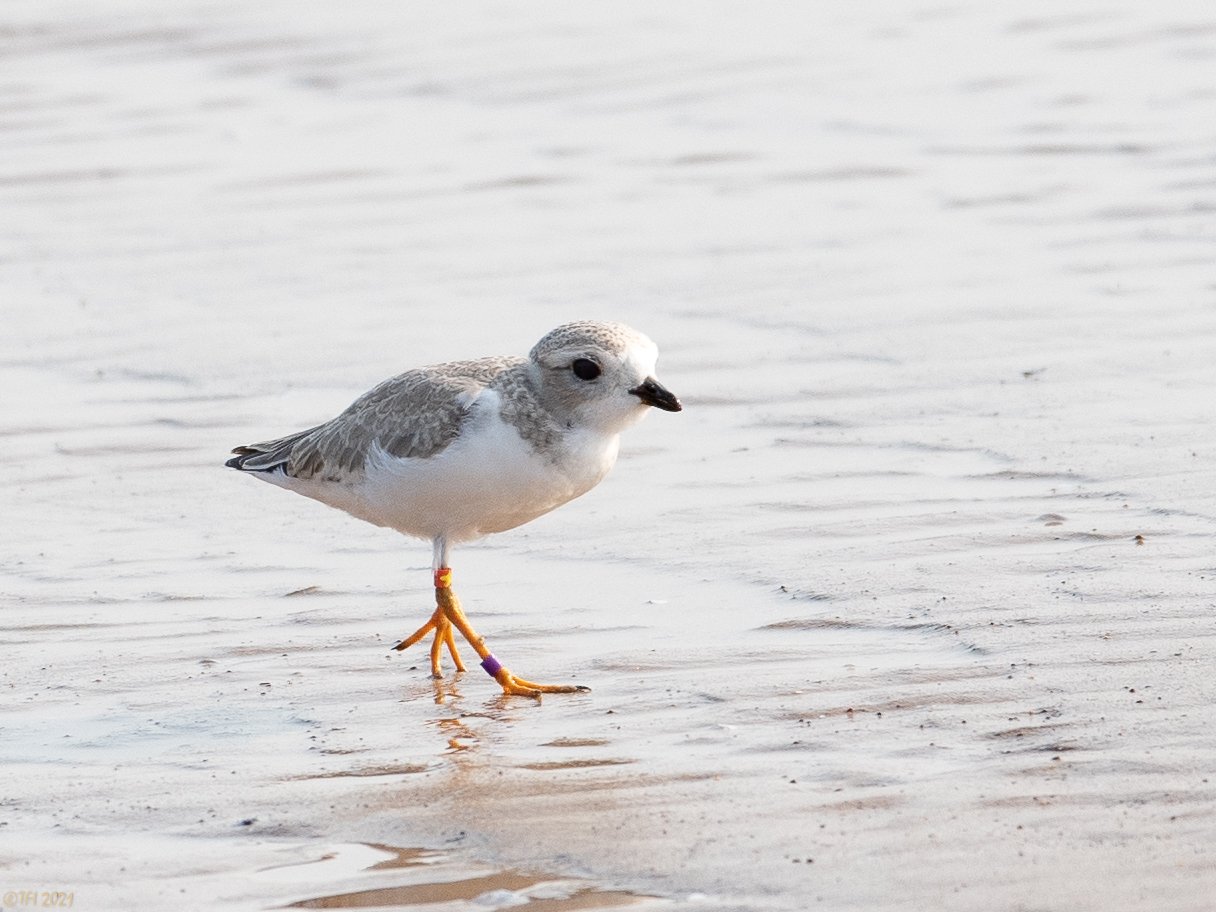
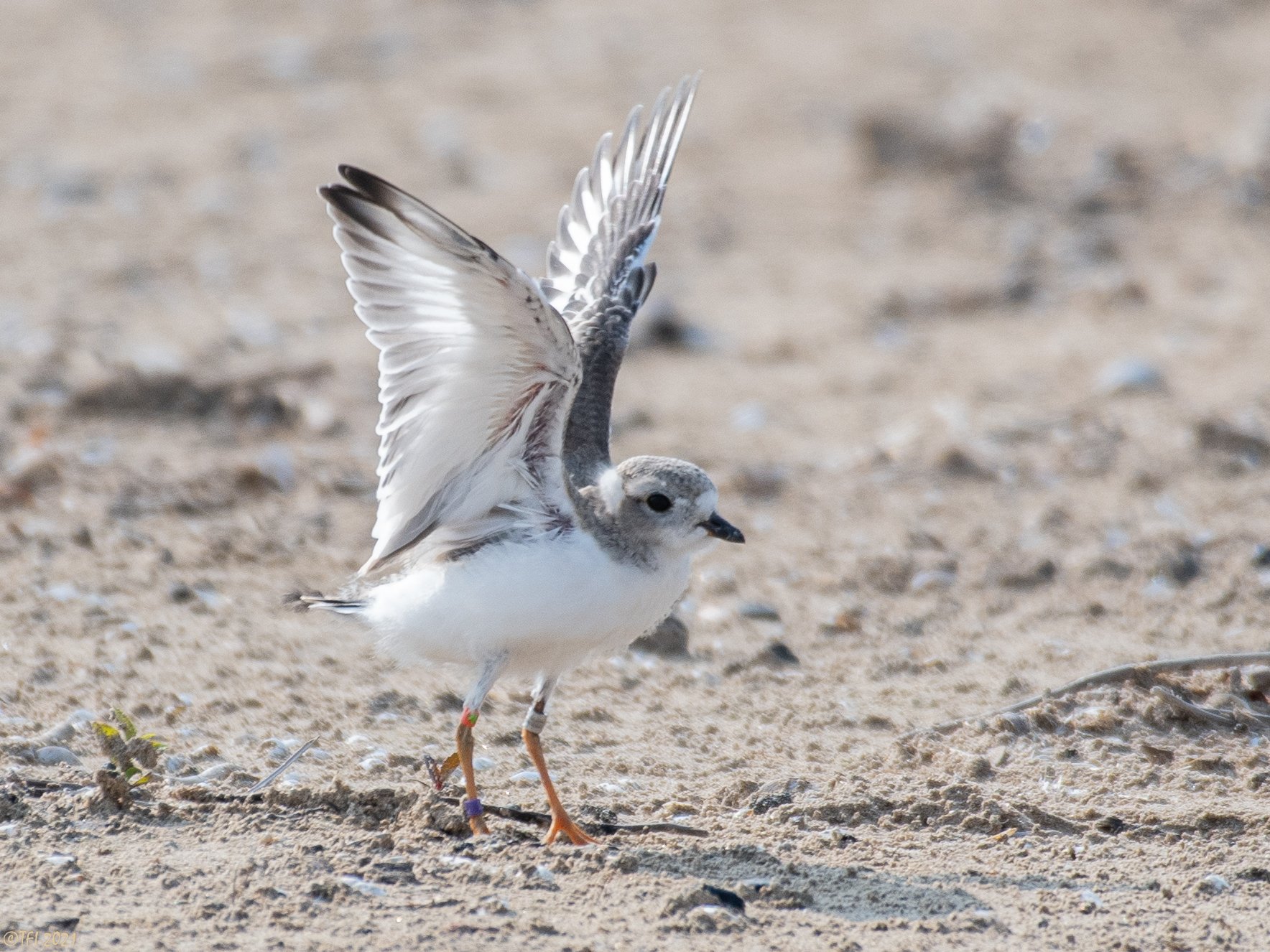
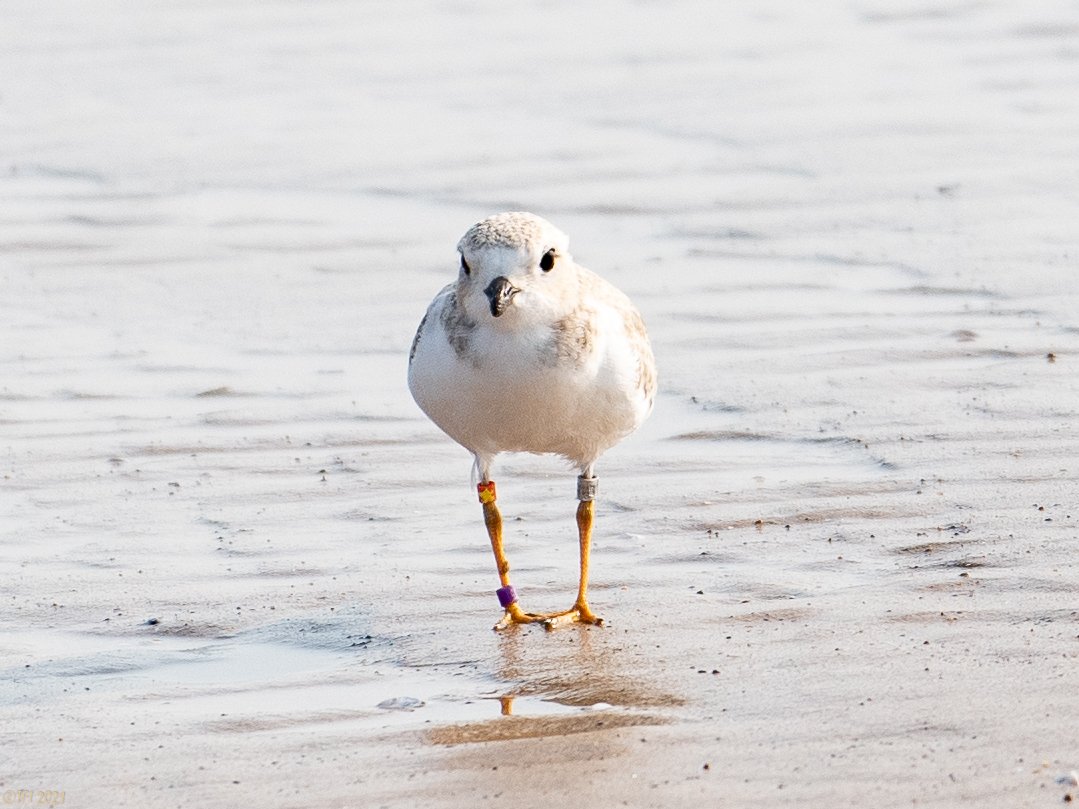
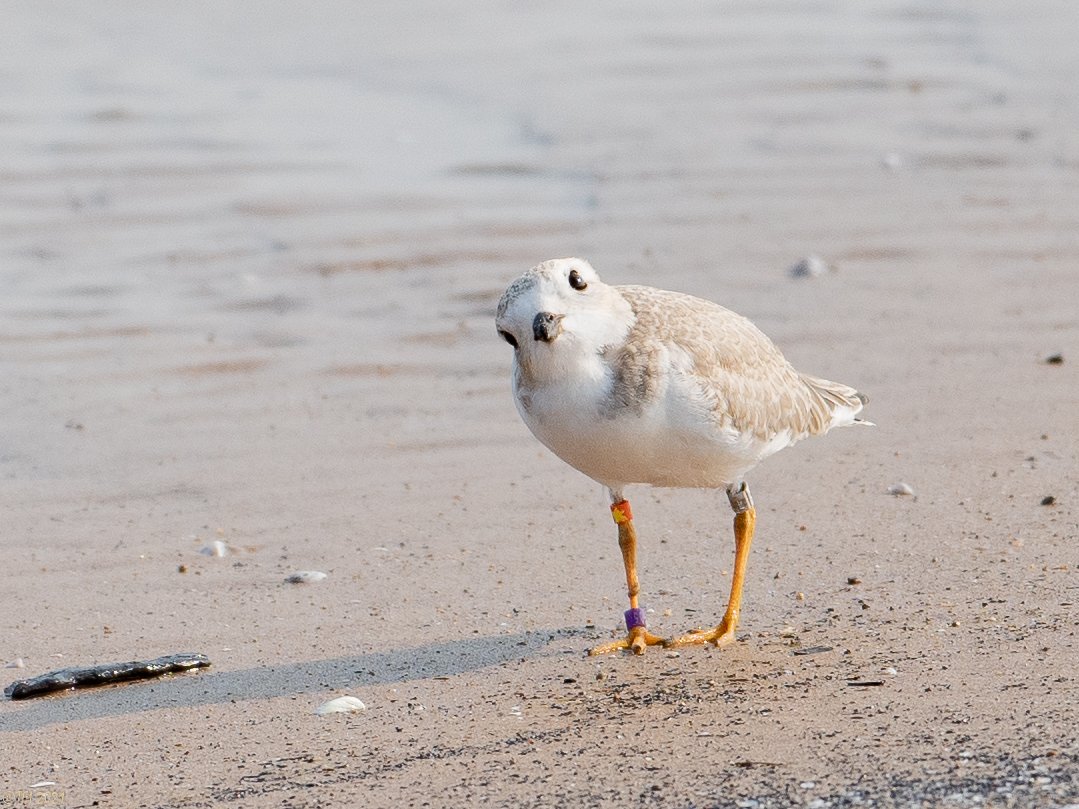
Nish and Nellie – 2021
Nish proudly carried his parents trailblazing genes when he nested with Nelly at Maumee Bay State Park in Ohio. Their nest was the first in OH in 83 years and garnered the love and support of ardent volunteers and fans. Nellie and Nish had four chicks. One was lost to predation before fledging. Two left for their wintering grounds, while one, Erie, stayed behind and fell ill. Erie was taken to the Detroit zoo to recover and will remain there as it was deemed that releasing her back into the wild would be detrimental to her. Her two siblings have not been spotted on wintering grounds or back in the Great Lakes as of this writing, and we are unclear of their fate. Nish and Nellie’s story lives on here.
2022
Armed with the knowledge collected over three seasons of doting on our Piping Plovers, we geared up for this to be our “best season ever.” Monty arrived on April 21 and we thought Rose would follow him soon. Winds were not very favorable out of Florida for a long time, but by the second week of May, they were such that they would been perfect for her migration from Anclote Key to Chicago. Unfortunately, Rose has not returned and we are afraid that she may be lost to us as well. Nish and Nellie are not back either.
Monty, April 21, 2022 at Montrose - Photo credit: Tamima Itani
With Monty’s sudden passing, hopes of Monty and Rose being reuniting again at Montrose are gone. The impact they have made on all involved and on the community at large will live on for years to come. To comfort myself, I like to believe in that perfect beach “out there”, invisible and inaccessible to humans, perfect for Piping Plovers, where the entire family is gathered, enjoying each other and their other Piping Plover friends, basking in the sun and eating juicy sand worms and bugs to their hearts content.
These little plovers that could have made one heck of a difference in our world.












